Quick filters:
Ottoman sultans Stock Photos and Images
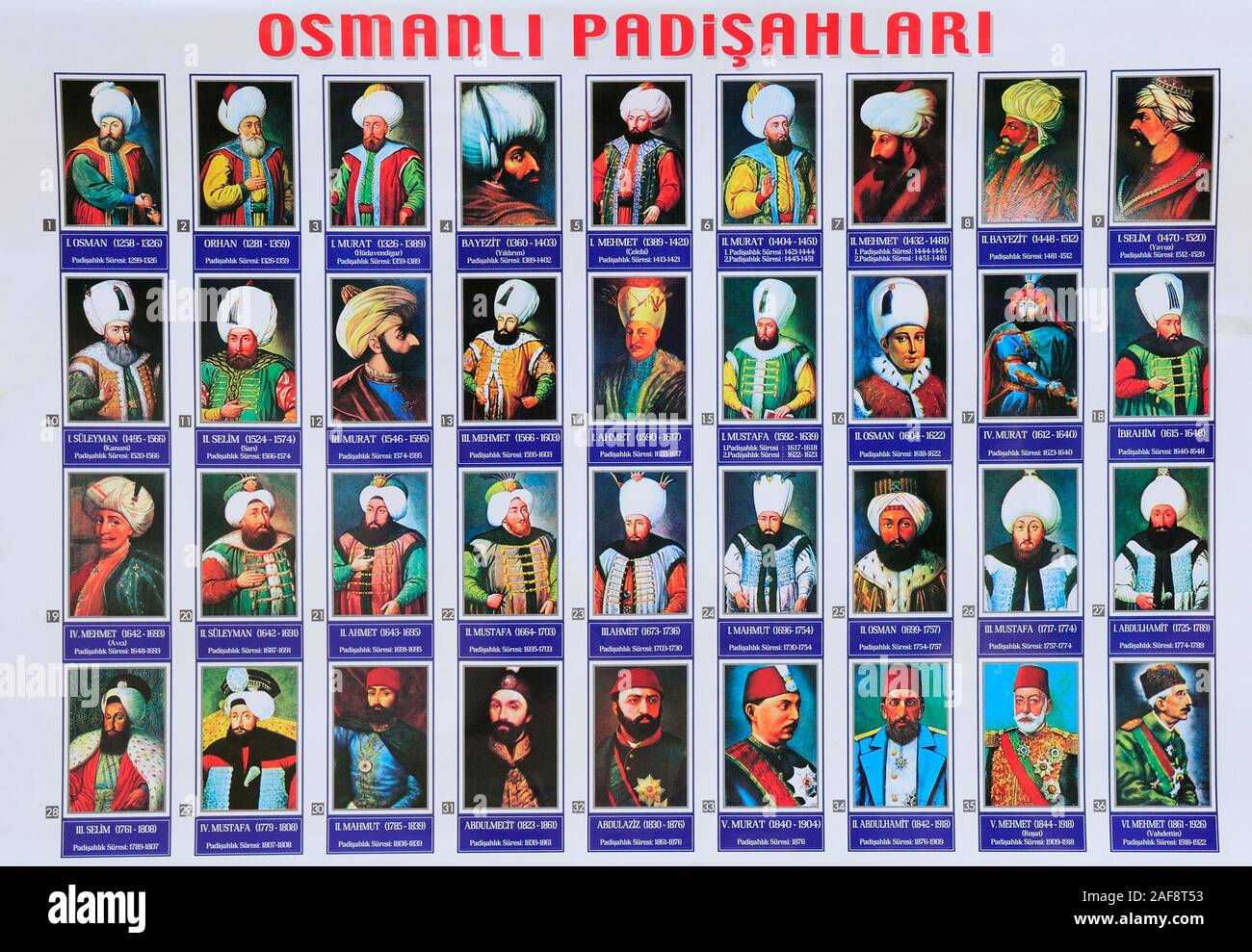 Ottoman sultans in a poster. Istanbul, Turkey Stock Photohttps://www.alamy.com/image-license-details/?v=1https://www.alamy.com/ottoman-sultans-in-a-poster-istanbul-turkey-image336411407.html
Ottoman sultans in a poster. Istanbul, Turkey Stock Photohttps://www.alamy.com/image-license-details/?v=1https://www.alamy.com/ottoman-sultans-in-a-poster-istanbul-turkey-image336411407.htmlRM2AF8T53–Ottoman sultans in a poster. Istanbul, Turkey
 Topkapi Palace Museum Istanbul Turkey Ottoman Sultans Stock Photohttps://www.alamy.com/image-license-details/?v=1https://www.alamy.com/stock-photo-topkapi-palace-museum-istanbul-turkey-ottoman-sultans-26245410.html
Topkapi Palace Museum Istanbul Turkey Ottoman Sultans Stock Photohttps://www.alamy.com/image-license-details/?v=1https://www.alamy.com/stock-photo-topkapi-palace-museum-istanbul-turkey-ottoman-sultans-26245410.htmlRMBEKG82–Topkapi Palace Museum Istanbul Turkey Ottoman Sultans
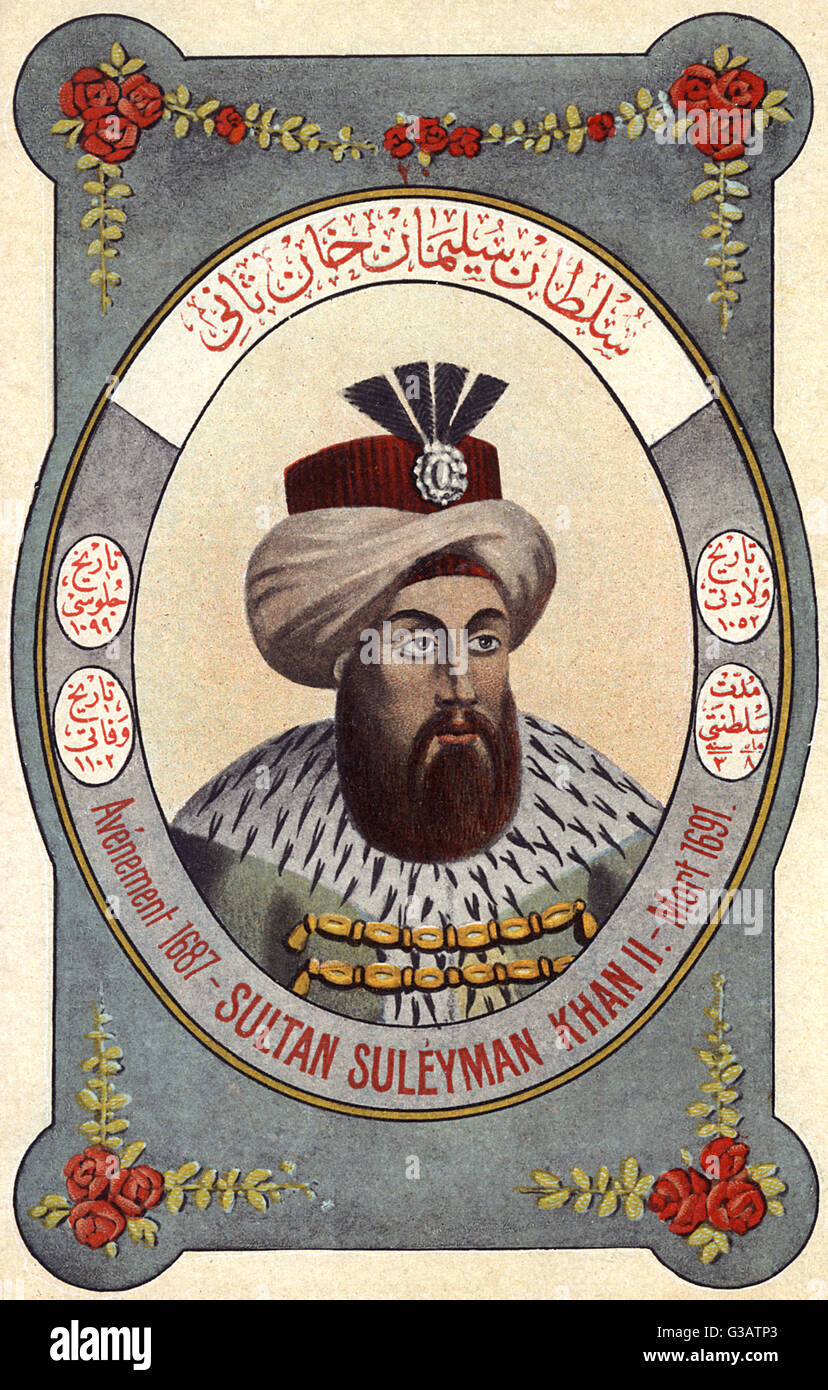 Sultan Suleiman II - ruler of the Ottoman Turks Stock Photohttps://www.alamy.com/image-license-details/?v=1https://www.alamy.com/stock-photo-sultan-suleiman-ii-ruler-of-the-ottoman-turks-105345131.html
Sultan Suleiman II - ruler of the Ottoman Turks Stock Photohttps://www.alamy.com/image-license-details/?v=1https://www.alamy.com/stock-photo-sultan-suleiman-ii-ruler-of-the-ottoman-turks-105345131.htmlRMG3ATP3–Sultan Suleiman II - ruler of the Ottoman Turks
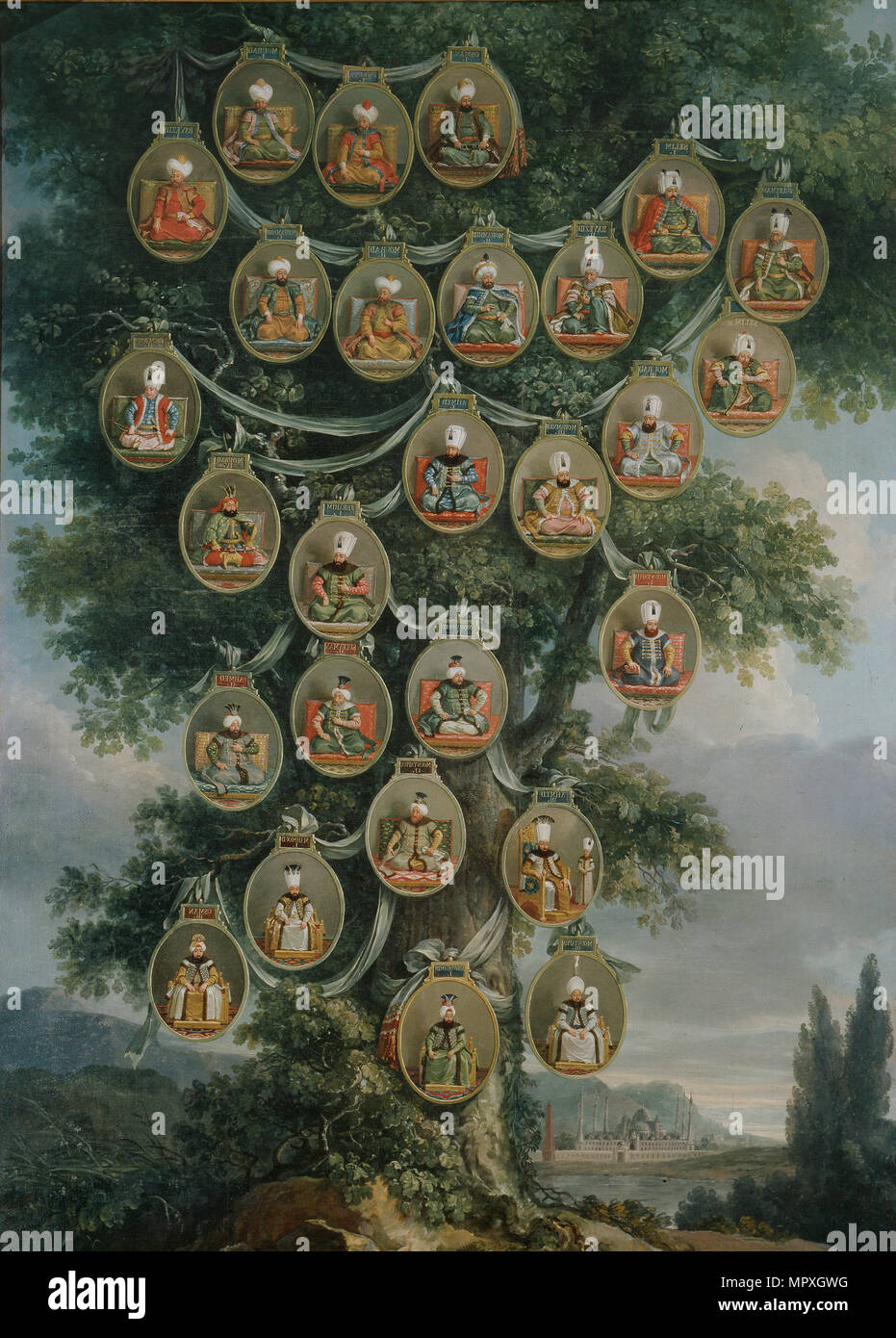 The Sultans of the Ottoman Empire. Stock Photohttps://www.alamy.com/image-license-details/?v=1https://www.alamy.com/the-sultans-of-the-ottoman-empire-image186210124.html
The Sultans of the Ottoman Empire. Stock Photohttps://www.alamy.com/image-license-details/?v=1https://www.alamy.com/the-sultans-of-the-ottoman-empire-image186210124.htmlRMMPXGWG–The Sultans of the Ottoman Empire.
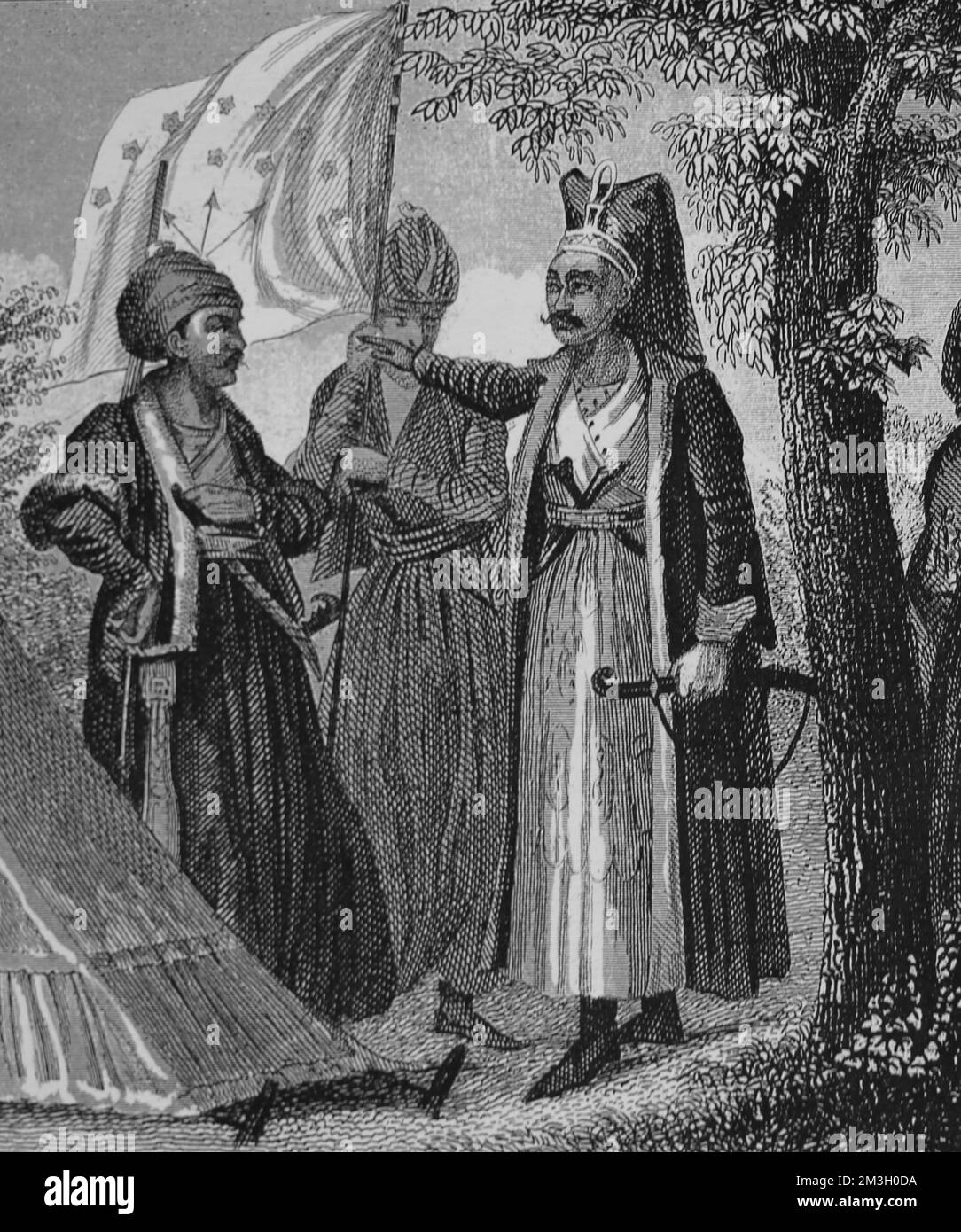 Ottoman Sultan's household troops. Janissary. Turkey. Stock Photohttps://www.alamy.com/image-license-details/?v=1https://www.alamy.com/ottoman-sultans-household-troops-janissary-turkey-image501318198.html
Ottoman Sultan's household troops. Janissary. Turkey. Stock Photohttps://www.alamy.com/image-license-details/?v=1https://www.alamy.com/ottoman-sultans-household-troops-janissary-turkey-image501318198.htmlRM2M3H0DA–Ottoman Sultan's household troops. Janissary. Turkey.
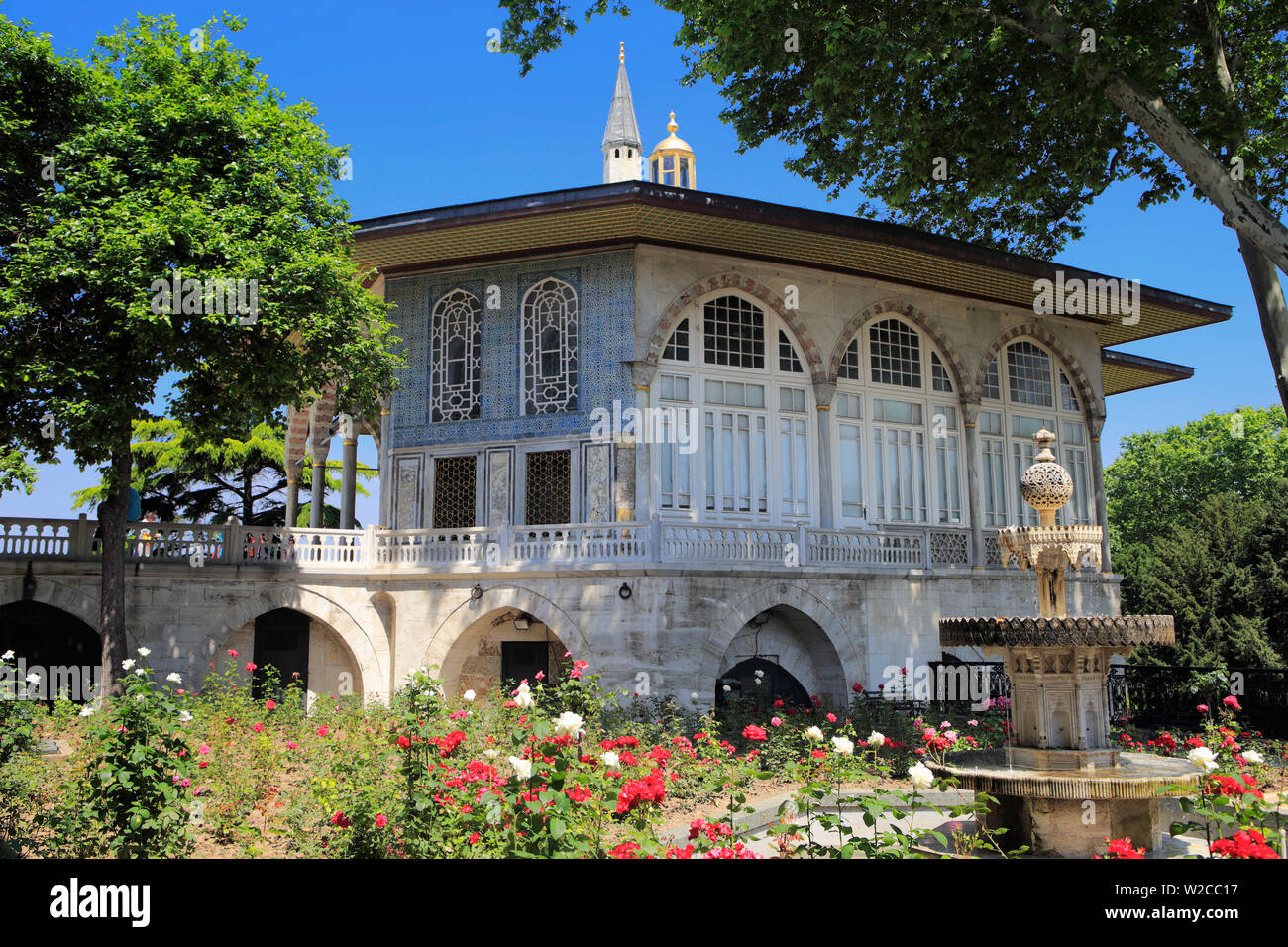 Revan Kiosk, Topkapi Palace, Ottoman sultans palace, Istanbul, Turkey Stock Photohttps://www.alamy.com/image-license-details/?v=1https://www.alamy.com/revan-kiosk-topkapi-palace-ottoman-sultans-palace-istanbul-turkey-image259657699.html
Revan Kiosk, Topkapi Palace, Ottoman sultans palace, Istanbul, Turkey Stock Photohttps://www.alamy.com/image-license-details/?v=1https://www.alamy.com/revan-kiosk-topkapi-palace-ottoman-sultans-palace-istanbul-turkey-image259657699.htmlRMW2CC17–Revan Kiosk, Topkapi Palace, Ottoman sultans palace, Istanbul, Turkey
 Ottoman Sultans turbeh in St. Sophia, Istanbul Turkey Stock Photohttps://www.alamy.com/image-license-details/?v=1https://www.alamy.com/stock-photo-ottoman-sultans-turbeh-in-st-sophia-istanbul-turkey-27764021.html
Ottoman Sultans turbeh in St. Sophia, Istanbul Turkey Stock Photohttps://www.alamy.com/image-license-details/?v=1https://www.alamy.com/stock-photo-ottoman-sultans-turbeh-in-st-sophia-istanbul-turkey-27764021.htmlRMBH4N85–Ottoman Sultans turbeh in St. Sophia, Istanbul Turkey
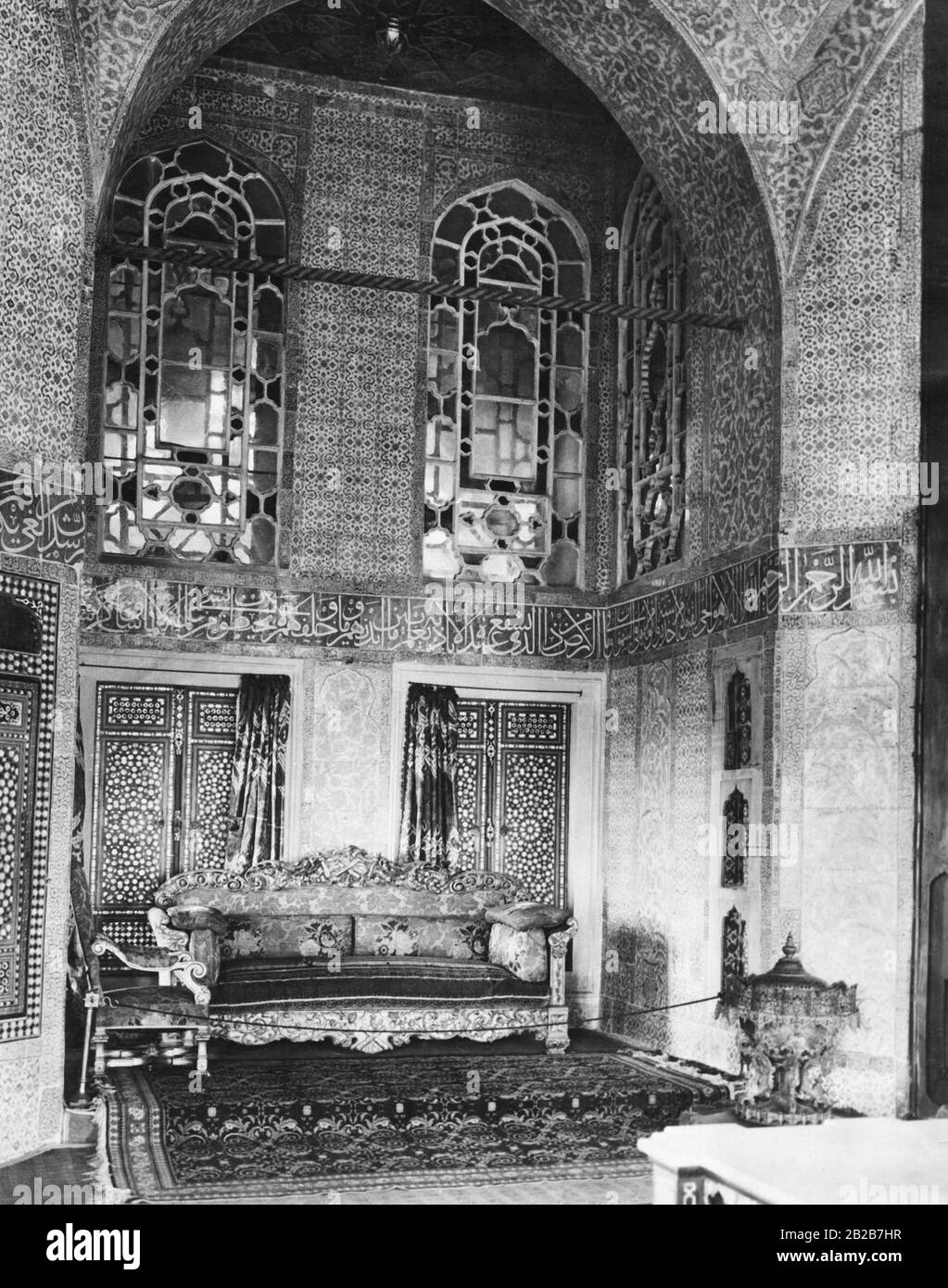 A room in an Ottoman sultan's palace, probably in the Topkapi Palace in Istanbul. Undated photo. Stock Photohttps://www.alamy.com/image-license-details/?v=1https://www.alamy.com/a-room-in-an-ottoman-sultans-palace-probably-in-the-topkapi-palace-in-istanbul-undated-photo-image345684131.html
A room in an Ottoman sultan's palace, probably in the Topkapi Palace in Istanbul. Undated photo. Stock Photohttps://www.alamy.com/image-license-details/?v=1https://www.alamy.com/a-room-in-an-ottoman-sultans-palace-probably-in-the-topkapi-palace-in-istanbul-undated-photo-image345684131.htmlRM2B2B7HR–A room in an Ottoman sultan's palace, probably in the Topkapi Palace in Istanbul. Undated photo.
 I Suleiman Suleyman the Magnificent 1494-1566 Ottoman Emperor one of the greatest of the Ottoman Sultans Stock Photohttps://www.alamy.com/image-license-details/?v=1https://www.alamy.com/i-suleiman-suleyman-the-magnificent-1494-1566-ottoman-emperor-one-of-the-greatest-of-the-ottoman-sultans-image268801491.html
I Suleiman Suleyman the Magnificent 1494-1566 Ottoman Emperor one of the greatest of the Ottoman Sultans Stock Photohttps://www.alamy.com/image-license-details/?v=1https://www.alamy.com/i-suleiman-suleyman-the-magnificent-1494-1566-ottoman-emperor-one-of-the-greatest-of-the-ottoman-sultans-image268801491.htmlRMWH8Y17–I Suleiman Suleyman the Magnificent 1494-1566 Ottoman Emperor one of the greatest of the Ottoman Sultans
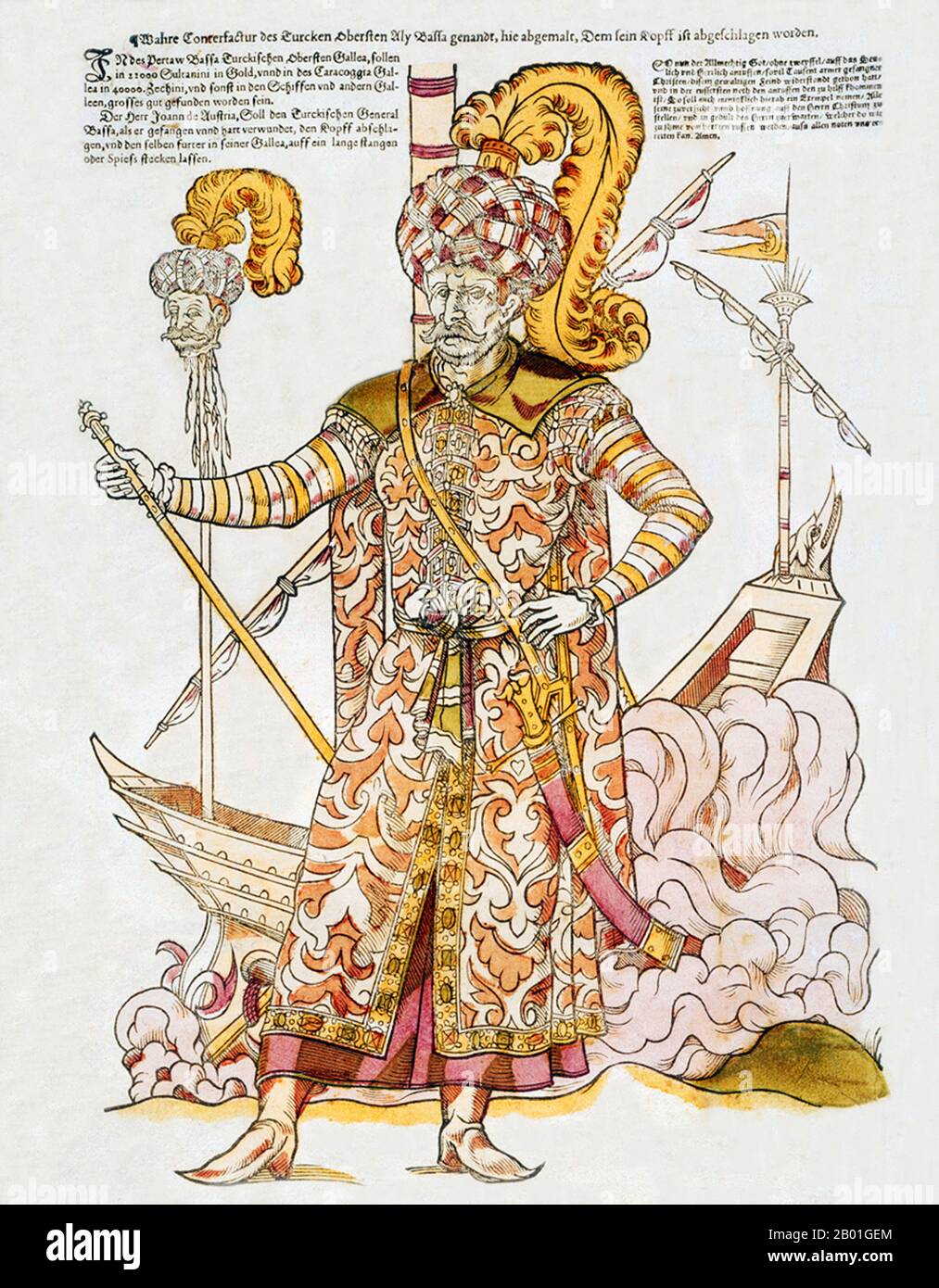 Turkey/Germany: Müezzinzade Ali Pasha (-7 October 1571), Ottoman statesman and Grand Admiral (Kapudan Pasha). Woodcut broadsheet, 1571. Ali Pasha was commander-in-chief of the Ottoman naval forces at the Battle of Lepanto on 7 October 1571. Selim had entrusted him with one of the most precious possessions of the Ottoman Sultans, the great 'Banner of the Caliphs', a huge green banner heavily embroidered with texts from the Qur'an and with the name of Allah emblazoned upon it 28,900 times in golden letters. It was intended to provide an incentive for him and his men to do their best in battle. Stock Photohttps://www.alamy.com/image-license-details/?v=1https://www.alamy.com/turkeygermany-mezzinzade-ali-pasha-7-october-1571-ottoman-statesman-and-grand-admiral-kapudan-pasha-woodcut-broadsheet-1571-ali-pasha-was-commander-in-chief-of-the-ottoman-naval-forces-at-the-battle-of-lepanto-on-7-october-1571-selim-had-entrusted-him-with-one-of-the-most-precious-possessions-of-the-ottoman-sultans-the-great-banner-of-the-caliphs-a-huge-green-banner-heavily-embroidered-with-texts-from-the-quran-and-with-the-name-of-allah-emblazoned-upon-it-28900-times-in-golden-letters-it-was-intended-to-provide-an-incentive-for-him-and-his-men-to-do-their-best-in-battle-image344242268.html
Turkey/Germany: Müezzinzade Ali Pasha (-7 October 1571), Ottoman statesman and Grand Admiral (Kapudan Pasha). Woodcut broadsheet, 1571. Ali Pasha was commander-in-chief of the Ottoman naval forces at the Battle of Lepanto on 7 October 1571. Selim had entrusted him with one of the most precious possessions of the Ottoman Sultans, the great 'Banner of the Caliphs', a huge green banner heavily embroidered with texts from the Qur'an and with the name of Allah emblazoned upon it 28,900 times in golden letters. It was intended to provide an incentive for him and his men to do their best in battle. Stock Photohttps://www.alamy.com/image-license-details/?v=1https://www.alamy.com/turkeygermany-mezzinzade-ali-pasha-7-october-1571-ottoman-statesman-and-grand-admiral-kapudan-pasha-woodcut-broadsheet-1571-ali-pasha-was-commander-in-chief-of-the-ottoman-naval-forces-at-the-battle-of-lepanto-on-7-october-1571-selim-had-entrusted-him-with-one-of-the-most-precious-possessions-of-the-ottoman-sultans-the-great-banner-of-the-caliphs-a-huge-green-banner-heavily-embroidered-with-texts-from-the-quran-and-with-the-name-of-allah-emblazoned-upon-it-28900-times-in-golden-letters-it-was-intended-to-provide-an-incentive-for-him-and-his-men-to-do-their-best-in-battle-image344242268.htmlRM2B01GEM–Turkey/Germany: Müezzinzade Ali Pasha (-7 October 1571), Ottoman statesman and Grand Admiral (Kapudan Pasha). Woodcut broadsheet, 1571. Ali Pasha was commander-in-chief of the Ottoman naval forces at the Battle of Lepanto on 7 October 1571. Selim had entrusted him with one of the most precious possessions of the Ottoman Sultans, the great 'Banner of the Caliphs', a huge green banner heavily embroidered with texts from the Qur'an and with the name of Allah emblazoned upon it 28,900 times in golden letters. It was intended to provide an incentive for him and his men to do their best in battle.
 Artwork of traditional Ottoman Sultans Tugra Stock Photohttps://www.alamy.com/image-license-details/?v=1https://www.alamy.com/artwork-of-traditional-ottoman-sultans-tugra-image185751186.html
Artwork of traditional Ottoman Sultans Tugra Stock Photohttps://www.alamy.com/image-license-details/?v=1https://www.alamy.com/artwork-of-traditional-ottoman-sultans-tugra-image185751186.htmlRFMP5KEX–Artwork of traditional Ottoman Sultans Tugra
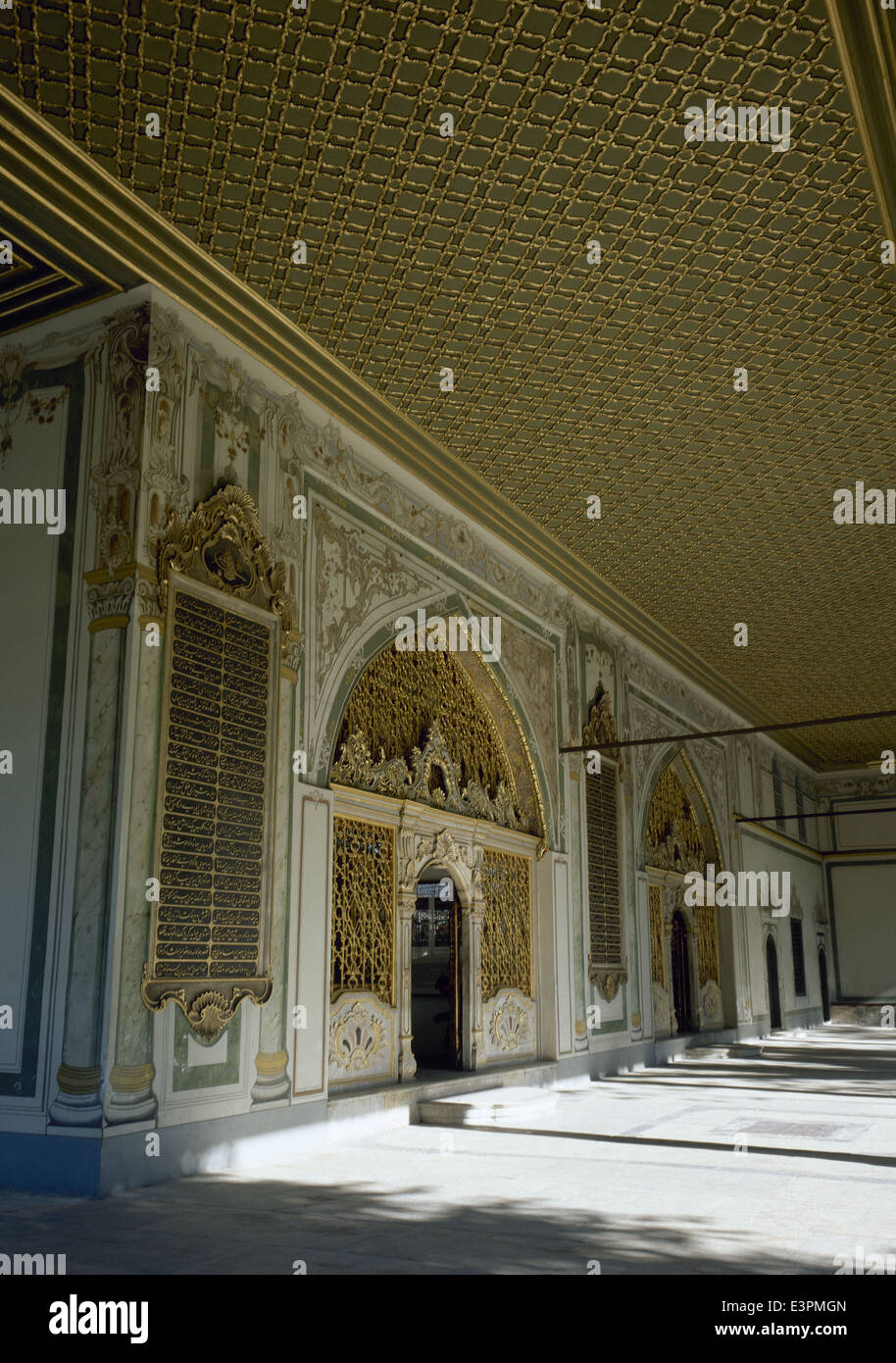 Turkey. Istanbul. Topkapi Palace. Residence of the Ottoman sultans for 1465-1856. View of Divan. Stock Photohttps://www.alamy.com/image-license-details/?v=1https://www.alamy.com/stock-photo-turkey-istanbul-topkapi-palace-residence-of-the-ottoman-sultans-for-71184533.html
Turkey. Istanbul. Topkapi Palace. Residence of the Ottoman sultans for 1465-1856. View of Divan. Stock Photohttps://www.alamy.com/image-license-details/?v=1https://www.alamy.com/stock-photo-turkey-istanbul-topkapi-palace-residence-of-the-ottoman-sultans-for-71184533.htmlRME3PMGN–Turkey. Istanbul. Topkapi Palace. Residence of the Ottoman sultans for 1465-1856. View of Divan.
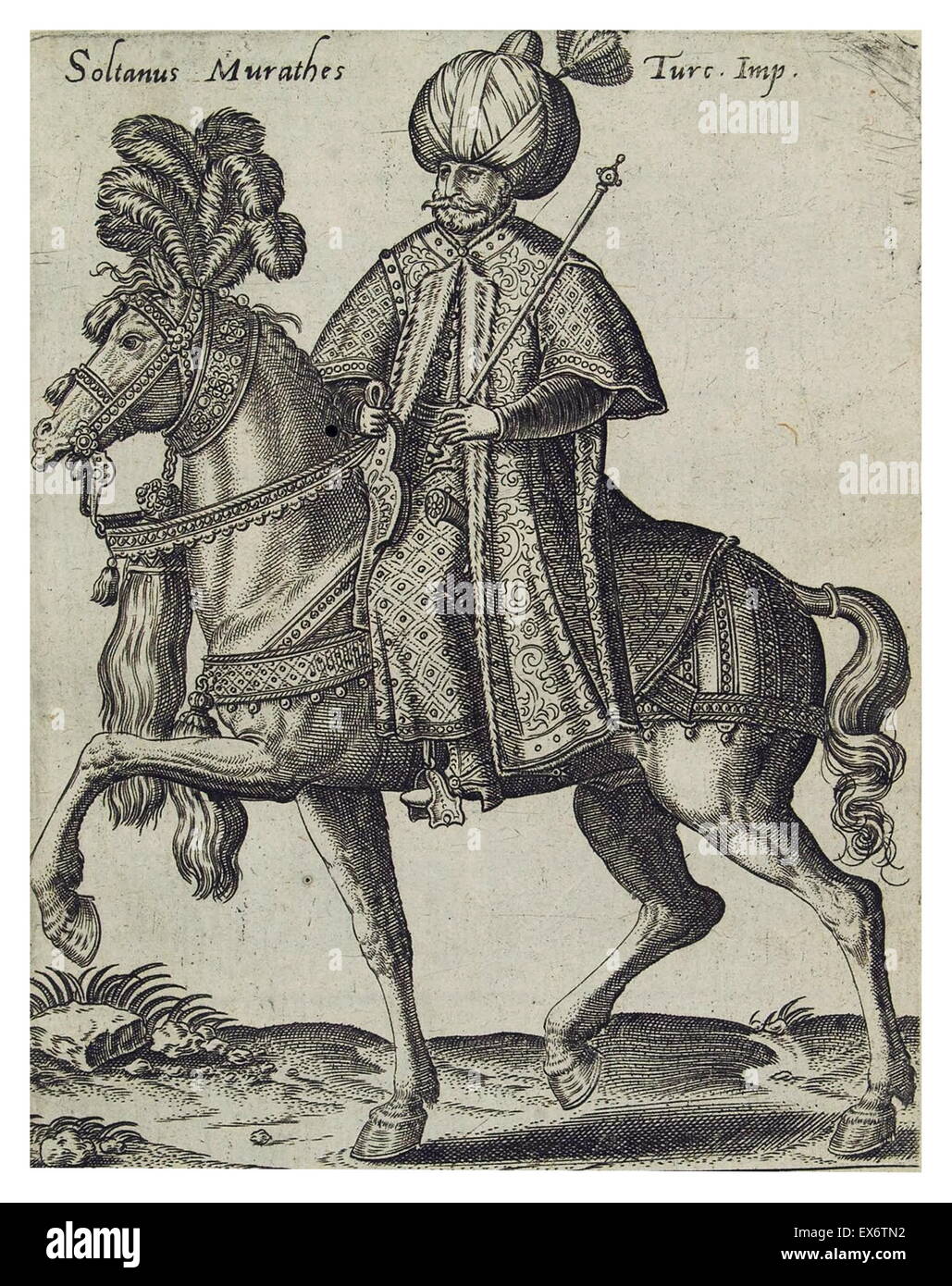 ottoman janissary 17th century. The Janissaries were Ottoman Turkish elite infantry units that formed the Ottoman Sultan's household troops and bodyguards. Stock Photohttps://www.alamy.com/image-license-details/?v=1https://www.alamy.com/stock-photo-ottoman-janissary-17th-century-the-janissaries-were-ottoman-turkish-84973646.html
ottoman janissary 17th century. The Janissaries were Ottoman Turkish elite infantry units that formed the Ottoman Sultan's household troops and bodyguards. Stock Photohttps://www.alamy.com/image-license-details/?v=1https://www.alamy.com/stock-photo-ottoman-janissary-17th-century-the-janissaries-were-ottoman-turkish-84973646.htmlRMEX6TN2–ottoman janissary 17th century. The Janissaries were Ottoman Turkish elite infantry units that formed the Ottoman Sultan's household troops and bodyguards.
 woman looking at the ottoman sultan's boat Stock Photohttps://www.alamy.com/image-license-details/?v=1https://www.alamy.com/woman-looking-at-the-ottoman-sultans-boat-image434218363.html
woman looking at the ottoman sultan's boat Stock Photohttps://www.alamy.com/image-license-details/?v=1https://www.alamy.com/woman-looking-at-the-ottoman-sultans-boat-image434218363.htmlRF2G6C9XK–woman looking at the ottoman sultan's boat
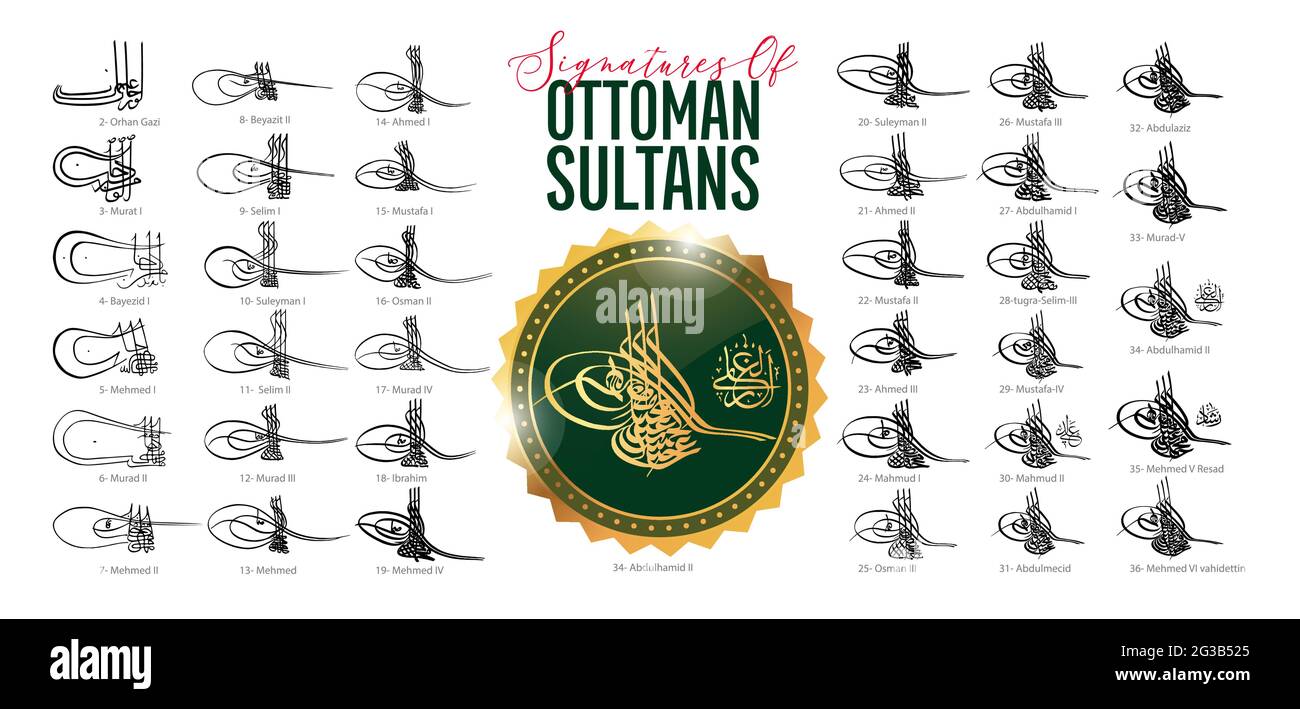 Signatures of Ottoman sultans, Ottoman Tugra. Imperial calligraphic monogram, seal or signature of a sultans. Wall table, Flag, plate, desktop ornamen Stock Vectorhttps://www.alamy.com/image-license-details/?v=1https://www.alamy.com/signatures-of-ottoman-sultans-ottoman-tugra-imperial-calligraphic-monogram-seal-or-signature-of-a-sultans-wall-table-flag-plate-desktop-ornamen-image432348621.html
Signatures of Ottoman sultans, Ottoman Tugra. Imperial calligraphic monogram, seal or signature of a sultans. Wall table, Flag, plate, desktop ornamen Stock Vectorhttps://www.alamy.com/image-license-details/?v=1https://www.alamy.com/signatures-of-ottoman-sultans-ottoman-tugra-imperial-calligraphic-monogram-seal-or-signature-of-a-sultans-wall-table-flag-plate-desktop-ornamen-image432348621.htmlRF2G3B525–Signatures of Ottoman sultans, Ottoman Tugra. Imperial calligraphic monogram, seal or signature of a sultans. Wall table, Flag, plate, desktop ornamen
 Imperial gate, 15th century Topkapi Palace, Constantinople, Turkey. Primary residence of the Ottoman sultans. Stock Photohttps://www.alamy.com/image-license-details/?v=1https://www.alamy.com/imperial-gate-15th-century-topkapi-palace-constantinople-turkey-primary-residence-of-the-ottoman-sultans-image210408615.html
Imperial gate, 15th century Topkapi Palace, Constantinople, Turkey. Primary residence of the Ottoman sultans. Stock Photohttps://www.alamy.com/image-license-details/?v=1https://www.alamy.com/imperial-gate-15th-century-topkapi-palace-constantinople-turkey-primary-residence-of-the-ottoman-sultans-image210408615.htmlRMP68X9B–Imperial gate, 15th century Topkapi Palace, Constantinople, Turkey. Primary residence of the Ottoman sultans.
 Topkapi Palace, Ottoman sultans palace, Istanbul, Turkey Stock Photohttps://www.alamy.com/image-license-details/?v=1https://www.alamy.com/stock-photo-topkapi-palace-ottoman-sultans-palace-istanbul-turkey-78578972.html
Topkapi Palace, Ottoman sultans palace, Istanbul, Turkey Stock Photohttps://www.alamy.com/image-license-details/?v=1https://www.alamy.com/stock-photo-topkapi-palace-ottoman-sultans-palace-istanbul-turkey-78578972.htmlRMEFRG7T–Topkapi Palace, Ottoman sultans palace, Istanbul, Turkey
 Ladle-bearer to the Janissaries. There were two ladle-bearers to each regiment or odah of these elite infantry in the Ottoman Sultan’s guard, Handcoloured copperplate engraving after Octavian Dalvimart from William Alexander’s translation of Picturesque Representations of the Dress and Manners of the Turks, Thomas M’Lean, London, 1814. Stock Photohttps://www.alamy.com/image-license-details/?v=1https://www.alamy.com/ladle-bearer-to-the-janissaries-there-were-two-ladle-bearers-to-each-regiment-or-odah-of-these-elite-infantry-in-the-ottoman-sultans-guard-handcoloured-copperplate-engraving-after-octavian-dalvimart-from-william-alexanders-translation-of-picturesque-representations-of-the-dress-and-manners-of-the-turks-thomas-mlean-london-1814-image370667024.html
Ladle-bearer to the Janissaries. There were two ladle-bearers to each regiment or odah of these elite infantry in the Ottoman Sultan’s guard, Handcoloured copperplate engraving after Octavian Dalvimart from William Alexander’s translation of Picturesque Representations of the Dress and Manners of the Turks, Thomas M’Lean, London, 1814. Stock Photohttps://www.alamy.com/image-license-details/?v=1https://www.alamy.com/ladle-bearer-to-the-janissaries-there-were-two-ladle-bearers-to-each-regiment-or-odah-of-these-elite-infantry-in-the-ottoman-sultans-guard-handcoloured-copperplate-engraving-after-octavian-dalvimart-from-william-alexanders-translation-of-picturesque-representations-of-the-dress-and-manners-of-the-turks-thomas-mlean-london-1814-image370667024.htmlRM2CF19G0–Ladle-bearer to the Janissaries. There were two ladle-bearers to each regiment or odah of these elite infantry in the Ottoman Sultan’s guard, Handcoloured copperplate engraving after Octavian Dalvimart from William Alexander’s translation of Picturesque Representations of the Dress and Manners of the Turks, Thomas M’Lean, London, 1814.
 Istanbul Turkey Topkapi Palace Once the home of the Ottoman sultans Stock Photohttps://www.alamy.com/image-license-details/?v=1https://www.alamy.com/stock-photo-istanbul-turkey-topkapi-palace-once-the-home-of-the-ottoman-sultans-19049010.html
Istanbul Turkey Topkapi Palace Once the home of the Ottoman sultans Stock Photohttps://www.alamy.com/image-license-details/?v=1https://www.alamy.com/stock-photo-istanbul-turkey-topkapi-palace-once-the-home-of-the-ottoman-sultans-19049010.htmlRMB2YN5P–Istanbul Turkey Topkapi Palace Once the home of the Ottoman sultans
 Silk Fragment with Wavy-vine Pattern on Green Ground. Dimensions: Textile (largest piece): H. 53 1/4 in. (135.3 cm) W. 26 1/4 in. (66.7 cm) Mount: H. 57 3/8 in. (145.7 cm) W. 30 1/8 in. (76.5 cm) D. 2 1/4 in. (5.7 cm). Date: 16th century. Spectacular, large-pattern silks were favored materials for luxury garments among the courtly elite of sixteenth-century Istanbul, and were often used for the bold, richly colored kaftans of the Ottoman sultans. This rectangular silk fragment features a design of red undulating vines bearing rosettes, on a gold-green ground. A series of small rosettes Stock Photohttps://www.alamy.com/image-license-details/?v=1https://www.alamy.com/silk-fragment-with-wavy-vine-pattern-on-green-ground-dimensions-textile-largest-piece-h-53-14-in-1353-cm-w-26-14-in-667-cm-mount-h-57-38-in-1457-cm-w-30-18-in-765-cm-d-2-14-in-57-cm-date-16th-century-spectacular-large-pattern-silks-were-favored-materials-for-luxury-garments-among-the-courtly-elite-of-sixteenth-century-istanbul-and-were-often-used-for-the-bold-richly-colored-kaftans-of-the-ottoman-sultans-this-rectangular-silk-fragment-features-a-design-of-red-undulating-vines-bearing-rosettes-on-a-gold-green-ground-a-series-of-small-rosettes-image213300750.html
Silk Fragment with Wavy-vine Pattern on Green Ground. Dimensions: Textile (largest piece): H. 53 1/4 in. (135.3 cm) W. 26 1/4 in. (66.7 cm) Mount: H. 57 3/8 in. (145.7 cm) W. 30 1/8 in. (76.5 cm) D. 2 1/4 in. (5.7 cm). Date: 16th century. Spectacular, large-pattern silks were favored materials for luxury garments among the courtly elite of sixteenth-century Istanbul, and were often used for the bold, richly colored kaftans of the Ottoman sultans. This rectangular silk fragment features a design of red undulating vines bearing rosettes, on a gold-green ground. A series of small rosettes Stock Photohttps://www.alamy.com/image-license-details/?v=1https://www.alamy.com/silk-fragment-with-wavy-vine-pattern-on-green-ground-dimensions-textile-largest-piece-h-53-14-in-1353-cm-w-26-14-in-667-cm-mount-h-57-38-in-1457-cm-w-30-18-in-765-cm-d-2-14-in-57-cm-date-16th-century-spectacular-large-pattern-silks-were-favored-materials-for-luxury-garments-among-the-courtly-elite-of-sixteenth-century-istanbul-and-were-often-used-for-the-bold-richly-colored-kaftans-of-the-ottoman-sultans-this-rectangular-silk-fragment-features-a-design-of-red-undulating-vines-bearing-rosettes-on-a-gold-green-ground-a-series-of-small-rosettes-image213300750.htmlRMPB0K7X–Silk Fragment with Wavy-vine Pattern on Green Ground. Dimensions: Textile (largest piece): H. 53 1/4 in. (135.3 cm) W. 26 1/4 in. (66.7 cm) Mount: H. 57 3/8 in. (145.7 cm) W. 30 1/8 in. (76.5 cm) D. 2 1/4 in. (5.7 cm). Date: 16th century. Spectacular, large-pattern silks were favored materials for luxury garments among the courtly elite of sixteenth-century Istanbul, and were often used for the bold, richly colored kaftans of the Ottoman sultans. This rectangular silk fragment features a design of red undulating vines bearing rosettes, on a gold-green ground. A series of small rosettes
 Topkapi Palace Museum Istanbul Turkey Ottoman Sultans Stock Photohttps://www.alamy.com/image-license-details/?v=1https://www.alamy.com/stock-photo-topkapi-palace-museum-istanbul-turkey-ottoman-sultans-26246352.html
Topkapi Palace Museum Istanbul Turkey Ottoman Sultans Stock Photohttps://www.alamy.com/image-license-details/?v=1https://www.alamy.com/stock-photo-topkapi-palace-museum-istanbul-turkey-ottoman-sultans-26246352.htmlRMBEKHDM–Topkapi Palace Museum Istanbul Turkey Ottoman Sultans
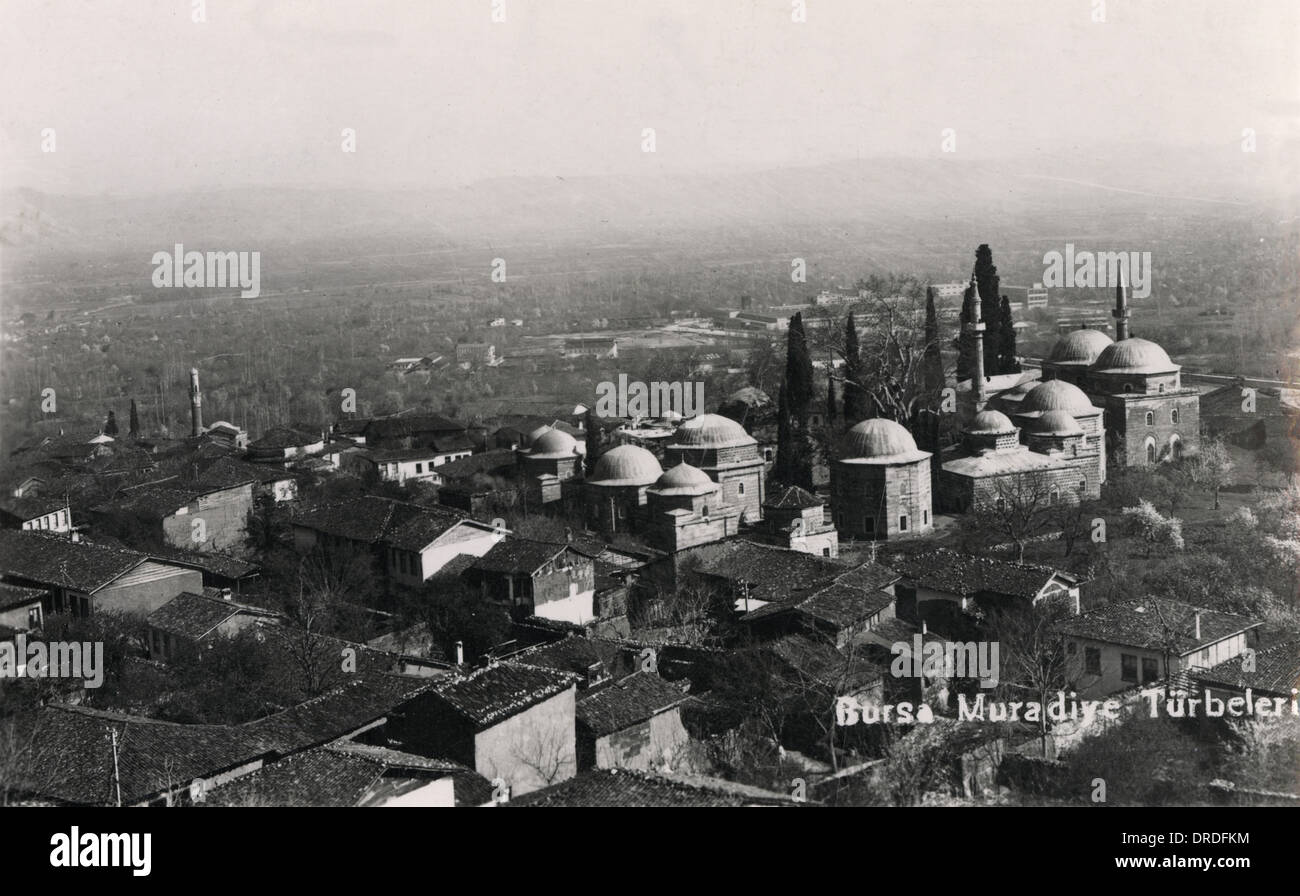 Bursa, Turkey - Mausoleums of Ottoman Sultans Stock Photohttps://www.alamy.com/image-license-details/?v=1https://www.alamy.com/bursa-turkey-mausoleums-of-ottoman-sultans-image66065880.html
Bursa, Turkey - Mausoleums of Ottoman Sultans Stock Photohttps://www.alamy.com/image-license-details/?v=1https://www.alamy.com/bursa-turkey-mausoleums-of-ottoman-sultans-image66065880.htmlRMDRDFKM–Bursa, Turkey - Mausoleums of Ottoman Sultans
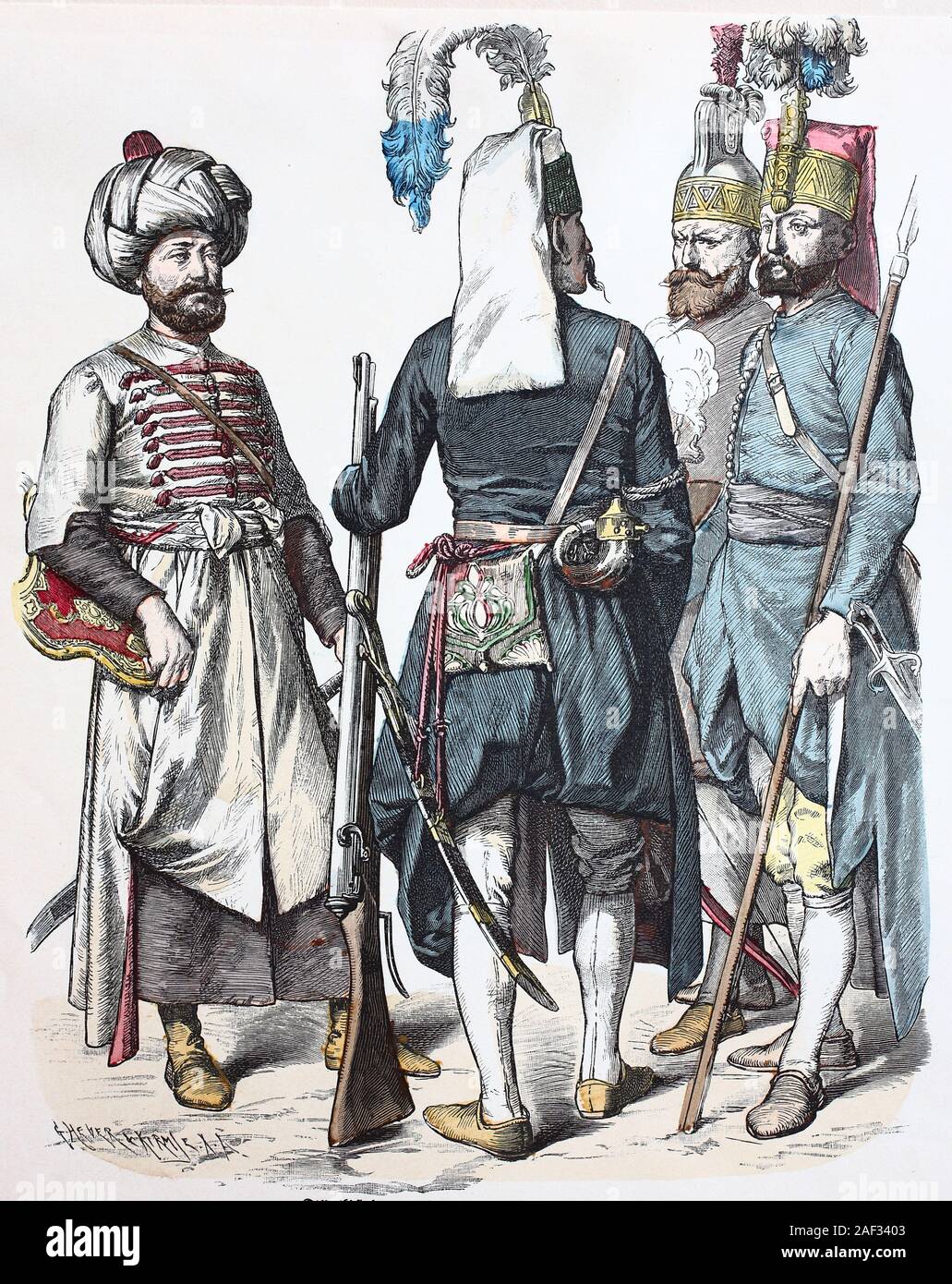 National costume, clothes, history of the costumes, the Turkish military, Janitscharen, Osmanischen empire, crack regiment of the army, 14th century. Janissaries, élite infantry units that formed the Ottoman Sultan's household troops, bodyguards and the ridge moulder standing army in Europe, Volkstracht, Kleidung, Geschichte der Kostüme, türkisches Militär, Osmanischen Reich, Elitetruppe der Armee, 14. Jahrhundert. Janissaries, elite infantry units that formed the Ottoman Sultan's household troops, bodyguards and the first modern standing army in Europe Stock Photohttps://www.alamy.com/image-license-details/?v=1https://www.alamy.com/national-costume-clothes-history-of-the-costumes-the-turkish-military-janitscharen-osmanischen-empire-crack-regiment-of-the-army-14th-century-janissaries-lite-infantry-units-that-formed-the-ottoman-sultans-household-troops-bodyguards-and-the-ridge-moulder-standing-army-in-europe-volkstracht-kleidung-geschichte-der-kostme-trkisches-militr-osmanischen-reich-elitetruppe-der-armee-14-jahrhundert-janissaries-elite-infantry-units-that-formed-the-ottoman-sultans-household-troops-bodyguards-and-the-first-modern-standing-army-in-europe-image336285827.html
National costume, clothes, history of the costumes, the Turkish military, Janitscharen, Osmanischen empire, crack regiment of the army, 14th century. Janissaries, élite infantry units that formed the Ottoman Sultan's household troops, bodyguards and the ridge moulder standing army in Europe, Volkstracht, Kleidung, Geschichte der Kostüme, türkisches Militär, Osmanischen Reich, Elitetruppe der Armee, 14. Jahrhundert. Janissaries, elite infantry units that formed the Ottoman Sultan's household troops, bodyguards and the first modern standing army in Europe Stock Photohttps://www.alamy.com/image-license-details/?v=1https://www.alamy.com/national-costume-clothes-history-of-the-costumes-the-turkish-military-janitscharen-osmanischen-empire-crack-regiment-of-the-army-14th-century-janissaries-lite-infantry-units-that-formed-the-ottoman-sultans-household-troops-bodyguards-and-the-ridge-moulder-standing-army-in-europe-volkstracht-kleidung-geschichte-der-kostme-trkisches-militr-osmanischen-reich-elitetruppe-der-armee-14-jahrhundert-janissaries-elite-infantry-units-that-formed-the-ottoman-sultans-household-troops-bodyguards-and-the-first-modern-standing-army-in-europe-image336285827.htmlRF2AF3403–National costume, clothes, history of the costumes, the Turkish military, Janitscharen, Osmanischen empire, crack regiment of the army, 14th century. Janissaries, élite infantry units that formed the Ottoman Sultan's household troops, bodyguards and the ridge moulder standing army in Europe, Volkstracht, Kleidung, Geschichte der Kostüme, türkisches Militär, Osmanischen Reich, Elitetruppe der Armee, 14. Jahrhundert. Janissaries, elite infantry units that formed the Ottoman Sultan's household troops, bodyguards and the first modern standing army in Europe
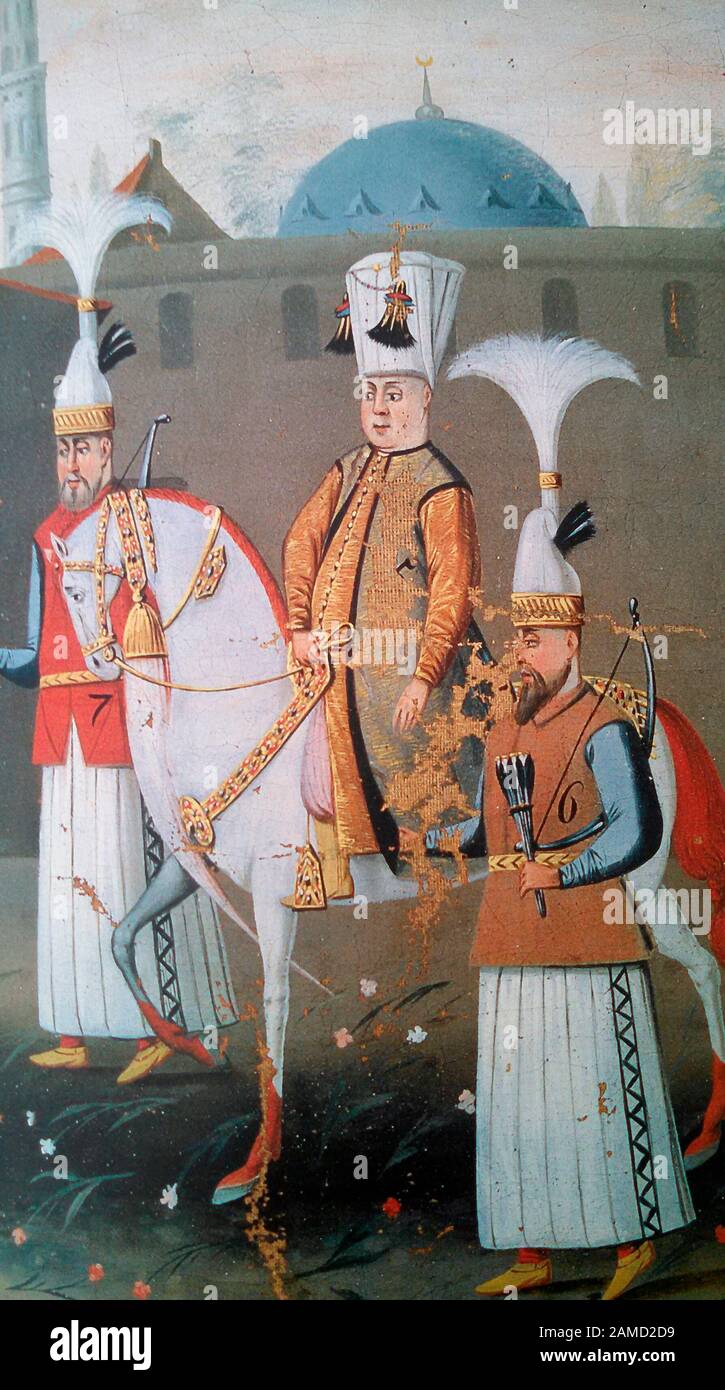 Depiction of Ottoman Sultan Mehmed IV in 1657 - The Sultan's Procession Stock Photohttps://www.alamy.com/image-license-details/?v=1https://www.alamy.com/depiction-of-ottoman-sultan-mehmed-iv-in-1657-the-sultans-procession-image339577429.html
Depiction of Ottoman Sultan Mehmed IV in 1657 - The Sultan's Procession Stock Photohttps://www.alamy.com/image-license-details/?v=1https://www.alamy.com/depiction-of-ottoman-sultan-mehmed-iv-in-1657-the-sultans-procession-image339577429.htmlRM2AMD2D9–Depiction of Ottoman Sultan Mehmed IV in 1657 - The Sultan's Procession
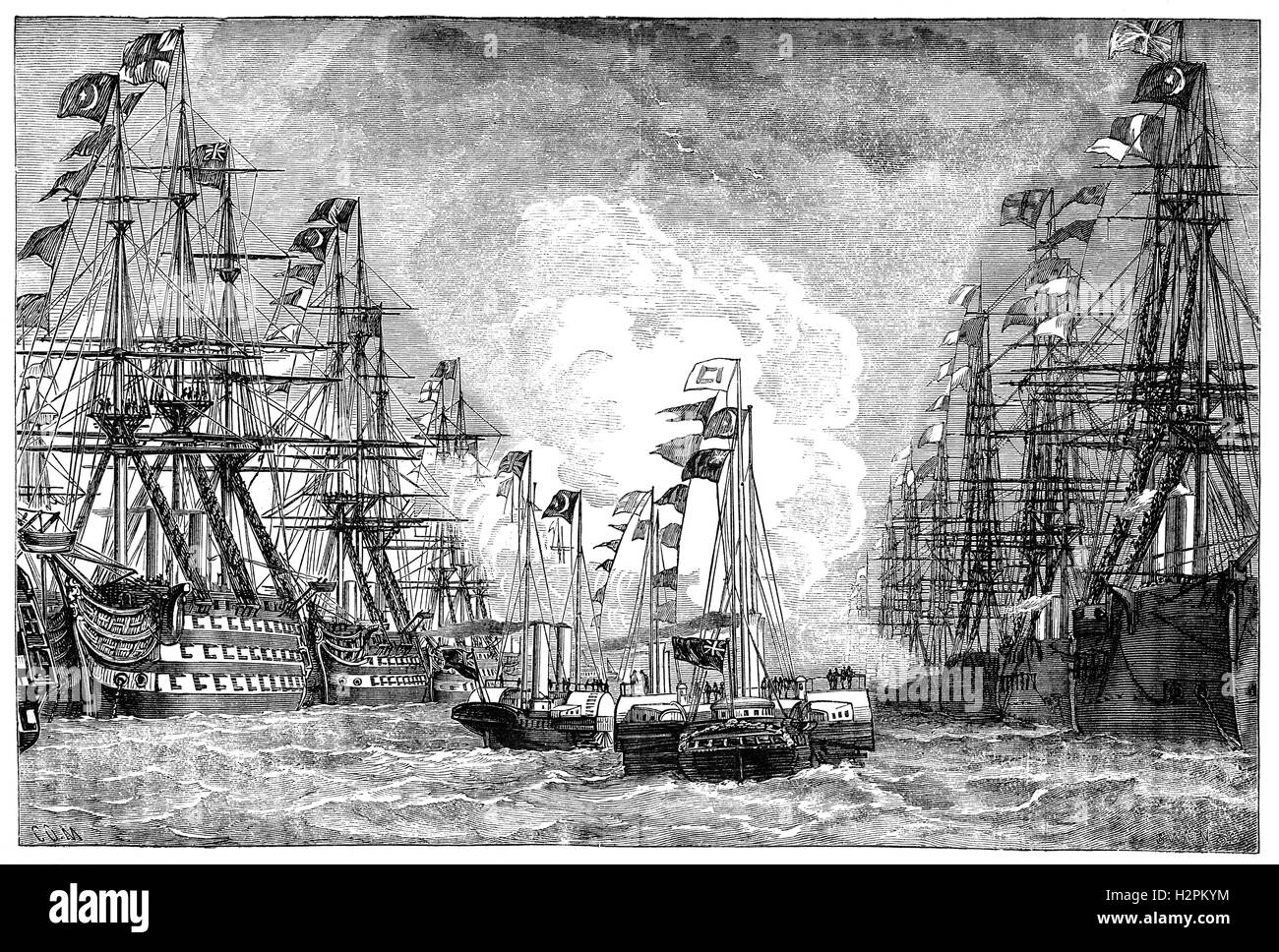 Sultan Abdul Hamid II (1842 – 1918) was the 34th Sultan of the Ottoman Empire and the last Sultan to exert effective autocratic control over the fracturing state. Unlike many other Ottoman sultans, Abdul Hamid II travelled to distant countries including London in July 1860, when he attended a naval review. Stock Photohttps://www.alamy.com/image-license-details/?v=1https://www.alamy.com/stock-photo-sultan-abdul-hamid-ii-1842-1918-was-the-34th-sultan-of-the-ottoman-122200504.html
Sultan Abdul Hamid II (1842 – 1918) was the 34th Sultan of the Ottoman Empire and the last Sultan to exert effective autocratic control over the fracturing state. Unlike many other Ottoman sultans, Abdul Hamid II travelled to distant countries including London in July 1860, when he attended a naval review. Stock Photohttps://www.alamy.com/image-license-details/?v=1https://www.alamy.com/stock-photo-sultan-abdul-hamid-ii-1842-1918-was-the-34th-sultan-of-the-ottoman-122200504.htmlRMH2PKYM–Sultan Abdul Hamid II (1842 – 1918) was the 34th Sultan of the Ottoman Empire and the last Sultan to exert effective autocratic control over the fracturing state. Unlike many other Ottoman sultans, Abdul Hamid II travelled to distant countries including London in July 1860, when he attended a naval review.
 Ottoman Sultans turbeh (tombs) in St. Sophia, Istanbul Turkey Stock Photohttps://www.alamy.com/image-license-details/?v=1https://www.alamy.com/stock-photo-ottoman-sultans-turbeh-tombs-in-st-sophia-istanbul-turkey-27754734.html
Ottoman Sultans turbeh (tombs) in St. Sophia, Istanbul Turkey Stock Photohttps://www.alamy.com/image-license-details/?v=1https://www.alamy.com/stock-photo-ottoman-sultans-turbeh-tombs-in-st-sophia-istanbul-turkey-27754734.htmlRMBH49CE–Ottoman Sultans turbeh (tombs) in St. Sophia, Istanbul Turkey
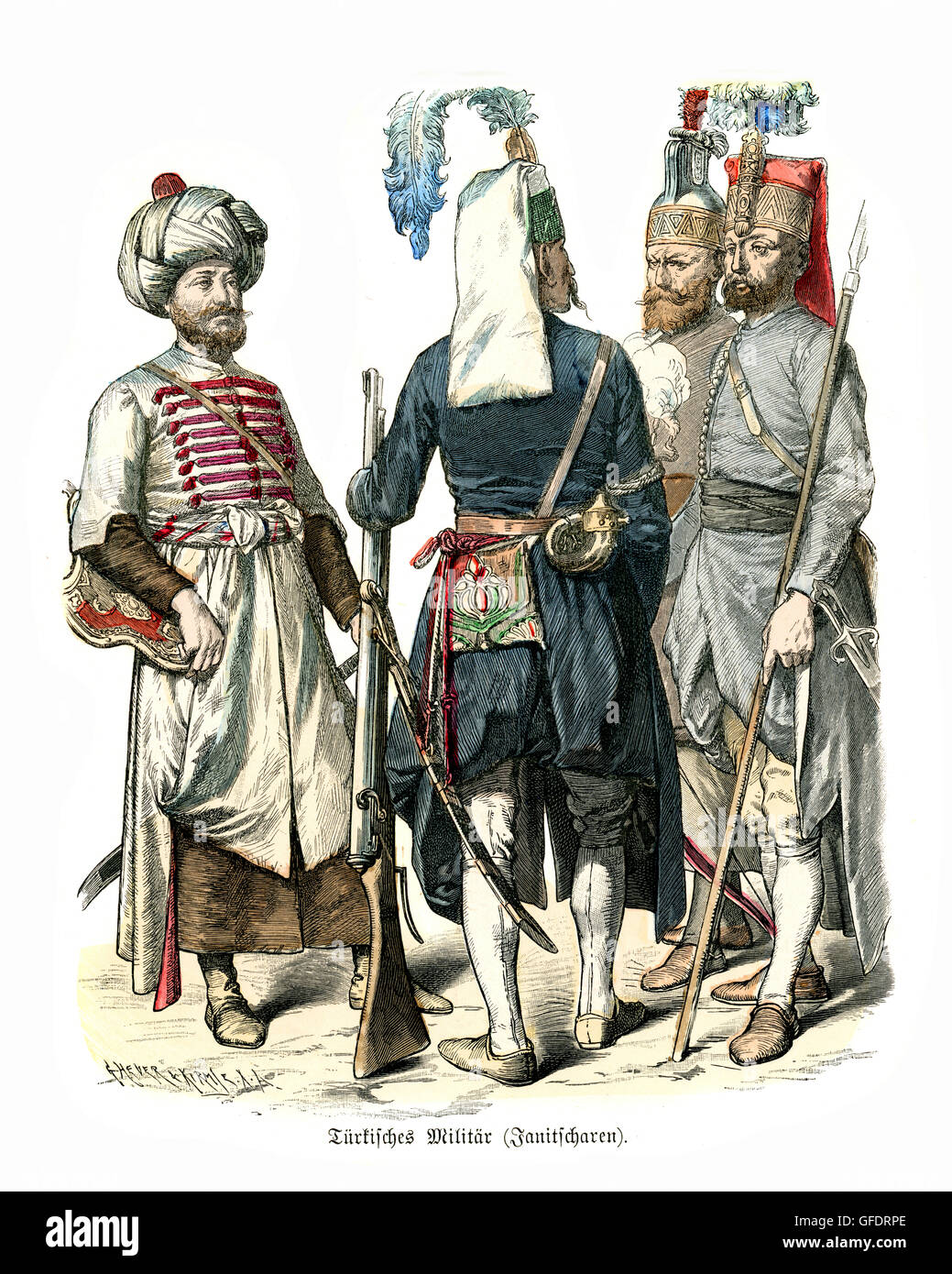 Military uniforms of Ottoman Turkey 17th and 18th Century. Janissaries elite infantry units that formed the Ottoman Sultan's hou Stock Photohttps://www.alamy.com/image-license-details/?v=1https://www.alamy.com/stock-photo-military-uniforms-of-ottoman-turkey-17th-and-18th-century-janissaries-112786086.html
Military uniforms of Ottoman Turkey 17th and 18th Century. Janissaries elite infantry units that formed the Ottoman Sultan's hou Stock Photohttps://www.alamy.com/image-license-details/?v=1https://www.alamy.com/stock-photo-military-uniforms-of-ottoman-turkey-17th-and-18th-century-janissaries-112786086.htmlRMGFDRPE–Military uniforms of Ottoman Turkey 17th and 18th Century. Janissaries elite infantry units that formed the Ottoman Sultan's hou
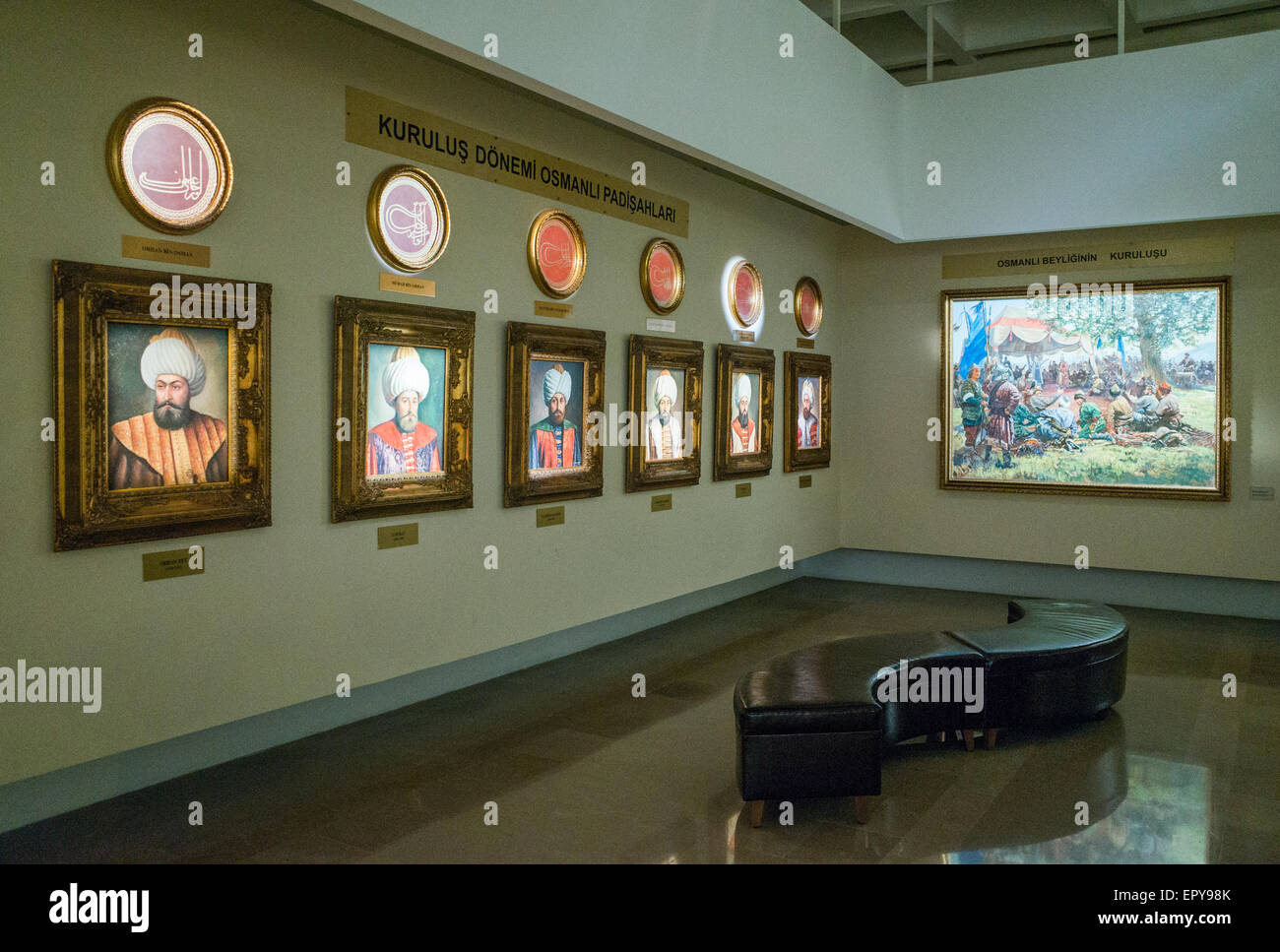 Portrait paintings of Sultans of the Ottoman Empire at Military Museum, Istanbul, Turkey Stock Photohttps://www.alamy.com/image-license-details/?v=1https://www.alamy.com/stock-photo-portrait-paintings-of-sultans-of-the-ottoman-empire-at-military-museum-82963907.html
Portrait paintings of Sultans of the Ottoman Empire at Military Museum, Istanbul, Turkey Stock Photohttps://www.alamy.com/image-license-details/?v=1https://www.alamy.com/stock-photo-portrait-paintings-of-sultans-of-the-ottoman-empire-at-military-museum-82963907.htmlRMEPY98K–Portrait paintings of Sultans of the Ottoman Empire at Military Museum, Istanbul, Turkey
 Ottoman Sultan’s monogram called as Tugra, worked on stone and gold painted, AD1247 Stock Photohttps://www.alamy.com/image-license-details/?v=1https://www.alamy.com/ottoman-sultans-monogram-called-as-tugra-worked-on-stone-and-gold-painted-ad1247-image230571344.html
Ottoman Sultan’s monogram called as Tugra, worked on stone and gold painted, AD1247 Stock Photohttps://www.alamy.com/image-license-details/?v=1https://www.alamy.com/ottoman-sultans-monogram-called-as-tugra-worked-on-stone-and-gold-painted-ad1247-image230571344.htmlRFRB3C2T–Ottoman Sultan’s monogram called as Tugra, worked on stone and gold painted, AD1247
 The Sultans Topkapi Palace at sunset, Istanbul, Turkey Stock Photohttps://www.alamy.com/image-license-details/?v=1https://www.alamy.com/stock-photo-the-sultans-topkapi-palace-at-sunset-istanbul-turkey-47290063.html
The Sultans Topkapi Palace at sunset, Istanbul, Turkey Stock Photohttps://www.alamy.com/image-license-details/?v=1https://www.alamy.com/stock-photo-the-sultans-topkapi-palace-at-sunset-istanbul-turkey-47290063.htmlRFCMX6XR–The Sultans Topkapi Palace at sunset, Istanbul, Turkey
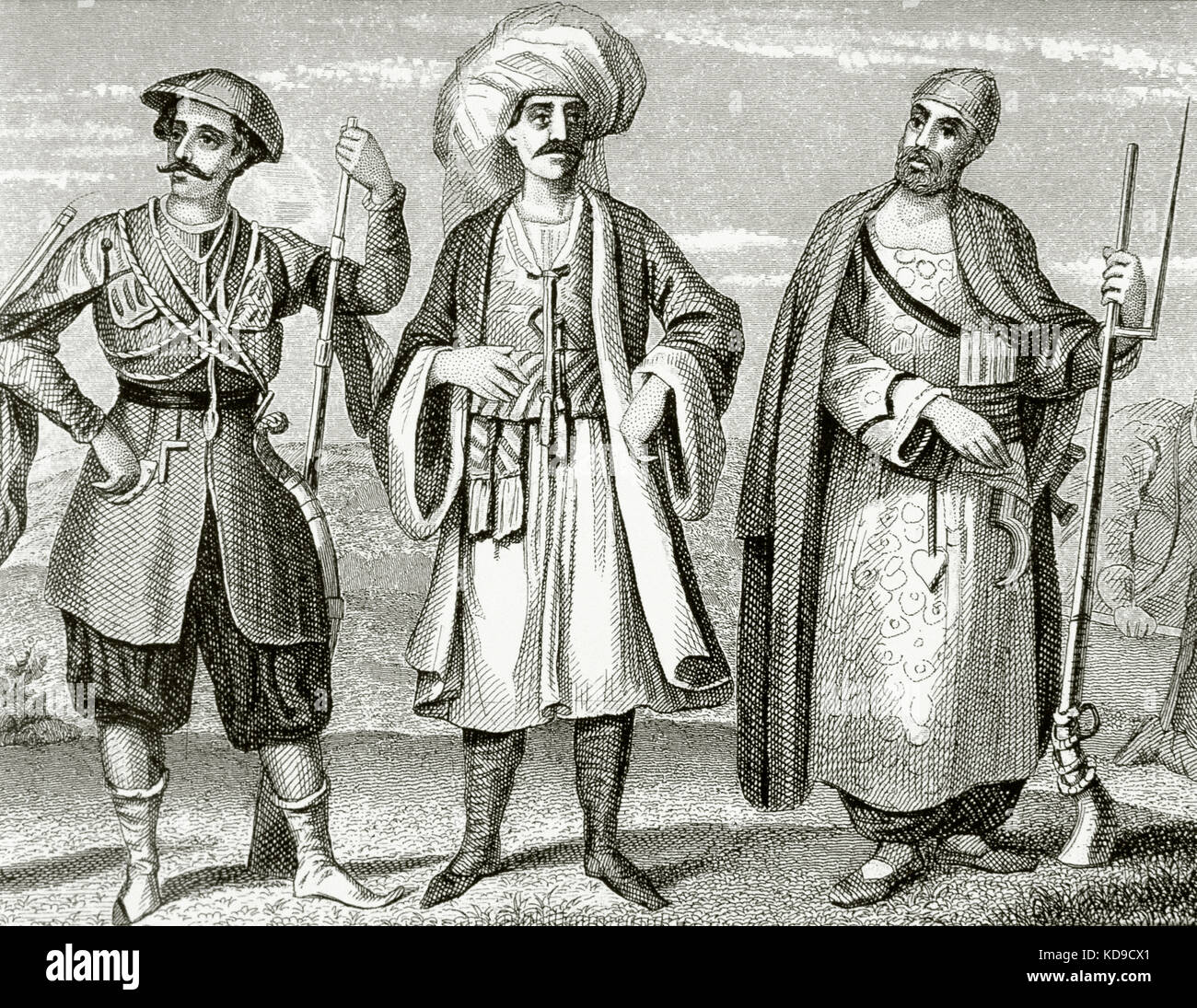 Janissaries. Elite infantry units that formed the Ottoman Sultan's household troops and bodyguards. Engraving. 19th century. Stock Photohttps://www.alamy.com/image-license-details/?v=1https://www.alamy.com/stock-image-janissaries-elite-infantry-units-that-formed-the-ottoman-sultans-household-163091545.html
Janissaries. Elite infantry units that formed the Ottoman Sultan's household troops and bodyguards. Engraving. 19th century. Stock Photohttps://www.alamy.com/image-license-details/?v=1https://www.alamy.com/stock-image-janissaries-elite-infantry-units-that-formed-the-ottoman-sultans-household-163091545.htmlRMKD9CX1–Janissaries. Elite infantry units that formed the Ottoman Sultan's household troops and bodyguards. Engraving. 19th century.
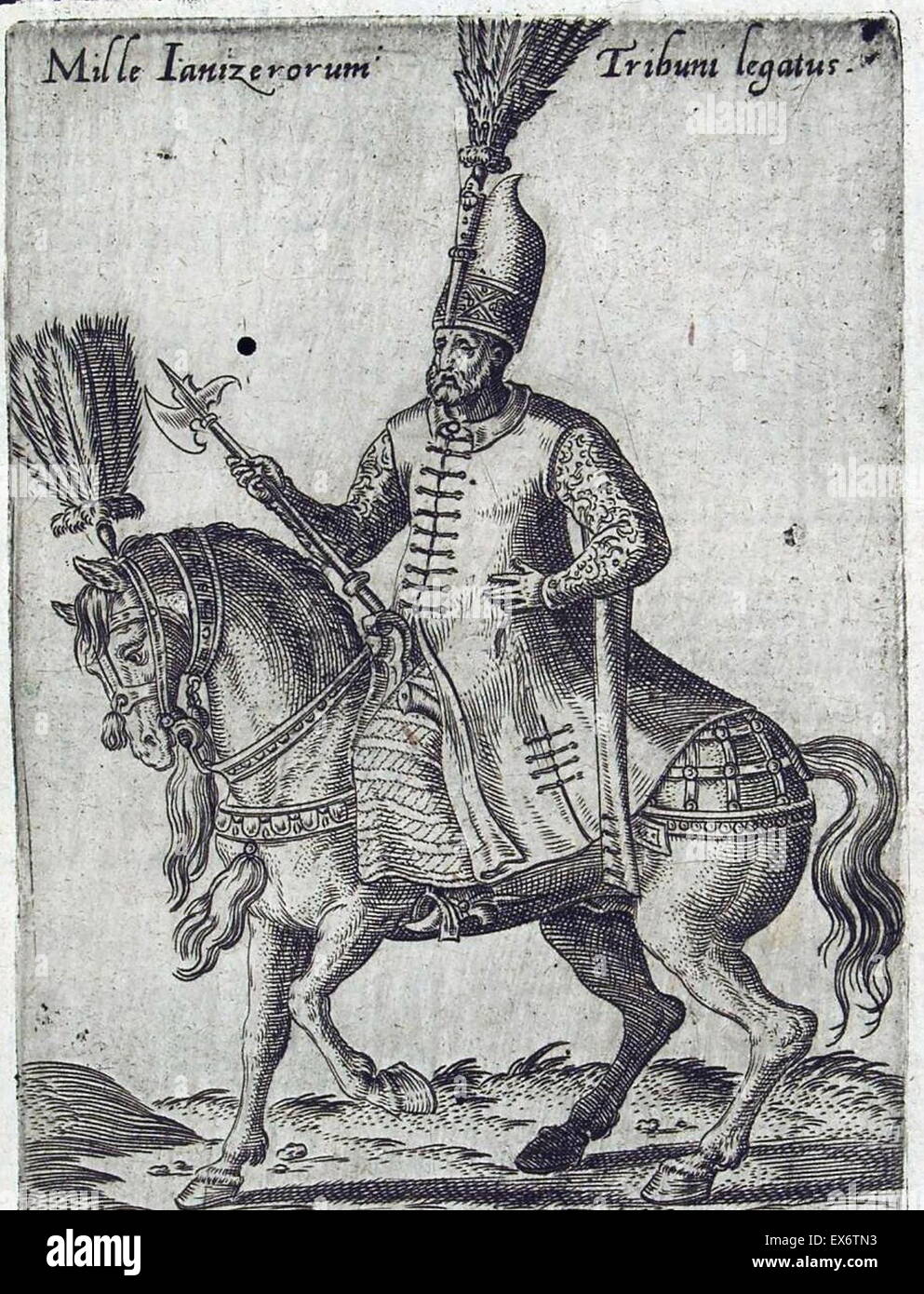 ottoman janissary 17th century. The Janissaries were Ottoman Turkish elite infantry units that formed the Ottoman Sultan's household troops and bodyguards. Stock Photohttps://www.alamy.com/image-license-details/?v=1https://www.alamy.com/stock-photo-ottoman-janissary-17th-century-the-janissaries-were-ottoman-turkish-84973647.html
ottoman janissary 17th century. The Janissaries were Ottoman Turkish elite infantry units that formed the Ottoman Sultan's household troops and bodyguards. Stock Photohttps://www.alamy.com/image-license-details/?v=1https://www.alamy.com/stock-photo-ottoman-janissary-17th-century-the-janissaries-were-ottoman-turkish-84973647.htmlRMEX6TN3–ottoman janissary 17th century. The Janissaries were Ottoman Turkish elite infantry units that formed the Ottoman Sultan's household troops and bodyguards.
 Ottoman sultan's boat waiting in front of the castle walls Stock Photohttps://www.alamy.com/image-license-details/?v=1https://www.alamy.com/ottoman-sultans-boat-waiting-in-front-of-the-castle-walls-image434218367.html
Ottoman sultan's boat waiting in front of the castle walls Stock Photohttps://www.alamy.com/image-license-details/?v=1https://www.alamy.com/ottoman-sultans-boat-waiting-in-front-of-the-castle-walls-image434218367.htmlRF2G6C9XR–Ottoman sultan's boat waiting in front of the castle walls
 ISTANBUL, Turkey / Türkiye — The cemetery of Hagia Sophia, next to the main building, contains five tombs belonging to Ottoman Sultans and their family members. Stock Photohttps://www.alamy.com/image-license-details/?v=1https://www.alamy.com/stock-photo-istanbul-turkey-trkiye-the-cemetery-of-hagia-sophia-next-to-the-main-78523733.html
ISTANBUL, Turkey / Türkiye — The cemetery of Hagia Sophia, next to the main building, contains five tombs belonging to Ottoman Sultans and their family members. Stock Photohttps://www.alamy.com/image-license-details/?v=1https://www.alamy.com/stock-photo-istanbul-turkey-trkiye-the-cemetery-of-hagia-sophia-next-to-the-main-78523733.htmlRMEFN1R1–ISTANBUL, Turkey / Türkiye — The cemetery of Hagia Sophia, next to the main building, contains five tombs belonging to Ottoman Sultans and their family members.
 The Janissaries; elite infantry units that formed the Ottoman Sultan's household troops and bodyguards. Sultan Murad I created the force in 1383 Stock Photohttps://www.alamy.com/image-license-details/?v=1https://www.alamy.com/the-janissaries-elite-infantry-units-that-formed-the-ottoman-sultans-household-troops-and-bodyguards-sultan-murad-i-created-the-force-in-1383-image483536316.html
The Janissaries; elite infantry units that formed the Ottoman Sultan's household troops and bodyguards. Sultan Murad I created the force in 1383 Stock Photohttps://www.alamy.com/image-license-details/?v=1https://www.alamy.com/the-janissaries-elite-infantry-units-that-formed-the-ottoman-sultans-household-troops-and-bodyguards-sultan-murad-i-created-the-force-in-1383-image483536316.htmlRM2K2JYE4–The Janissaries; elite infantry units that formed the Ottoman Sultan's household troops and bodyguards. Sultan Murad I created the force in 1383
 Topkapi Palace, Ottoman sultans palace, Istanbul, Turkey Stock Photohttps://www.alamy.com/image-license-details/?v=1https://www.alamy.com/stock-photo-topkapi-palace-ottoman-sultans-palace-istanbul-turkey-78578958.html
Topkapi Palace, Ottoman sultans palace, Istanbul, Turkey Stock Photohttps://www.alamy.com/image-license-details/?v=1https://www.alamy.com/stock-photo-topkapi-palace-ottoman-sultans-palace-istanbul-turkey-78578958.htmlRMEFRG7A–Topkapi Palace, Ottoman sultans palace, Istanbul, Turkey
 Built from 1459 the Topkapi Palace in Istanbul was for nearly 400 years the residence of the Ottoman sultans. Stock Photohttps://www.alamy.com/image-license-details/?v=1https://www.alamy.com/stock-photo-built-from-1459-the-topkapi-palace-in-istanbul-was-for-nearly-400-84187735.html
Built from 1459 the Topkapi Palace in Istanbul was for nearly 400 years the residence of the Ottoman sultans. Stock Photohttps://www.alamy.com/image-license-details/?v=1https://www.alamy.com/stock-photo-built-from-1459-the-topkapi-palace-in-istanbul-was-for-nearly-400-84187735.htmlRMETY28R–Built from 1459 the Topkapi Palace in Istanbul was for nearly 400 years the residence of the Ottoman sultans.
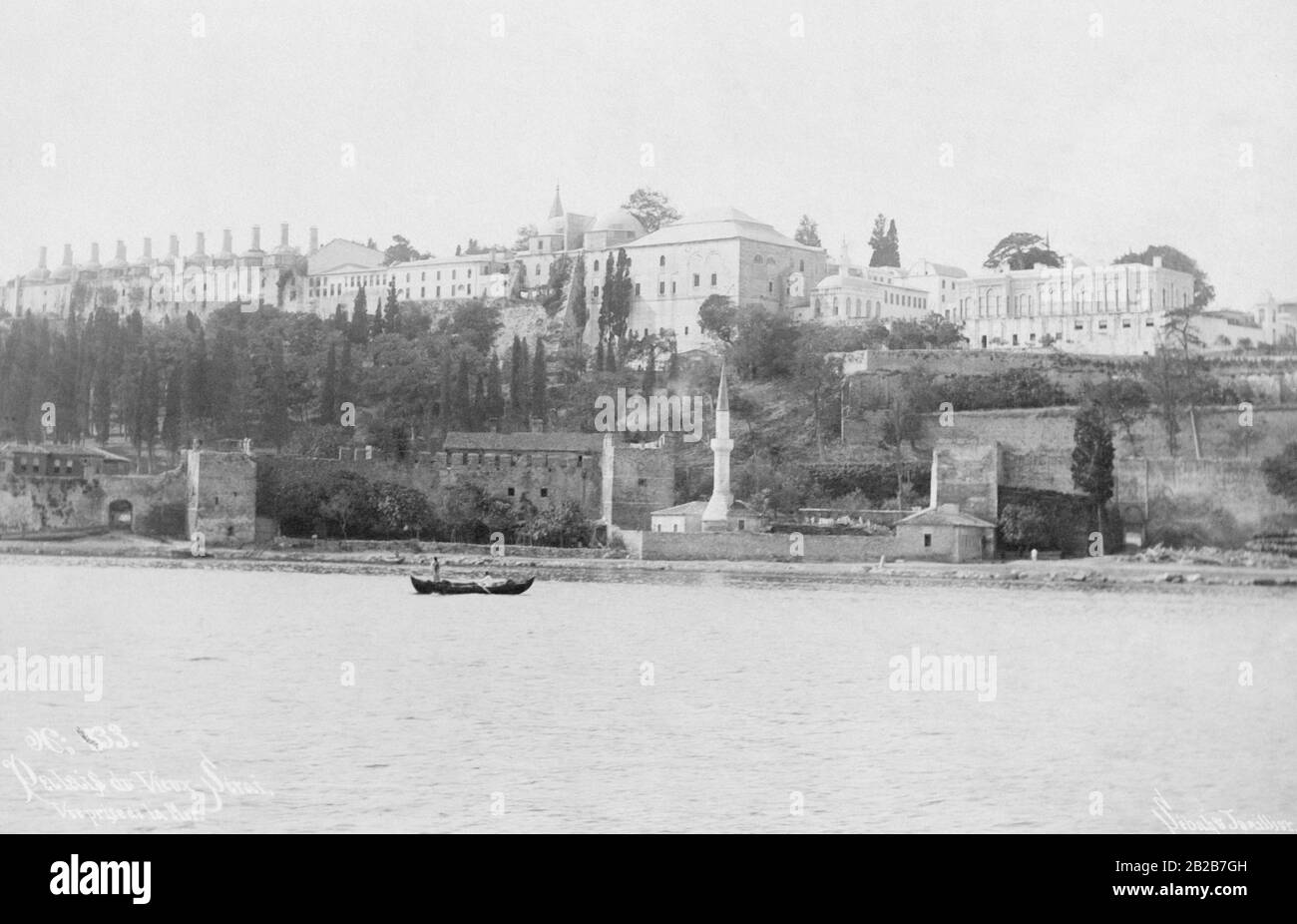 The Topkapi Palace in Istanbul, where the Ottoman sultans used to live and where the centre of the Ottoman administration was located. The photo is undated. Stock Photohttps://www.alamy.com/image-license-details/?v=1https://www.alamy.com/the-topkapi-palace-in-istanbul-where-the-ottoman-sultans-used-to-live-and-where-the-centre-of-the-ottoman-administration-was-located-the-photo-is-undated-image345684097.html
The Topkapi Palace in Istanbul, where the Ottoman sultans used to live and where the centre of the Ottoman administration was located. The photo is undated. Stock Photohttps://www.alamy.com/image-license-details/?v=1https://www.alamy.com/the-topkapi-palace-in-istanbul-where-the-ottoman-sultans-used-to-live-and-where-the-centre-of-the-ottoman-administration-was-located-the-photo-is-undated-image345684097.htmlRM2B2B7GH–The Topkapi Palace in Istanbul, where the Ottoman sultans used to live and where the centre of the Ottoman administration was located. The photo is undated.
 Turkey. Istanbul. Topkapi Palace. Residence of the Ottoman sultans for 1465-1856. View of Divan. Stock Photohttps://www.alamy.com/image-license-details/?v=1https://www.alamy.com/turkey-istanbul-topkapi-palace-residence-of-the-ottoman-sultans-for-1465-1856-view-of-divan-image210454299.html
Turkey. Istanbul. Topkapi Palace. Residence of the Ottoman sultans for 1465-1856. View of Divan. Stock Photohttps://www.alamy.com/image-license-details/?v=1https://www.alamy.com/turkey-istanbul-topkapi-palace-residence-of-the-ottoman-sultans-for-1465-1856-view-of-divan-image210454299.htmlRMP6B0GY–Turkey. Istanbul. Topkapi Palace. Residence of the Ottoman sultans for 1465-1856. View of Divan.
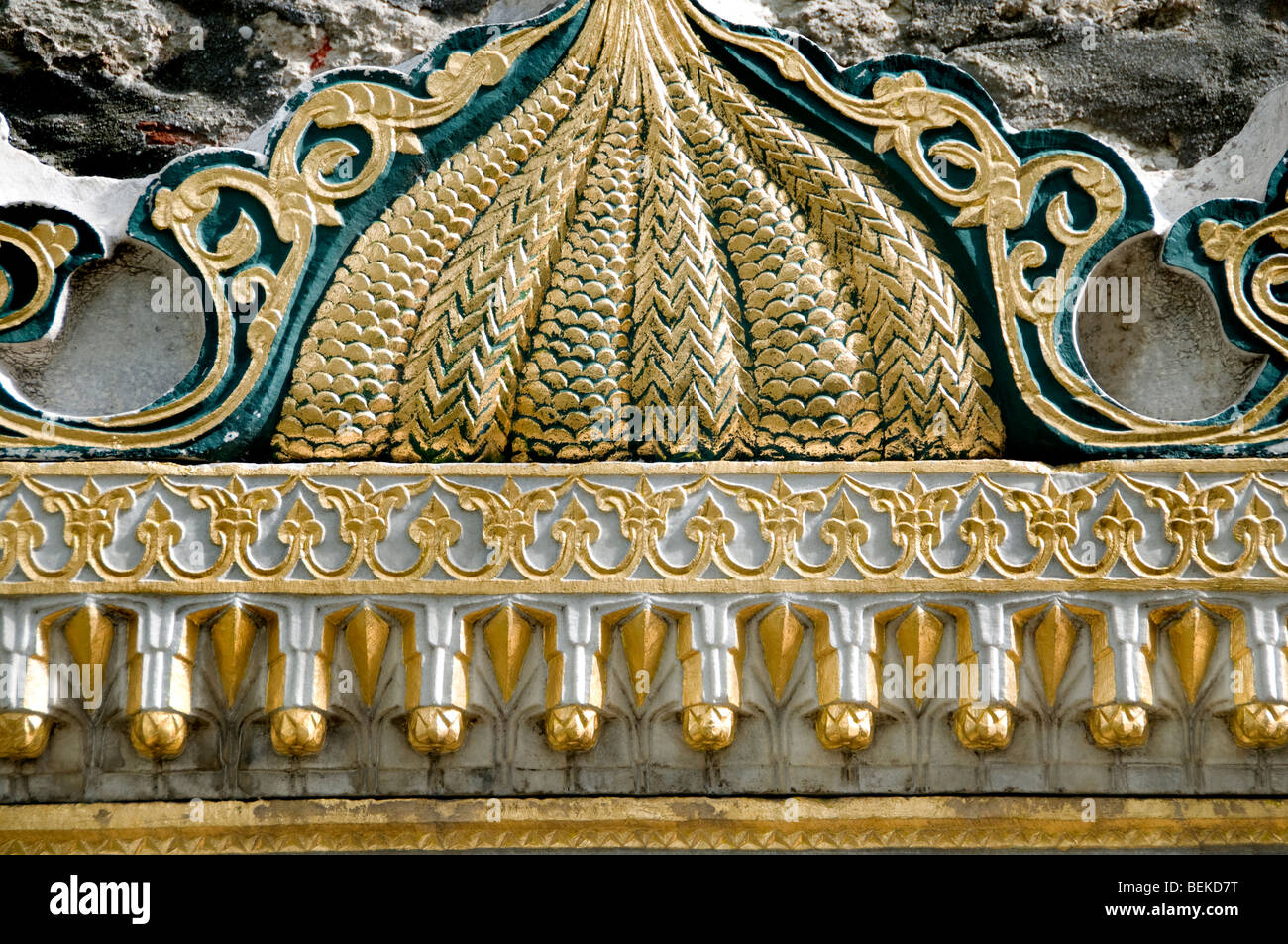 Topkapi Palace Museum Istanbul Turkey Ottoman Sultans Stock Photohttps://www.alamy.com/image-license-details/?v=1https://www.alamy.com/stock-photo-topkapi-palace-museum-istanbul-turkey-ottoman-sultans-26243052.html
Topkapi Palace Museum Istanbul Turkey Ottoman Sultans Stock Photohttps://www.alamy.com/image-license-details/?v=1https://www.alamy.com/stock-photo-topkapi-palace-museum-istanbul-turkey-ottoman-sultans-26243052.htmlRMBEKD7T–Topkapi Palace Museum Istanbul Turkey Ottoman Sultans
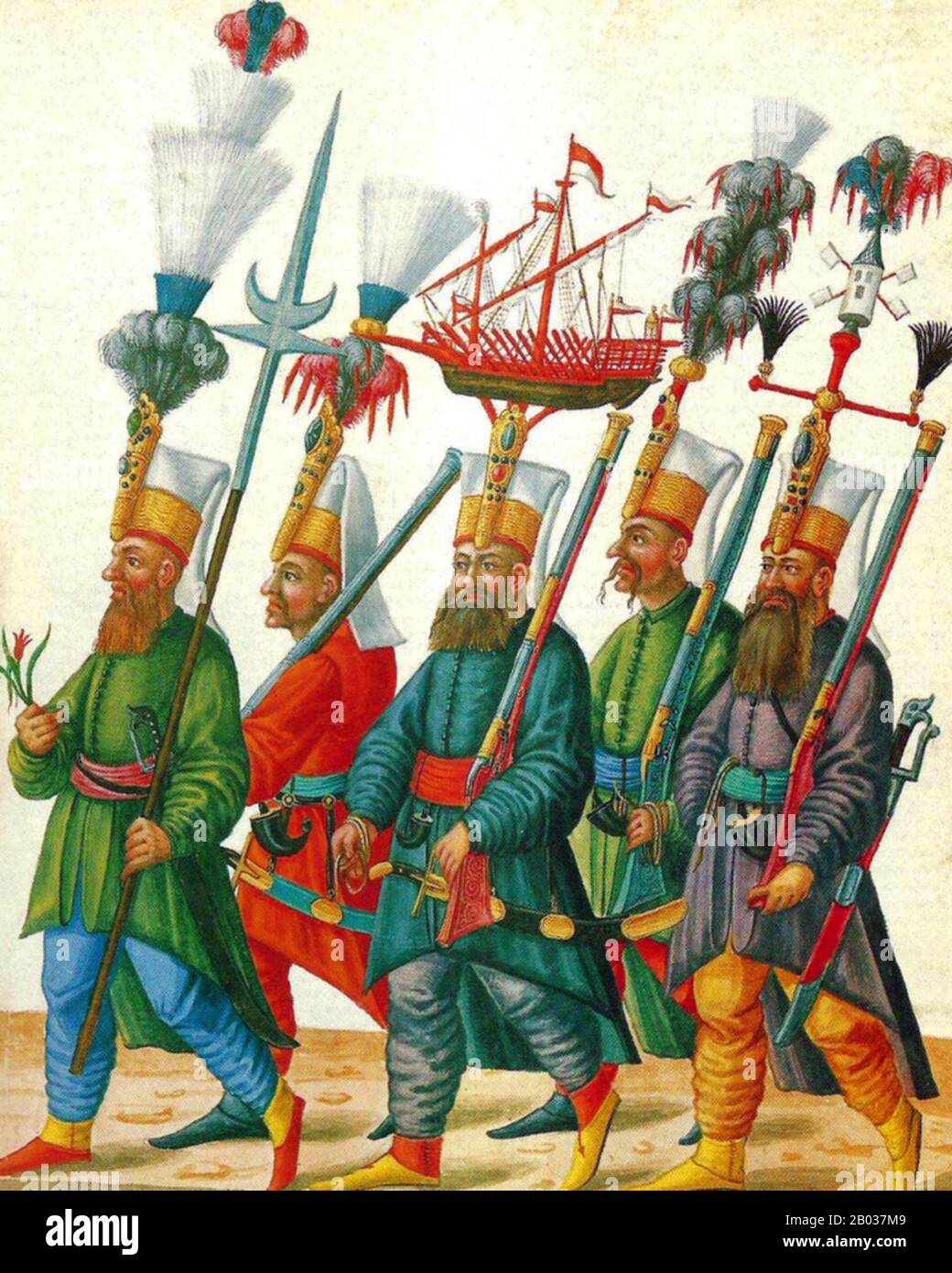 The Janissaries were elite infantry units that formed the Ottoman Sultan's household troops, bodyguards and the first standing army in Europe. The corps was most likely established during the reign of Murad I (1362–89). Stock Photohttps://www.alamy.com/image-license-details/?v=1https://www.alamy.com/the-janissaries-were-elite-infantry-units-that-formed-the-ottoman-sultans-household-troops-bodyguards-and-the-first-standing-army-in-europe-the-corps-was-most-likely-established-during-the-reign-of-murad-i-136289-image344279273.html
The Janissaries were elite infantry units that formed the Ottoman Sultan's household troops, bodyguards and the first standing army in Europe. The corps was most likely established during the reign of Murad I (1362–89). Stock Photohttps://www.alamy.com/image-license-details/?v=1https://www.alamy.com/the-janissaries-were-elite-infantry-units-that-formed-the-ottoman-sultans-household-troops-bodyguards-and-the-first-standing-army-in-europe-the-corps-was-most-likely-established-during-the-reign-of-murad-i-136289-image344279273.htmlRM2B037M9–The Janissaries were elite infantry units that formed the Ottoman Sultan's household troops, bodyguards and the first standing army in Europe. The corps was most likely established during the reign of Murad I (1362–89).
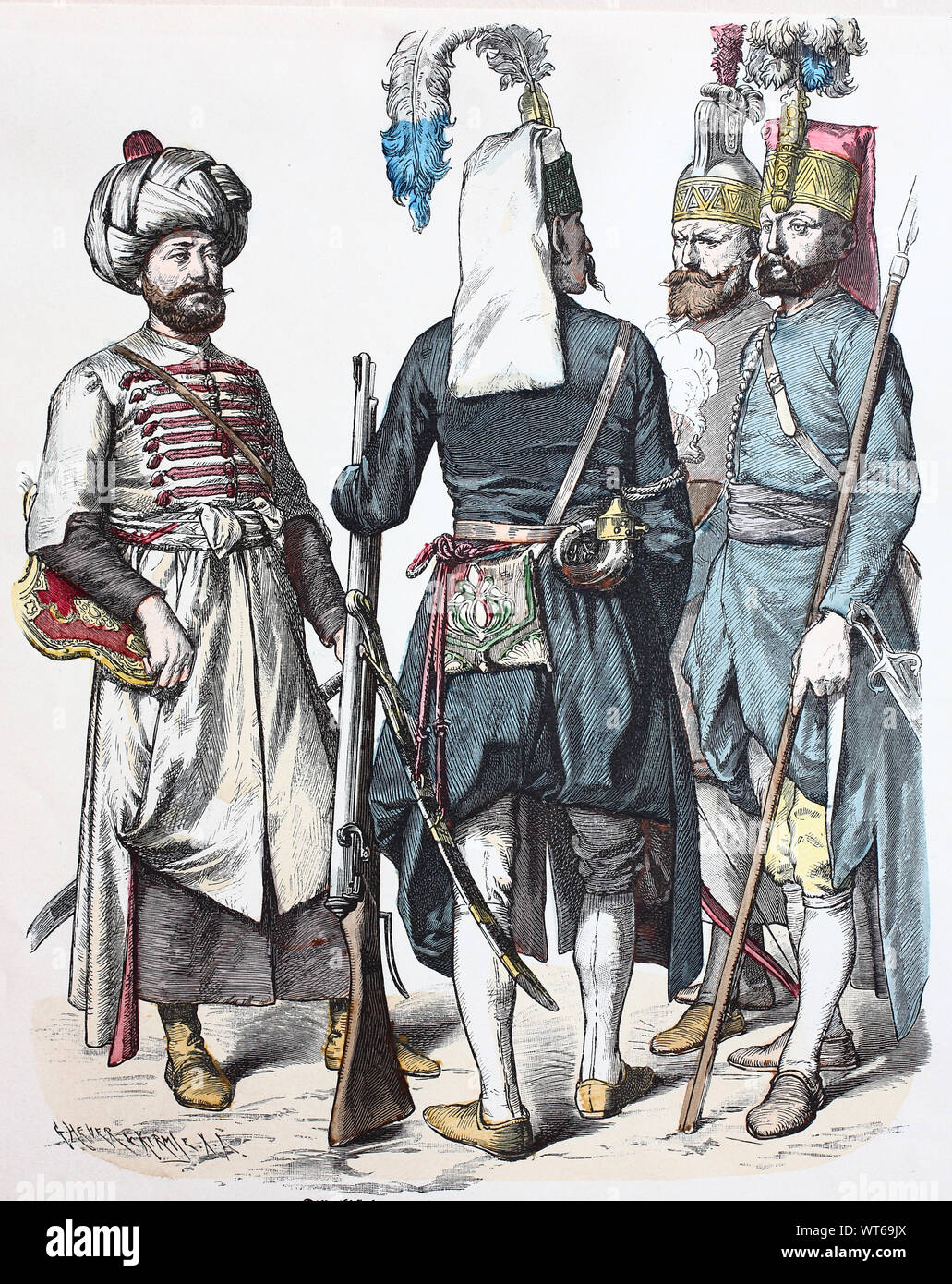 National costume, clothes, history of the costumes, the Turkish military, Janitscharen, Osmanischen empire, crack regiment of the army, 14th century. Janissaries, élite infantry units that formed the Ottoman Sultan's household troops, bodyguards and the ridge moulder standing army in Europe, Volkstracht, Kleidung, Geschichte der Kostüme, türkisches Militär, Osmanischen Reich, Elitetruppe der Armee, 14. Jahrhundert. Janissaries, elite infantry units that formed the Ottoman Sultan's household troops, bodyguards and the first modern standing army in Europe Stock Photohttps://www.alamy.com/image-license-details/?v=1https://www.alamy.com/national-costume-clothes-history-of-the-costumes-the-turkish-military-janitscharen-osmanischen-empire-crack-regiment-of-the-army-14th-century-janissaries-lite-infantry-units-that-formed-the-ottoman-sultans-household-troops-bodyguards-and-the-ridge-moulder-standing-army-in-europe-volkstracht-kleidung-geschichte-der-kostme-trkisches-militr-osmanischen-reich-elitetruppe-der-armee-14-jahrhundert-janissaries-elite-infantry-units-that-formed-the-ottoman-sultans-household-troops-bodyguards-and-the-first-modern-standing-army-in-europe-image273046562.html
National costume, clothes, history of the costumes, the Turkish military, Janitscharen, Osmanischen empire, crack regiment of the army, 14th century. Janissaries, élite infantry units that formed the Ottoman Sultan's household troops, bodyguards and the ridge moulder standing army in Europe, Volkstracht, Kleidung, Geschichte der Kostüme, türkisches Militär, Osmanischen Reich, Elitetruppe der Armee, 14. Jahrhundert. Janissaries, elite infantry units that formed the Ottoman Sultan's household troops, bodyguards and the first modern standing army in Europe Stock Photohttps://www.alamy.com/image-license-details/?v=1https://www.alamy.com/national-costume-clothes-history-of-the-costumes-the-turkish-military-janitscharen-osmanischen-empire-crack-regiment-of-the-army-14th-century-janissaries-lite-infantry-units-that-formed-the-ottoman-sultans-household-troops-bodyguards-and-the-ridge-moulder-standing-army-in-europe-volkstracht-kleidung-geschichte-der-kostme-trkisches-militr-osmanischen-reich-elitetruppe-der-armee-14-jahrhundert-janissaries-elite-infantry-units-that-formed-the-ottoman-sultans-household-troops-bodyguards-and-the-first-modern-standing-army-in-europe-image273046562.htmlRFWT69JX–National costume, clothes, history of the costumes, the Turkish military, Janitscharen, Osmanischen empire, crack regiment of the army, 14th century. Janissaries, élite infantry units that formed the Ottoman Sultan's household troops, bodyguards and the ridge moulder standing army in Europe, Volkstracht, Kleidung, Geschichte der Kostüme, türkisches Militär, Osmanischen Reich, Elitetruppe der Armee, 14. Jahrhundert. Janissaries, elite infantry units that formed the Ottoman Sultan's household troops, bodyguards and the first modern standing army in Europe
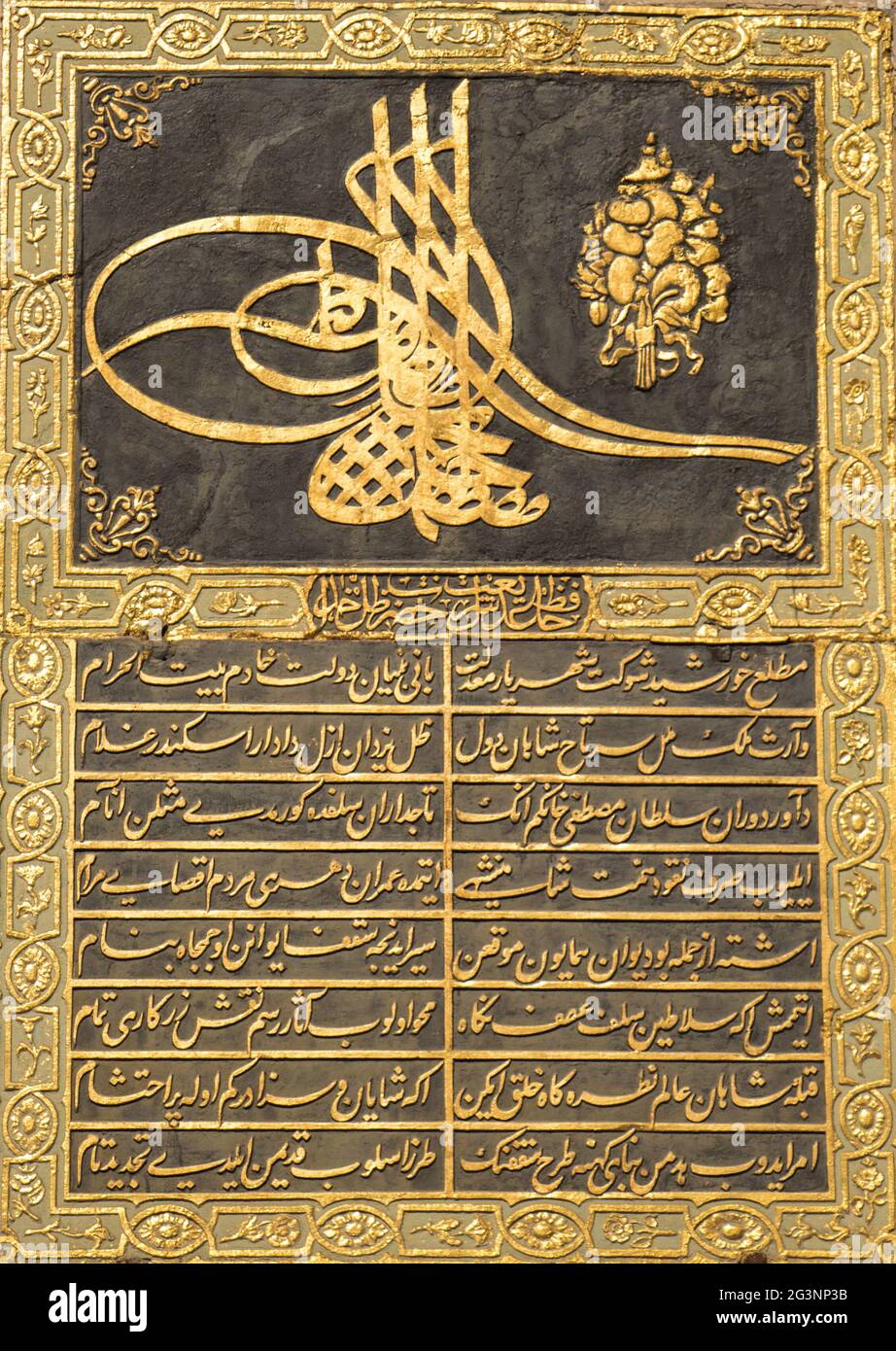 Traditional Ottoman Sultans Tugra Stock Photohttps://www.alamy.com/image-license-details/?v=1https://www.alamy.com/traditional-ottoman-sultans-tugra-image432581503.html
Traditional Ottoman Sultans Tugra Stock Photohttps://www.alamy.com/image-license-details/?v=1https://www.alamy.com/traditional-ottoman-sultans-tugra-image432581503.htmlRF2G3NP3B–Traditional Ottoman Sultans Tugra
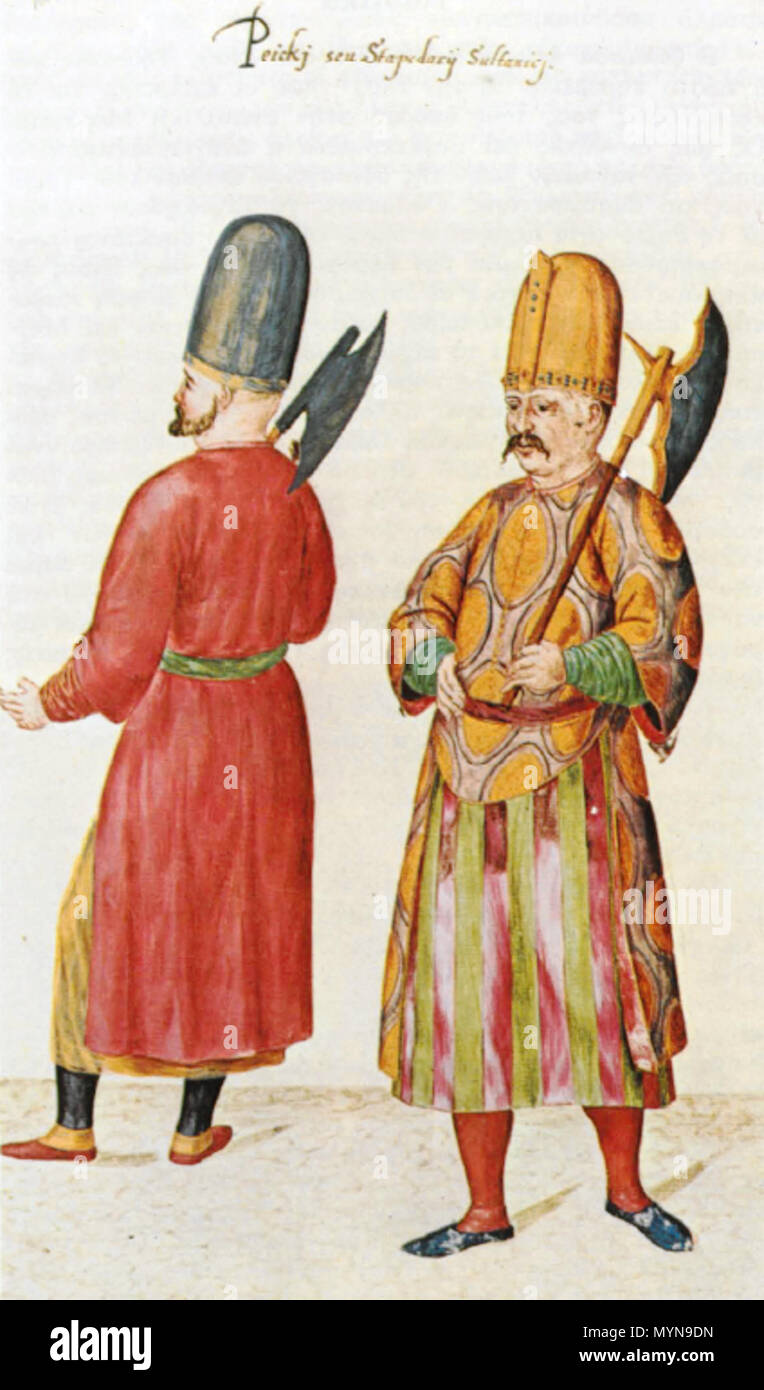 . English: Two members of the select Peiks guard (Janissary halberdiers) of the Ottoman Sultans . 15 June 2011. Unknown, early 16th-century artist 414 Peiks Stock Photohttps://www.alamy.com/image-license-details/?v=1https://www.alamy.com/english-two-members-of-the-select-peiks-guard-janissary-halberdiers-of-the-ottoman-sultans-15-june-2011-unknown-early-16th-century-artist-414-peiks-image189167825.html
. English: Two members of the select Peiks guard (Janissary halberdiers) of the Ottoman Sultans . 15 June 2011. Unknown, early 16th-century artist 414 Peiks Stock Photohttps://www.alamy.com/image-license-details/?v=1https://www.alamy.com/english-two-members-of-the-select-peiks-guard-janissary-halberdiers-of-the-ottoman-sultans-15-june-2011-unknown-early-16th-century-artist-414-peiks-image189167825.htmlRMMYN9DN–. English: Two members of the select Peiks guard (Janissary halberdiers) of the Ottoman Sultans . 15 June 2011. Unknown, early 16th-century artist 414 Peiks
 Ottoman Sultans turbeh (tombs) in St. Sophia, Istanbul Turkey Stock Photohttps://www.alamy.com/image-license-details/?v=1https://www.alamy.com/stock-photo-ottoman-sultans-turbeh-tombs-in-st-sophia-istanbul-turkey-27754504.html
Ottoman Sultans turbeh (tombs) in St. Sophia, Istanbul Turkey Stock Photohttps://www.alamy.com/image-license-details/?v=1https://www.alamy.com/stock-photo-ottoman-sultans-turbeh-tombs-in-st-sophia-istanbul-turkey-27754504.htmlRFBH4948–Ottoman Sultans turbeh (tombs) in St. Sophia, Istanbul Turkey
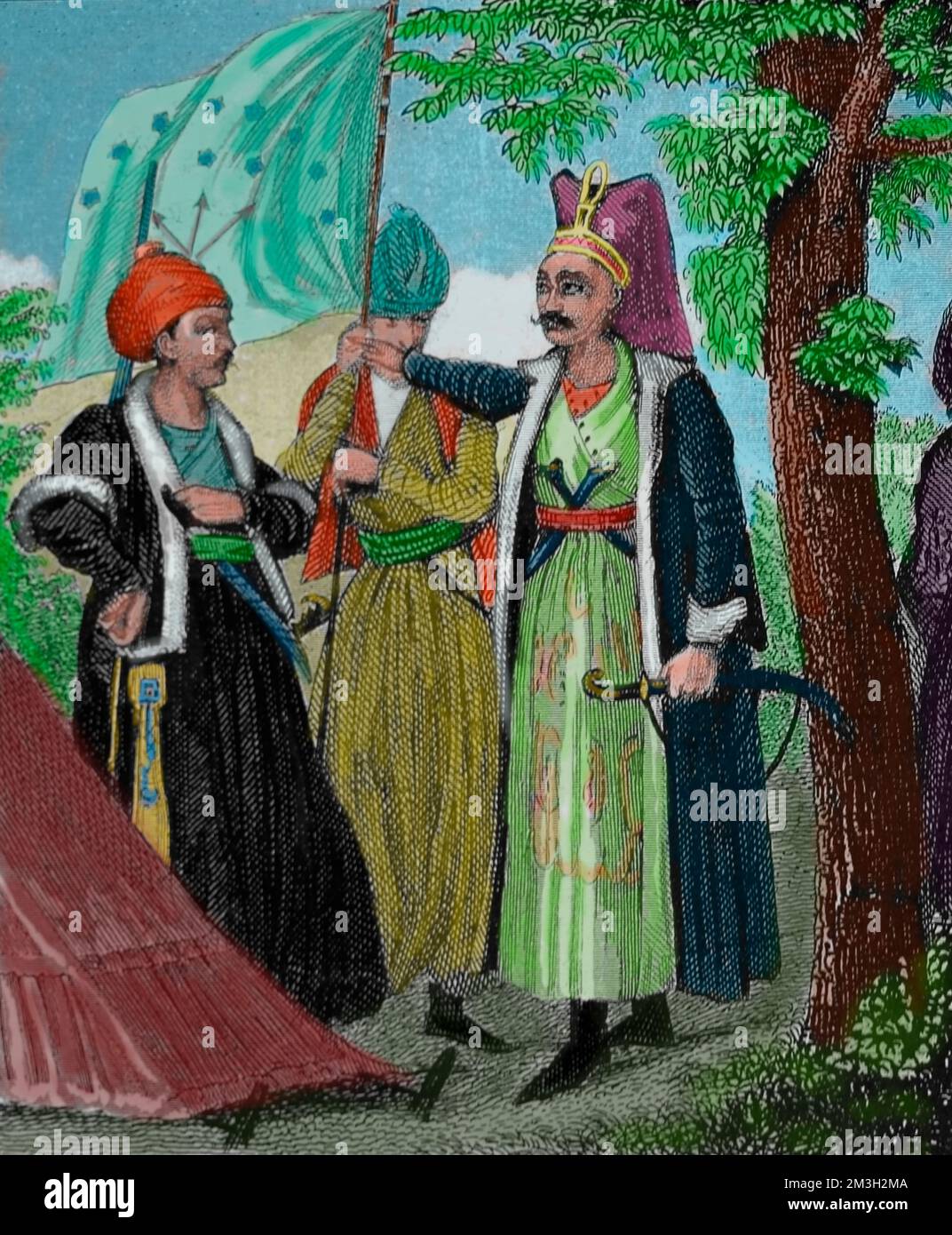 Troops of the older turkish military system Stock Photohttps://www.alamy.com/image-license-details/?v=1https://www.alamy.com/troops-of-the-older-turkish-military-system-image501319962.html
Troops of the older turkish military system Stock Photohttps://www.alamy.com/image-license-details/?v=1https://www.alamy.com/troops-of-the-older-turkish-military-system-image501319962.htmlRM2M3H2MA–Troops of the older turkish military system
 Istanbul, Turkey. 27th Sep, 2021. A visitor views exhibits at the Beykoz Crystal and Glass Museum in Istanbul, Turkey, on Sept. 27, 2021. A magnificent dining table embellished with unique examples of fine glass art from several European manufacturers, reflecting the power of the Ottoman sultans, is on display at the museum. Credit: Osman Orsal/Xinhua/Alamy Live News Stock Photohttps://www.alamy.com/image-license-details/?v=1https://www.alamy.com/istanbul-turkey-27th-sep-2021-a-visitor-views-exhibits-at-the-beykoz-crystal-and-glass-museum-in-istanbul-turkey-on-sept-27-2021-a-magnificent-dining-table-embellished-with-unique-examples-of-fine-glass-art-from-several-european-manufacturers-reflecting-the-power-of-the-ottoman-sultans-is-on-display-at-the-museum-credit-osman-orsalxinhuaalamy-live-news-image444459027.html
Istanbul, Turkey. 27th Sep, 2021. A visitor views exhibits at the Beykoz Crystal and Glass Museum in Istanbul, Turkey, on Sept. 27, 2021. A magnificent dining table embellished with unique examples of fine glass art from several European manufacturers, reflecting the power of the Ottoman sultans, is on display at the museum. Credit: Osman Orsal/Xinhua/Alamy Live News Stock Photohttps://www.alamy.com/image-license-details/?v=1https://www.alamy.com/istanbul-turkey-27th-sep-2021-a-visitor-views-exhibits-at-the-beykoz-crystal-and-glass-museum-in-istanbul-turkey-on-sept-27-2021-a-magnificent-dining-table-embellished-with-unique-examples-of-fine-glass-art-from-several-european-manufacturers-reflecting-the-power-of-the-ottoman-sultans-is-on-display-at-the-museum-credit-osman-orsalxinhuaalamy-live-news-image444459027.htmlRM2GR2T0K–Istanbul, Turkey. 27th Sep, 2021. A visitor views exhibits at the Beykoz Crystal and Glass Museum in Istanbul, Turkey, on Sept. 27, 2021. A magnificent dining table embellished with unique examples of fine glass art from several European manufacturers, reflecting the power of the Ottoman sultans, is on display at the museum. Credit: Osman Orsal/Xinhua/Alamy Live News
 City of Ottoman sultans. Aerial view of Amasya, Turkey. Stock Photohttps://www.alamy.com/image-license-details/?v=1https://www.alamy.com/city-of-ottoman-sultans-aerial-view-of-amasya-turkey-image230520871.html
City of Ottoman sultans. Aerial view of Amasya, Turkey. Stock Photohttps://www.alamy.com/image-license-details/?v=1https://www.alamy.com/city-of-ottoman-sultans-aerial-view-of-amasya-turkey-image230520871.htmlRFRB13M7–City of Ottoman sultans. Aerial view of Amasya, Turkey.
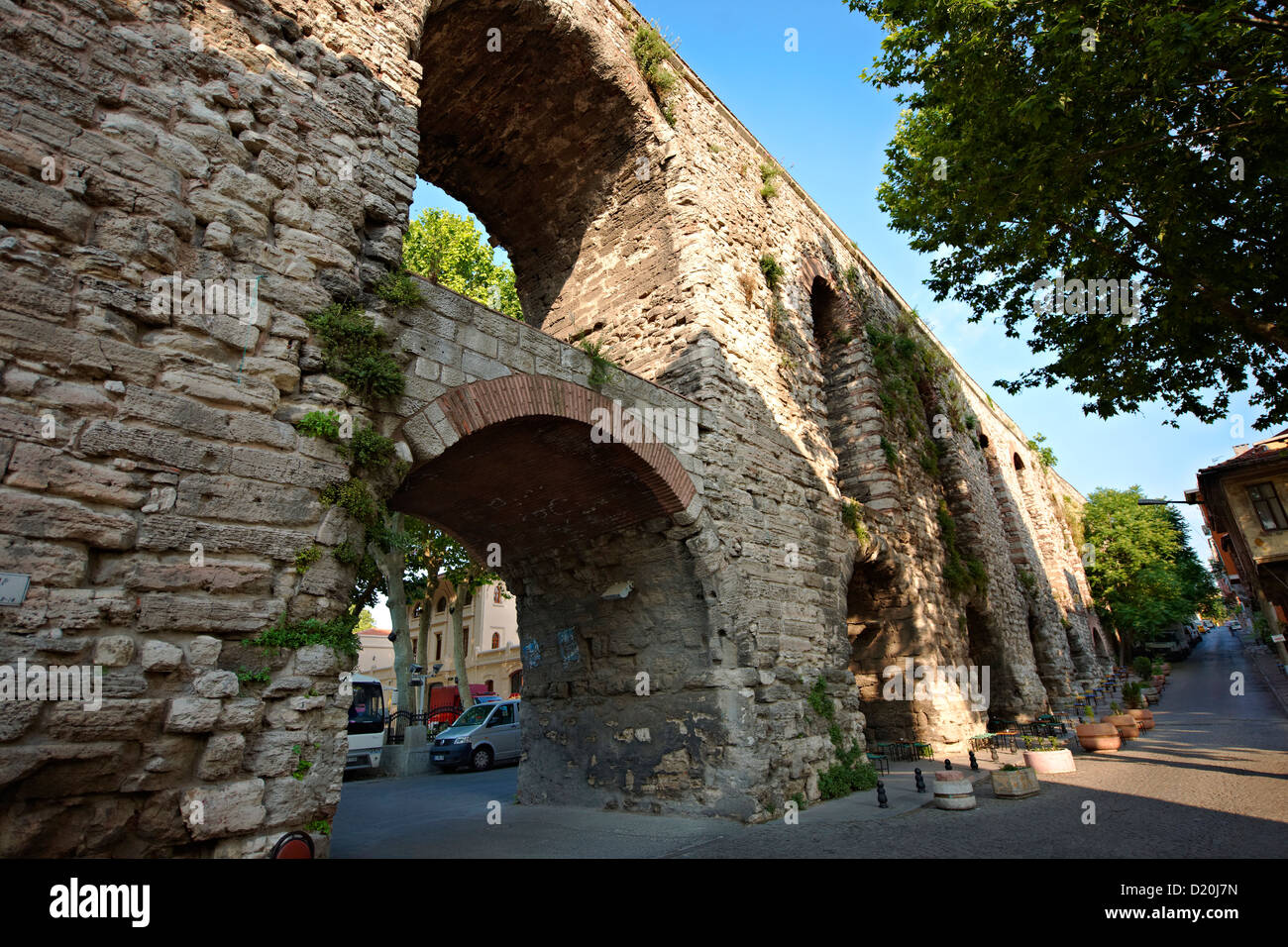 The Valens Aqueduct completed by Roman Emperor Valens in the late 4th century AD, it was restored by several Ottoman Sultans, Is Stock Photohttps://www.alamy.com/image-license-details/?v=1https://www.alamy.com/stock-photo-the-valens-aqueduct-completed-by-roman-emperor-valens-in-the-late-52874745.html
The Valens Aqueduct completed by Roman Emperor Valens in the late 4th century AD, it was restored by several Ottoman Sultans, Is Stock Photohttps://www.alamy.com/image-license-details/?v=1https://www.alamy.com/stock-photo-the-valens-aqueduct-completed-by-roman-emperor-valens-in-the-late-52874745.htmlRFD20J7N–The Valens Aqueduct completed by Roman Emperor Valens in the late 4th century AD, it was restored by several Ottoman Sultans, Is
 Janissaries. Elite infantry units that formed the Ottoman Sultan's household troops and bodyguards. Engraving. 19th century. Stock Photohttps://www.alamy.com/image-license-details/?v=1https://www.alamy.com/stock-photo-janissaries-elite-infantry-units-that-formed-the-ottoman-sultans-household-84586460.html
Janissaries. Elite infantry units that formed the Ottoman Sultan's household troops and bodyguards. Engraving. 19th century. Stock Photohttps://www.alamy.com/image-license-details/?v=1https://www.alamy.com/stock-photo-janissaries-elite-infantry-units-that-formed-the-ottoman-sultans-household-84586460.htmlRMEWH6W0–Janissaries. Elite infantry units that formed the Ottoman Sultan's household troops and bodyguards. Engraving. 19th century.
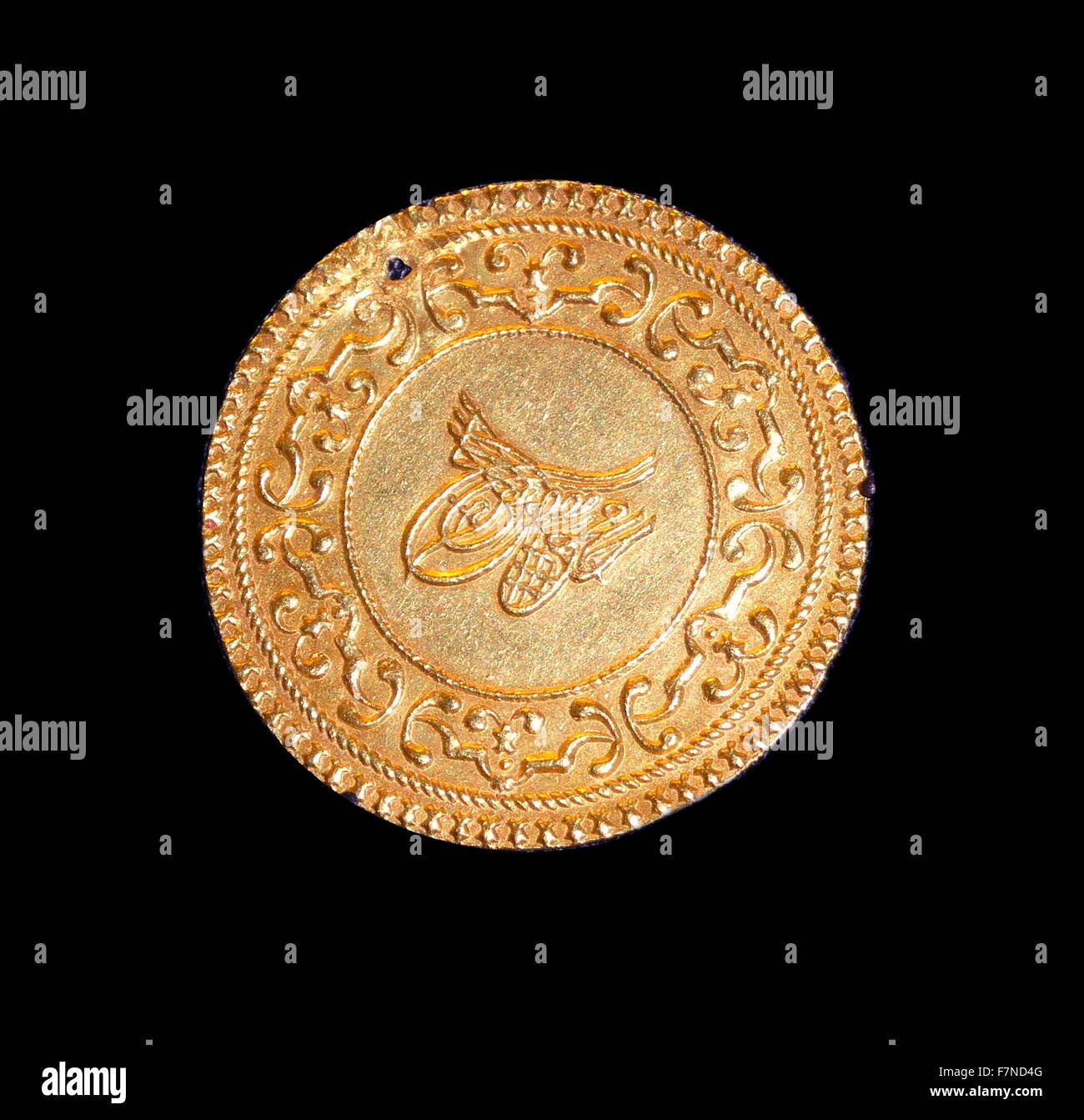 Gold Ottoman coin, Constantinople (Istanbul, Turkey), 1757. Ottoman Sultans used an elaborate signature, called the Tugra, to represent themselves on their coins. The Tugra was used as the imperial signature of the Sultan Stock Photohttps://www.alamy.com/image-license-details/?v=1https://www.alamy.com/stock-photo-gold-ottoman-coin-constantinople-istanbul-turkey-1757-ottoman-sultans-90825744.html
Gold Ottoman coin, Constantinople (Istanbul, Turkey), 1757. Ottoman Sultans used an elaborate signature, called the Tugra, to represent themselves on their coins. The Tugra was used as the imperial signature of the Sultan Stock Photohttps://www.alamy.com/image-license-details/?v=1https://www.alamy.com/stock-photo-gold-ottoman-coin-constantinople-istanbul-turkey-1757-ottoman-sultans-90825744.htmlRMF7ND4G–Gold Ottoman coin, Constantinople (Istanbul, Turkey), 1757. Ottoman Sultans used an elaborate signature, called the Tugra, to represent themselves on their coins. The Tugra was used as the imperial signature of the Sultan
 Ottoman sultan's boat waiting in front of the castle walls Stock Photohttps://www.alamy.com/image-license-details/?v=1https://www.alamy.com/ottoman-sultans-boat-waiting-in-front-of-the-castle-walls-image434218381.html
Ottoman sultan's boat waiting in front of the castle walls Stock Photohttps://www.alamy.com/image-license-details/?v=1https://www.alamy.com/ottoman-sultans-boat-waiting-in-front-of-the-castle-walls-image434218381.htmlRF2G6C9Y9–Ottoman sultan's boat waiting in front of the castle walls
 ISTANBUL, Turkey / Türkiye — The tomb of Sultan Selim II (reign 1566-1574) in which the Sultan, his wife Nurbana Sultan, along with other family members, including sons and daughters, are buried. It was the first tomb constructed in the Hagia Sophia cemetery. Designed by Architect Sinan in 1577, it features and octagonal plan with two domes and is decorated with Iznik tiles and calligraphy inscriptions. The cemetery of Hagia Sophia, next to the main building, contains five tombs belonging to Ottoman Sultans and their family members. Stock Photohttps://www.alamy.com/image-license-details/?v=1https://www.alamy.com/stock-photo-istanbul-turkey-trkiye-the-tomb-of-sultan-selim-ii-reign-1566-1574-78523723.html
ISTANBUL, Turkey / Türkiye — The tomb of Sultan Selim II (reign 1566-1574) in which the Sultan, his wife Nurbana Sultan, along with other family members, including sons and daughters, are buried. It was the first tomb constructed in the Hagia Sophia cemetery. Designed by Architect Sinan in 1577, it features and octagonal plan with two domes and is decorated with Iznik tiles and calligraphy inscriptions. The cemetery of Hagia Sophia, next to the main building, contains five tombs belonging to Ottoman Sultans and their family members. Stock Photohttps://www.alamy.com/image-license-details/?v=1https://www.alamy.com/stock-photo-istanbul-turkey-trkiye-the-tomb-of-sultan-selim-ii-reign-1566-1574-78523723.htmlRMEFN1PK–ISTANBUL, Turkey / Türkiye — The tomb of Sultan Selim II (reign 1566-1574) in which the Sultan, his wife Nurbana Sultan, along with other family members, including sons and daughters, are buried. It was the first tomb constructed in the Hagia Sophia cemetery. Designed by Architect Sinan in 1577, it features and octagonal plan with two domes and is decorated with Iznik tiles and calligraphy inscriptions. The cemetery of Hagia Sophia, next to the main building, contains five tombs belonging to Ottoman Sultans and their family members.
 The Topkapi Palace is a large palace in Istanbul, Turkey Stock Photohttps://www.alamy.com/image-license-details/?v=1https://www.alamy.com/stock-photo-the-topkapi-palace-is-a-large-palace-in-istanbul-turkey-56239753.html
The Topkapi Palace is a large palace in Istanbul, Turkey Stock Photohttps://www.alamy.com/image-license-details/?v=1https://www.alamy.com/stock-photo-the-topkapi-palace-is-a-large-palace-in-istanbul-turkey-56239753.htmlRMD7DXAH–The Topkapi Palace is a large palace in Istanbul, Turkey
 Topkapi Palace, Ottoman sultans palace, Istanbul, Turkey Stock Photohttps://www.alamy.com/image-license-details/?v=1https://www.alamy.com/stock-photo-topkapi-palace-ottoman-sultans-palace-istanbul-turkey-78578964.html
Topkapi Palace, Ottoman sultans palace, Istanbul, Turkey Stock Photohttps://www.alamy.com/image-license-details/?v=1https://www.alamy.com/stock-photo-topkapi-palace-ottoman-sultans-palace-istanbul-turkey-78578964.htmlRMEFRG7G–Topkapi Palace, Ottoman sultans palace, Istanbul, Turkey
 Built from 1459 the Topkapi Palace in Istanbul was for nearly 400 years the residence of the Ottoman sultans. Stock Photohttps://www.alamy.com/image-license-details/?v=1https://www.alamy.com/stock-photo-built-from-1459-the-topkapi-palace-in-istanbul-was-for-nearly-400-83551059.html
Built from 1459 the Topkapi Palace in Istanbul was for nearly 400 years the residence of the Ottoman sultans. Stock Photohttps://www.alamy.com/image-license-details/?v=1https://www.alamy.com/stock-photo-built-from-1459-the-topkapi-palace-in-istanbul-was-for-nearly-400-83551059.htmlRMERX26B–Built from 1459 the Topkapi Palace in Istanbul was for nearly 400 years the residence of the Ottoman sultans.
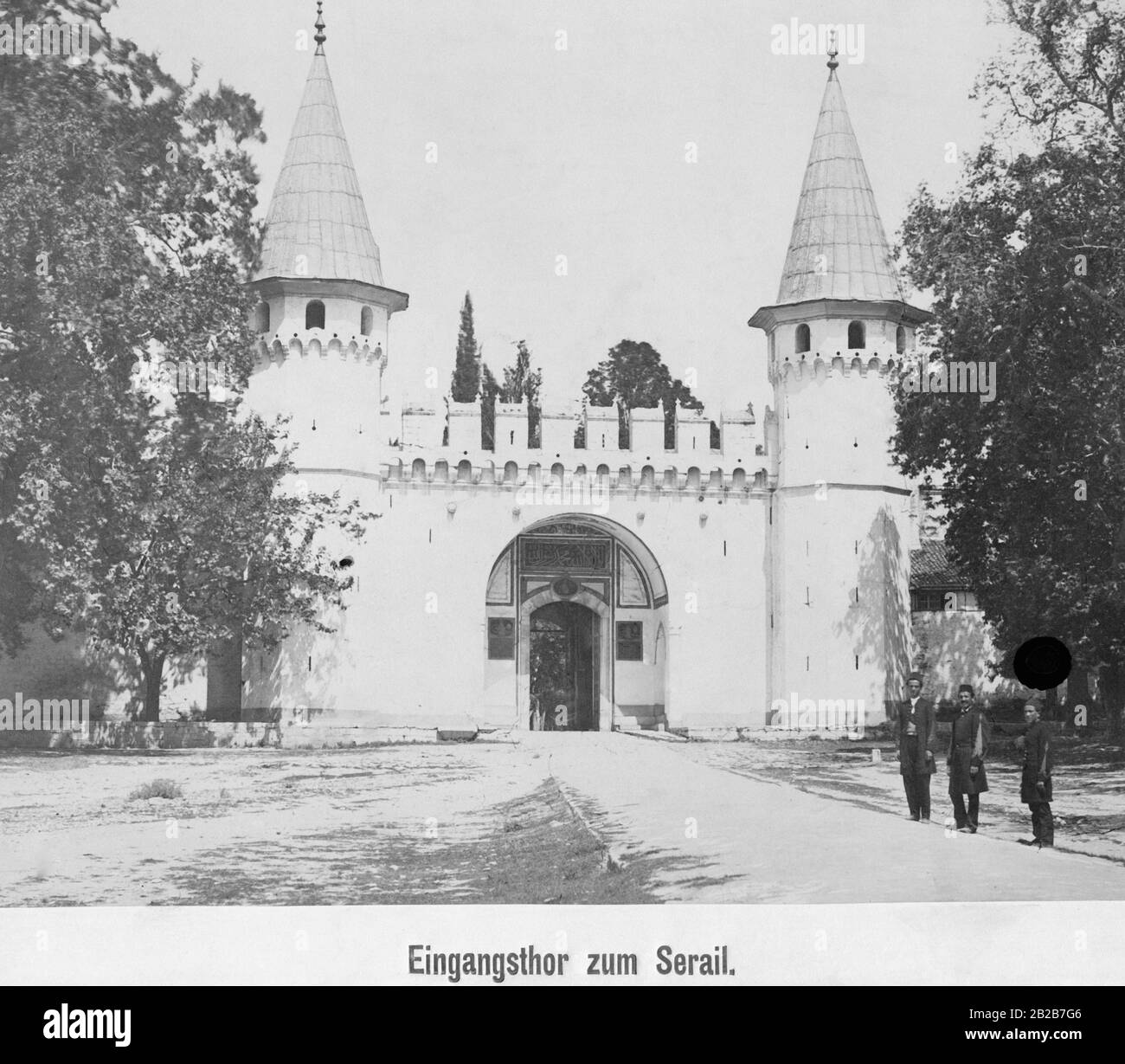 The entrance gate to Topkapi Palace in Istanbul, which served for centuries as the residence and seat of government of the Ottoman sultans and the administrative center of the Ottoman Empire. The photo is undated. Stock Photohttps://www.alamy.com/image-license-details/?v=1https://www.alamy.com/the-entrance-gate-to-topkapi-palace-in-istanbul-which-served-for-centuries-as-the-residence-and-seat-of-government-of-the-ottoman-sultans-and-the-administrative-center-of-the-ottoman-empire-the-photo-is-undated-image345684086.html
The entrance gate to Topkapi Palace in Istanbul, which served for centuries as the residence and seat of government of the Ottoman sultans and the administrative center of the Ottoman Empire. The photo is undated. Stock Photohttps://www.alamy.com/image-license-details/?v=1https://www.alamy.com/the-entrance-gate-to-topkapi-palace-in-istanbul-which-served-for-centuries-as-the-residence-and-seat-of-government-of-the-ottoman-sultans-and-the-administrative-center-of-the-ottoman-empire-the-photo-is-undated-image345684086.htmlRM2B2B7G6–The entrance gate to Topkapi Palace in Istanbul, which served for centuries as the residence and seat of government of the Ottoman sultans and the administrative center of the Ottoman Empire. The photo is undated.
 Turkey. Istanbul. Topkapi Palace. Primary redidence of the Ottoman Sultans for 1465-1856. Hall of Harem. Stock Photohttps://www.alamy.com/image-license-details/?v=1https://www.alamy.com/turkey-istanbul-topkapi-palace-primary-redidence-of-the-ottoman-sultans-for-1465-1856-hall-of-harem-image210453047.html
Turkey. Istanbul. Topkapi Palace. Primary redidence of the Ottoman Sultans for 1465-1856. Hall of Harem. Stock Photohttps://www.alamy.com/image-license-details/?v=1https://www.alamy.com/turkey-istanbul-topkapi-palace-primary-redidence-of-the-ottoman-sultans-for-1465-1856-hall-of-harem-image210453047.htmlRMP6AY07–Turkey. Istanbul. Topkapi Palace. Primary redidence of the Ottoman Sultans for 1465-1856. Hall of Harem.
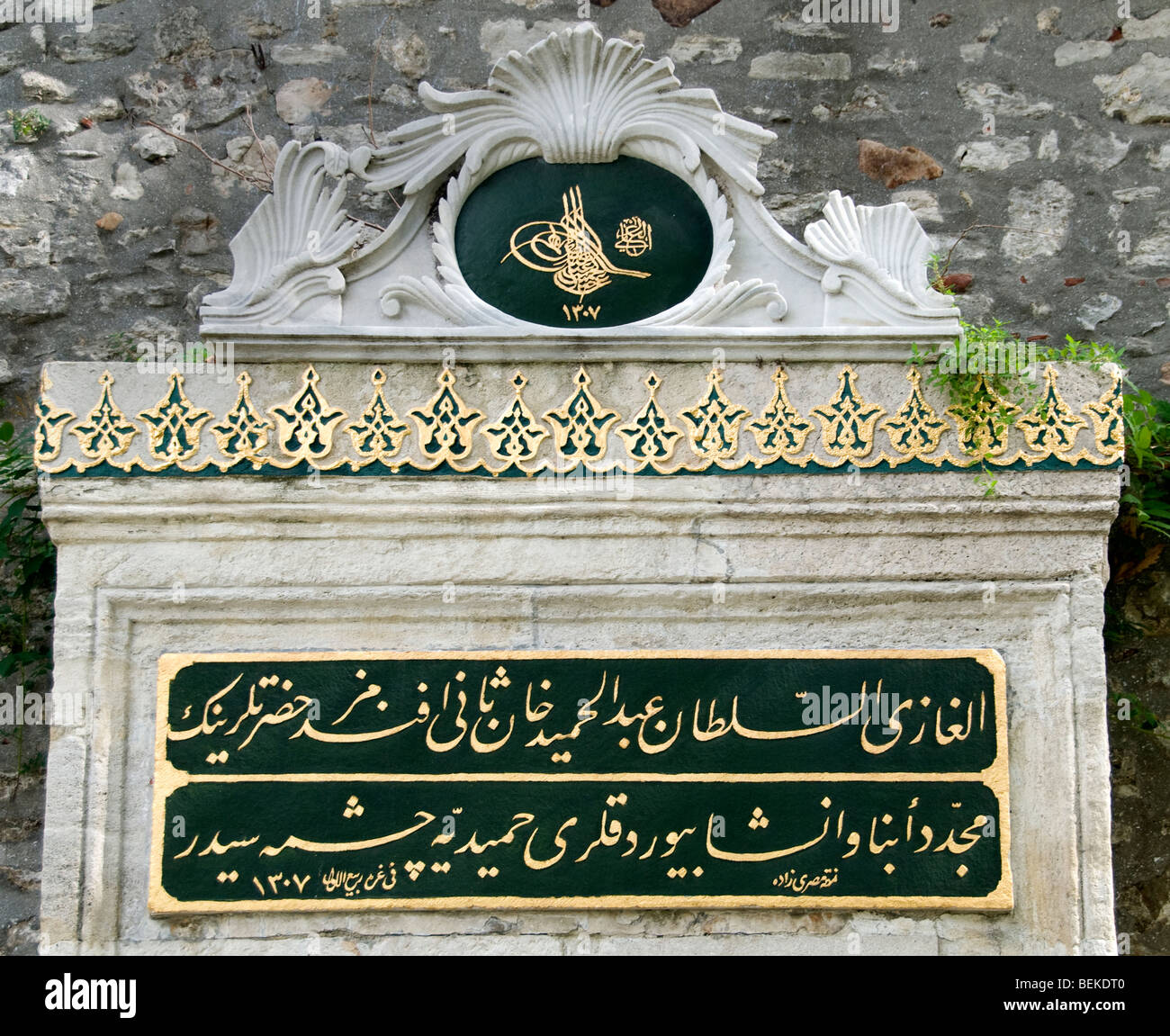 Topkapi Palace Museum Istanbul Turkey Ottoman Sultans Stock Photohttps://www.alamy.com/image-license-details/?v=1https://www.alamy.com/stock-photo-topkapi-palace-museum-istanbul-turkey-ottoman-sultans-26243504.html
Topkapi Palace Museum Istanbul Turkey Ottoman Sultans Stock Photohttps://www.alamy.com/image-license-details/?v=1https://www.alamy.com/stock-photo-topkapi-palace-museum-istanbul-turkey-ottoman-sultans-26243504.htmlRMBEKDT0–Topkapi Palace Museum Istanbul Turkey Ottoman Sultans
 The Topkapi Palace a residence of the Ottoman Sultans, view from the Golden Horn in Istanbul, Turkey Stock Photohttps://www.alamy.com/image-license-details/?v=1https://www.alamy.com/the-topkapi-palace-a-residence-of-the-ottoman-sultans-view-from-the-golden-horn-in-istanbul-turkey-image566415420.html
The Topkapi Palace a residence of the Ottoman Sultans, view from the Golden Horn in Istanbul, Turkey Stock Photohttps://www.alamy.com/image-license-details/?v=1https://www.alamy.com/the-topkapi-palace-a-residence-of-the-ottoman-sultans-view-from-the-golden-horn-in-istanbul-turkey-image566415420.htmlRF2RWECJ4–The Topkapi Palace a residence of the Ottoman Sultans, view from the Golden Horn in Istanbul, Turkey
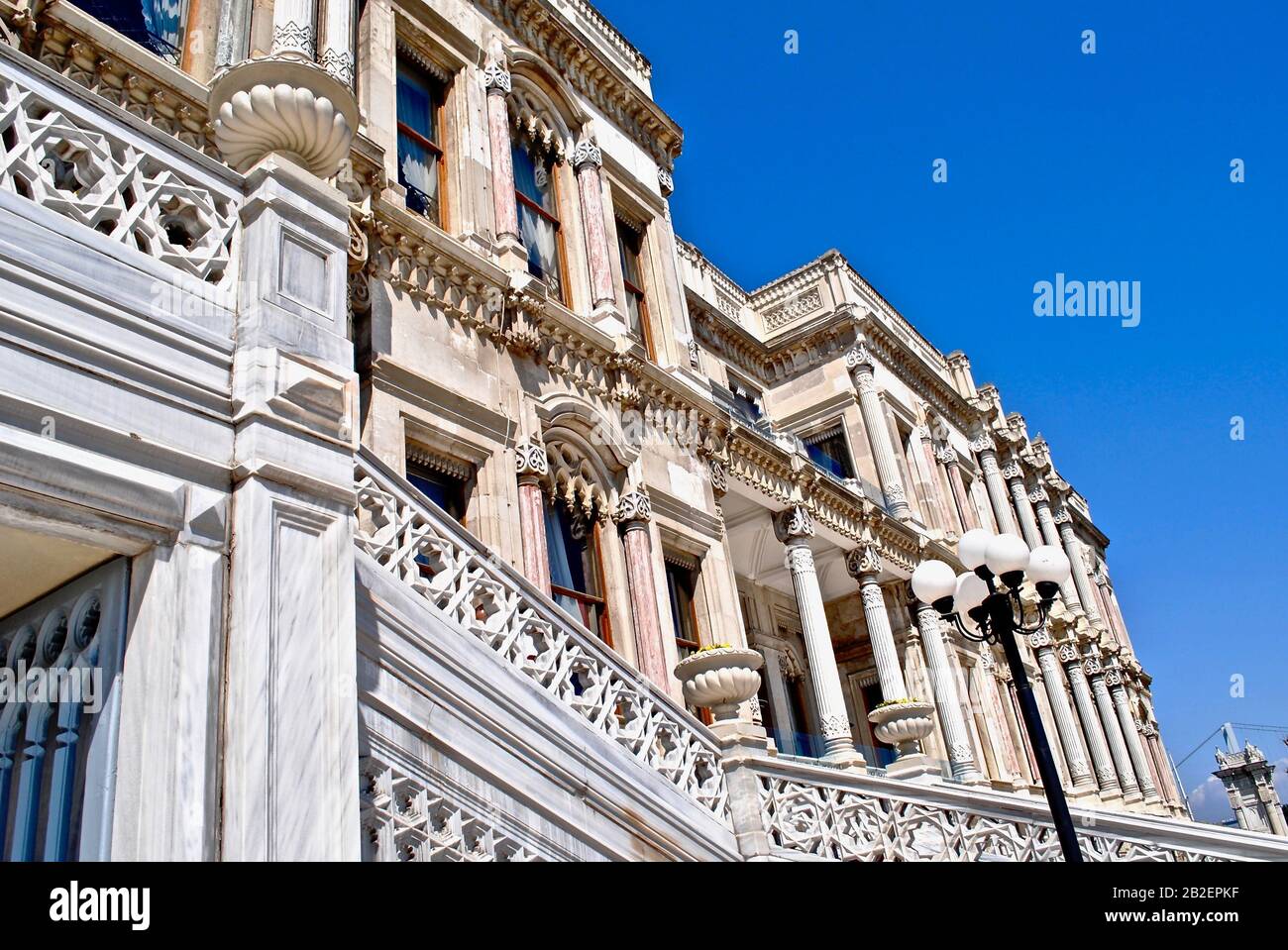 ISTANBUL, TURKEY: Ciragan Palace was once the palace of Ottoman sultans and is now a luxury hotel. Ornate exterior entrance with staircase. Stock Photohttps://www.alamy.com/image-license-details/?v=1https://www.alamy.com/istanbul-turkey-ciragan-palace-was-once-the-palace-of-ottoman-sultans-and-is-now-a-luxury-hotel-ornate-exterior-entrance-with-staircase-image345761795.html
ISTANBUL, TURKEY: Ciragan Palace was once the palace of Ottoman sultans and is now a luxury hotel. Ornate exterior entrance with staircase. Stock Photohttps://www.alamy.com/image-license-details/?v=1https://www.alamy.com/istanbul-turkey-ciragan-palace-was-once-the-palace-of-ottoman-sultans-and-is-now-a-luxury-hotel-ornate-exterior-entrance-with-staircase-image345761795.htmlRF2B2EPKF–ISTANBUL, TURKEY: Ciragan Palace was once the palace of Ottoman sultans and is now a luxury hotel. Ornate exterior entrance with staircase.
 Artwork of traditional Ottoman Sultans Tugra Stock Photohttps://www.alamy.com/image-license-details/?v=1https://www.alamy.com/artwork-of-traditional-ottoman-sultans-tugra-image432549674.html
Artwork of traditional Ottoman Sultans Tugra Stock Photohttps://www.alamy.com/image-license-details/?v=1https://www.alamy.com/artwork-of-traditional-ottoman-sultans-tugra-image432549674.htmlRM2G3M9EJ–Artwork of traditional Ottoman Sultans Tugra
 . English: Two members of the select Peiks guard (Janissary halberdiers) of the Ottoman Sultans . 15 June 2011. Unknown, early 16th-century artist 475 Peiks Stock Photohttps://www.alamy.com/image-license-details/?v=1https://www.alamy.com/english-two-members-of-the-select-peiks-guard-janissary-halberdiers-of-the-ottoman-sultans-15-june-2011-unknown-early-16th-century-artist-475-peiks-image187896478.html
. English: Two members of the select Peiks guard (Janissary halberdiers) of the Ottoman Sultans . 15 June 2011. Unknown, early 16th-century artist 475 Peiks Stock Photohttps://www.alamy.com/image-license-details/?v=1https://www.alamy.com/english-two-members-of-the-select-peiks-guard-janissary-halberdiers-of-the-ottoman-sultans-15-june-2011-unknown-early-16th-century-artist-475-peiks-image187896478.htmlRMMWKBTE–. English: Two members of the select Peiks guard (Janissary halberdiers) of the Ottoman Sultans . 15 June 2011. Unknown, early 16th-century artist 475 Peiks
 Ottoman Sultans turbeh (tombs) in St. Sophia, Istanbul Turkey Stock Photohttps://www.alamy.com/image-license-details/?v=1https://www.alamy.com/stock-photo-ottoman-sultans-turbeh-tombs-in-st-sophia-istanbul-turkey-27754765.html
Ottoman Sultans turbeh (tombs) in St. Sophia, Istanbul Turkey Stock Photohttps://www.alamy.com/image-license-details/?v=1https://www.alamy.com/stock-photo-ottoman-sultans-turbeh-tombs-in-st-sophia-istanbul-turkey-27754765.htmlRFBH49DH–Ottoman Sultans turbeh (tombs) in St. Sophia, Istanbul Turkey
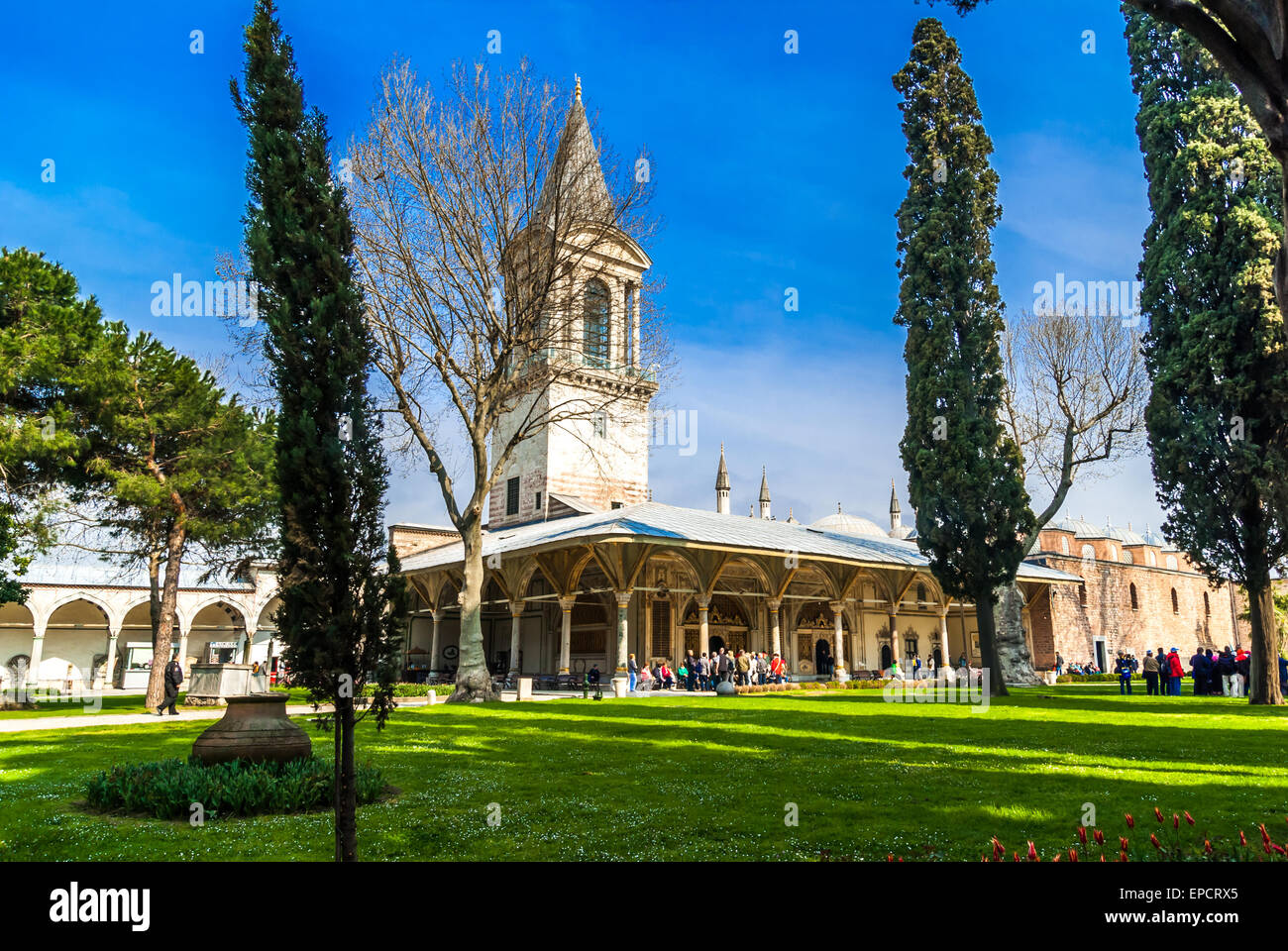 Topkapi Palace, Istanbul, Turkey Topkapi Palace was the primary residence of the Ottoman sultans for approximately 400 years Stock Photohttps://www.alamy.com/image-license-details/?v=1https://www.alamy.com/stock-photo-topkapi-palace-istanbul-turkey-topkapi-palace-was-the-primary-residence-82646093.html
Topkapi Palace, Istanbul, Turkey Topkapi Palace was the primary residence of the Ottoman sultans for approximately 400 years Stock Photohttps://www.alamy.com/image-license-details/?v=1https://www.alamy.com/stock-photo-topkapi-palace-istanbul-turkey-topkapi-palace-was-the-primary-residence-82646093.htmlRFEPCRX5–Topkapi Palace, Istanbul, Turkey Topkapi Palace was the primary residence of the Ottoman sultans for approximately 400 years
 Istanbul, Turkey. 27th Sep, 2021. A visitor views exhibits at the Beykoz Crystal and Glass Museum in Istanbul, Turkey, on Sept. 27, 2021. A magnificent dining table embellished with unique examples of fine glass art from several European manufacturers, reflecting the power of the Ottoman sultans, is on display at the museum. Credit: Osman Orsal/Xinhua/Alamy Live News Stock Photohttps://www.alamy.com/image-license-details/?v=1https://www.alamy.com/istanbul-turkey-27th-sep-2021-a-visitor-views-exhibits-at-the-beykoz-crystal-and-glass-museum-in-istanbul-turkey-on-sept-27-2021-a-magnificent-dining-table-embellished-with-unique-examples-of-fine-glass-art-from-several-european-manufacturers-reflecting-the-power-of-the-ottoman-sultans-is-on-display-at-the-museum-credit-osman-orsalxinhuaalamy-live-news-image444459026.html
Istanbul, Turkey. 27th Sep, 2021. A visitor views exhibits at the Beykoz Crystal and Glass Museum in Istanbul, Turkey, on Sept. 27, 2021. A magnificent dining table embellished with unique examples of fine glass art from several European manufacturers, reflecting the power of the Ottoman sultans, is on display at the museum. Credit: Osman Orsal/Xinhua/Alamy Live News Stock Photohttps://www.alamy.com/image-license-details/?v=1https://www.alamy.com/istanbul-turkey-27th-sep-2021-a-visitor-views-exhibits-at-the-beykoz-crystal-and-glass-museum-in-istanbul-turkey-on-sept-27-2021-a-magnificent-dining-table-embellished-with-unique-examples-of-fine-glass-art-from-several-european-manufacturers-reflecting-the-power-of-the-ottoman-sultans-is-on-display-at-the-museum-credit-osman-orsalxinhuaalamy-live-news-image444459026.htmlRM2GR2T0J–Istanbul, Turkey. 27th Sep, 2021. A visitor views exhibits at the Beykoz Crystal and Glass Museum in Istanbul, Turkey, on Sept. 27, 2021. A magnificent dining table embellished with unique examples of fine glass art from several European manufacturers, reflecting the power of the Ottoman sultans, is on display at the museum. Credit: Osman Orsal/Xinhua/Alamy Live News
 Letter said to have been written by the Prophet Muhammad, room of sacred relics, Topkapi Palace. It was acquired by the Ottoman sultans in the 16th century. Stock Photohttps://www.alamy.com/image-license-details/?v=1https://www.alamy.com/letter-said-to-have-been-written-by-the-prophet-muhammad-room-of-sacred-relics-topkapi-palace-it-was-acquired-by-the-ottoman-sultans-in-the-16th-century-image338022351.html
Letter said to have been written by the Prophet Muhammad, room of sacred relics, Topkapi Palace. It was acquired by the Ottoman sultans in the 16th century. Stock Photohttps://www.alamy.com/image-license-details/?v=1https://www.alamy.com/letter-said-to-have-been-written-by-the-prophet-muhammad-room-of-sacred-relics-topkapi-palace-it-was-acquired-by-the-ottoman-sultans-in-the-16th-century-image338022351.htmlRM2AHX6XR–Letter said to have been written by the Prophet Muhammad, room of sacred relics, Topkapi Palace. It was acquired by the Ottoman sultans in the 16th century.
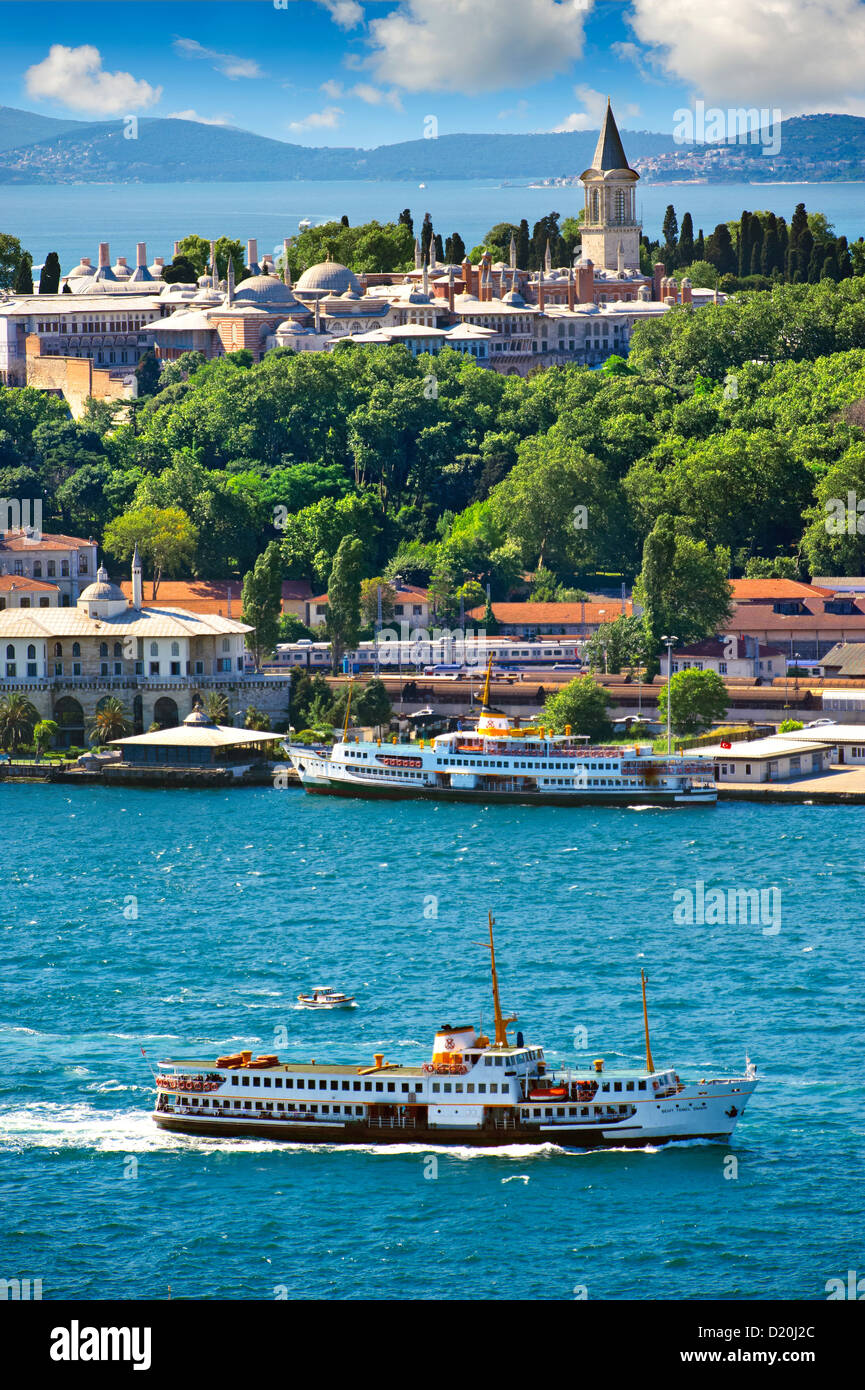 The Topkapi Palace on Sarayburnu or Seraglio Point and the banks of the Golden Horn in the foreground, Istanbul Turkey Stock Photohttps://www.alamy.com/image-license-details/?v=1https://www.alamy.com/stock-photo-the-topkapi-palace-on-sarayburnu-or-seraglio-point-and-the-banks-of-52874596.html
The Topkapi Palace on Sarayburnu or Seraglio Point and the banks of the Golden Horn in the foreground, Istanbul Turkey Stock Photohttps://www.alamy.com/image-license-details/?v=1https://www.alamy.com/stock-photo-the-topkapi-palace-on-sarayburnu-or-seraglio-point-and-the-banks-of-52874596.htmlRFD20J2C–The Topkapi Palace on Sarayburnu or Seraglio Point and the banks of the Golden Horn in the foreground, Istanbul Turkey
 Janissaries. Elite infantry units that formed the Ottoman Sultan's household troops and bodyguards. Engraving. 19th century. Colored. Stock Photohttps://www.alamy.com/image-license-details/?v=1https://www.alamy.com/stock-image-janissaries-elite-infantry-units-that-formed-the-ottoman-sultans-household-166183103.html
Janissaries. Elite infantry units that formed the Ottoman Sultan's household troops and bodyguards. Engraving. 19th century. Colored. Stock Photohttps://www.alamy.com/image-license-details/?v=1https://www.alamy.com/stock-image-janissaries-elite-infantry-units-that-formed-the-ottoman-sultans-household-166183103.htmlRMKJA86R–Janissaries. Elite infantry units that formed the Ottoman Sultan's household troops and bodyguards. Engraving. 19th century. Colored.
 Gold Ottoman coin, Constantinople (Istanbul, Turkey), 1757. Ottoman Sultans used an elaborate signature, called the Tugra, to represent themselves on their coins. The Tugra was used as the imperial signature of the Sultan Stock Photohttps://www.alamy.com/image-license-details/?v=1https://www.alamy.com/stock-photo-gold-ottoman-coin-constantinople-istanbul-turkey-1757-ottoman-sultans-90825739.html
Gold Ottoman coin, Constantinople (Istanbul, Turkey), 1757. Ottoman Sultans used an elaborate signature, called the Tugra, to represent themselves on their coins. The Tugra was used as the imperial signature of the Sultan Stock Photohttps://www.alamy.com/image-license-details/?v=1https://www.alamy.com/stock-photo-gold-ottoman-coin-constantinople-istanbul-turkey-1757-ottoman-sultans-90825739.htmlRMF7ND4B–Gold Ottoman coin, Constantinople (Istanbul, Turkey), 1757. Ottoman Sultans used an elaborate signature, called the Tugra, to represent themselves on their coins. The Tugra was used as the imperial signature of the Sultan
 Ottoman sultan's boat waiting in front of the castle walls Stock Photohttps://www.alamy.com/image-license-details/?v=1https://www.alamy.com/ottoman-sultans-boat-waiting-in-front-of-the-castle-walls-image434218378.html
Ottoman sultan's boat waiting in front of the castle walls Stock Photohttps://www.alamy.com/image-license-details/?v=1https://www.alamy.com/ottoman-sultans-boat-waiting-in-front-of-the-castle-walls-image434218378.htmlRF2G6C9Y6–Ottoman sultan's boat waiting in front of the castle walls
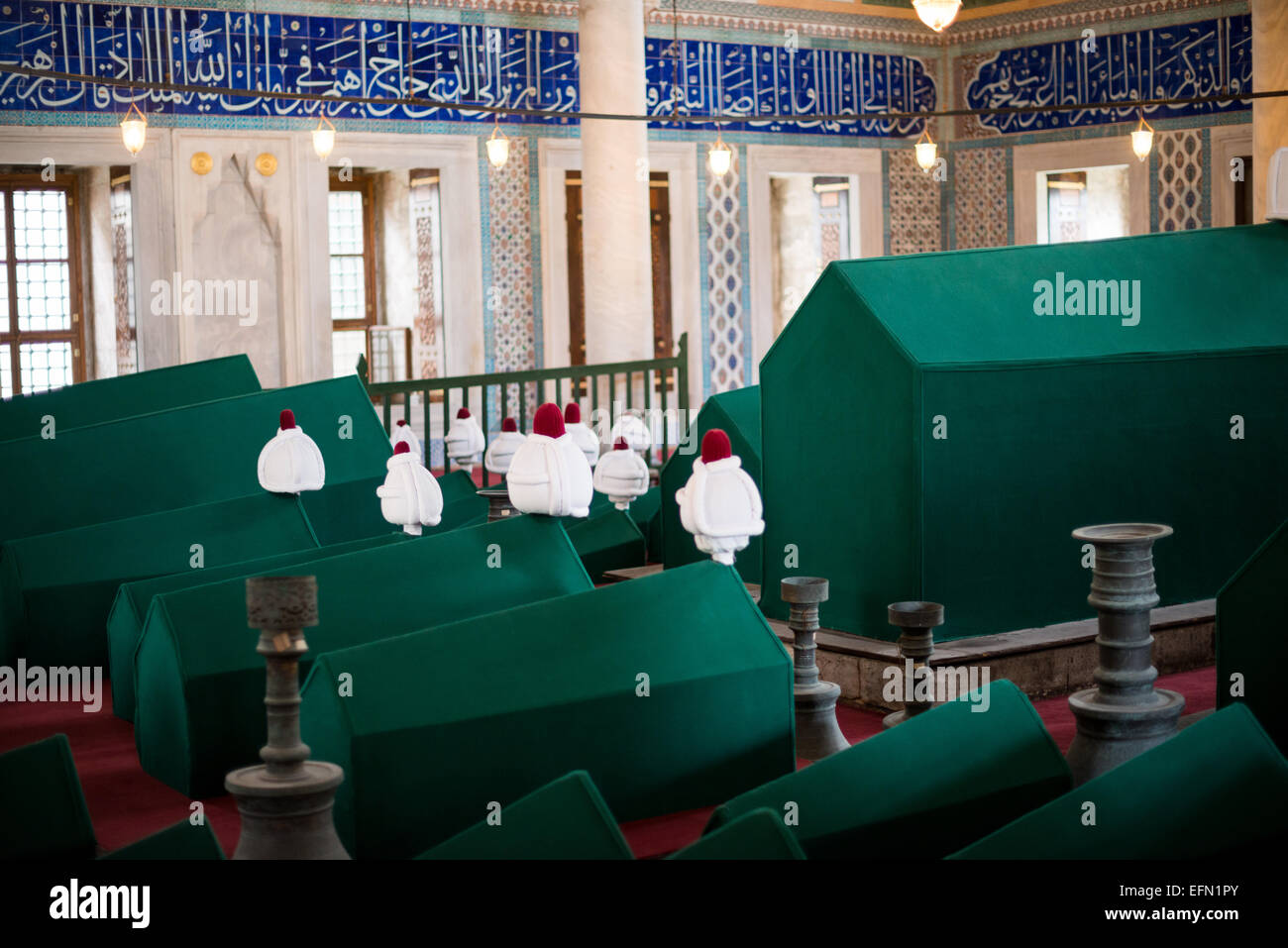 ISTANBUL, Turkey / Türkiye — The tomb of Sultan Selim II (reign 1566-1574) in which the Sultan, his wife Nurbana Sultan, along with other family members, including sons and daughters, are buried. It was the first tomb constructed in the Hagia Sophia cemetery. Designed by Architect Sinan in 1577, it features and octagonal plan with two domes and is decorated with Iznik tiles and calligraphy inscriptions. The cemetery of Hagia Sophia, next to the main building, contains five tombs belonging to Ottoman Sultans and their family members. Stock Photohttps://www.alamy.com/image-license-details/?v=1https://www.alamy.com/stock-photo-istanbul-turkey-trkiye-the-tomb-of-sultan-selim-ii-reign-1566-1574-78523731.html
ISTANBUL, Turkey / Türkiye — The tomb of Sultan Selim II (reign 1566-1574) in which the Sultan, his wife Nurbana Sultan, along with other family members, including sons and daughters, are buried. It was the first tomb constructed in the Hagia Sophia cemetery. Designed by Architect Sinan in 1577, it features and octagonal plan with two domes and is decorated with Iznik tiles and calligraphy inscriptions. The cemetery of Hagia Sophia, next to the main building, contains five tombs belonging to Ottoman Sultans and their family members. Stock Photohttps://www.alamy.com/image-license-details/?v=1https://www.alamy.com/stock-photo-istanbul-turkey-trkiye-the-tomb-of-sultan-selim-ii-reign-1566-1574-78523731.htmlRMEFN1PY–ISTANBUL, Turkey / Türkiye — The tomb of Sultan Selim II (reign 1566-1574) in which the Sultan, his wife Nurbana Sultan, along with other family members, including sons and daughters, are buried. It was the first tomb constructed in the Hagia Sophia cemetery. Designed by Architect Sinan in 1577, it features and octagonal plan with two domes and is decorated with Iznik tiles and calligraphy inscriptions. The cemetery of Hagia Sophia, next to the main building, contains five tombs belonging to Ottoman Sultans and their family members.
 The Topkapi Palace is a large palace in Istanbul, Turkey Stock Photohttps://www.alamy.com/image-license-details/?v=1https://www.alamy.com/stock-photo-the-topkapi-palace-is-a-large-palace-in-istanbul-turkey-56239863.html
The Topkapi Palace is a large palace in Istanbul, Turkey Stock Photohttps://www.alamy.com/image-license-details/?v=1https://www.alamy.com/stock-photo-the-topkapi-palace-is-a-large-palace-in-istanbul-turkey-56239863.htmlRFD7DXEF–The Topkapi Palace is a large palace in Istanbul, Turkey
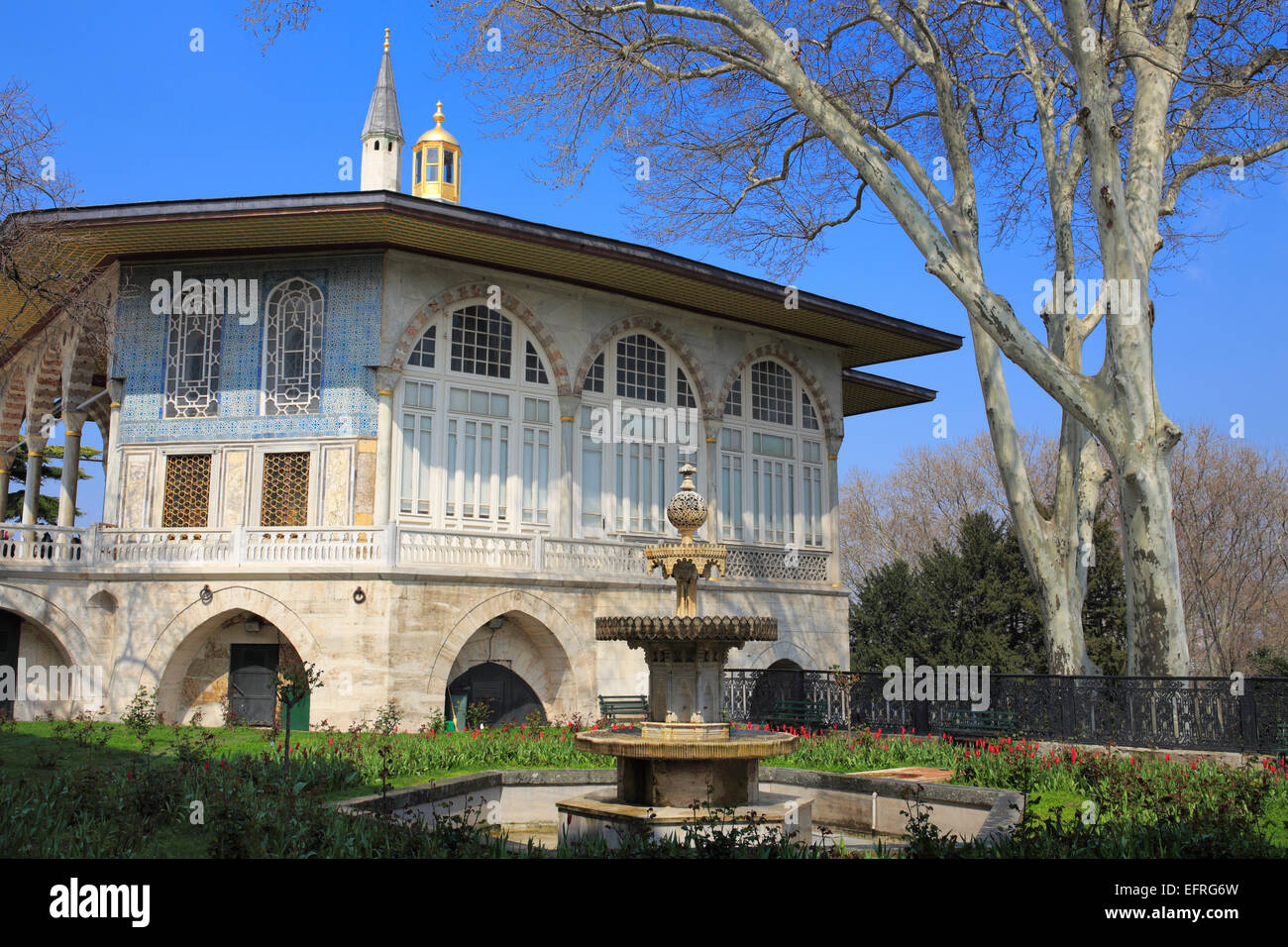 Revan Kiosk, Topkapi Palace, Ottoman sultans palace, Istanbul, Turkey Stock Photohttps://www.alamy.com/image-license-details/?v=1https://www.alamy.com/stock-photo-revan-kiosk-topkapi-palace-ottoman-sultans-palace-istanbul-turkey-78578945.html
Revan Kiosk, Topkapi Palace, Ottoman sultans palace, Istanbul, Turkey Stock Photohttps://www.alamy.com/image-license-details/?v=1https://www.alamy.com/stock-photo-revan-kiosk-topkapi-palace-ottoman-sultans-palace-istanbul-turkey-78578945.htmlRMEFRG6W–Revan Kiosk, Topkapi Palace, Ottoman sultans palace, Istanbul, Turkey
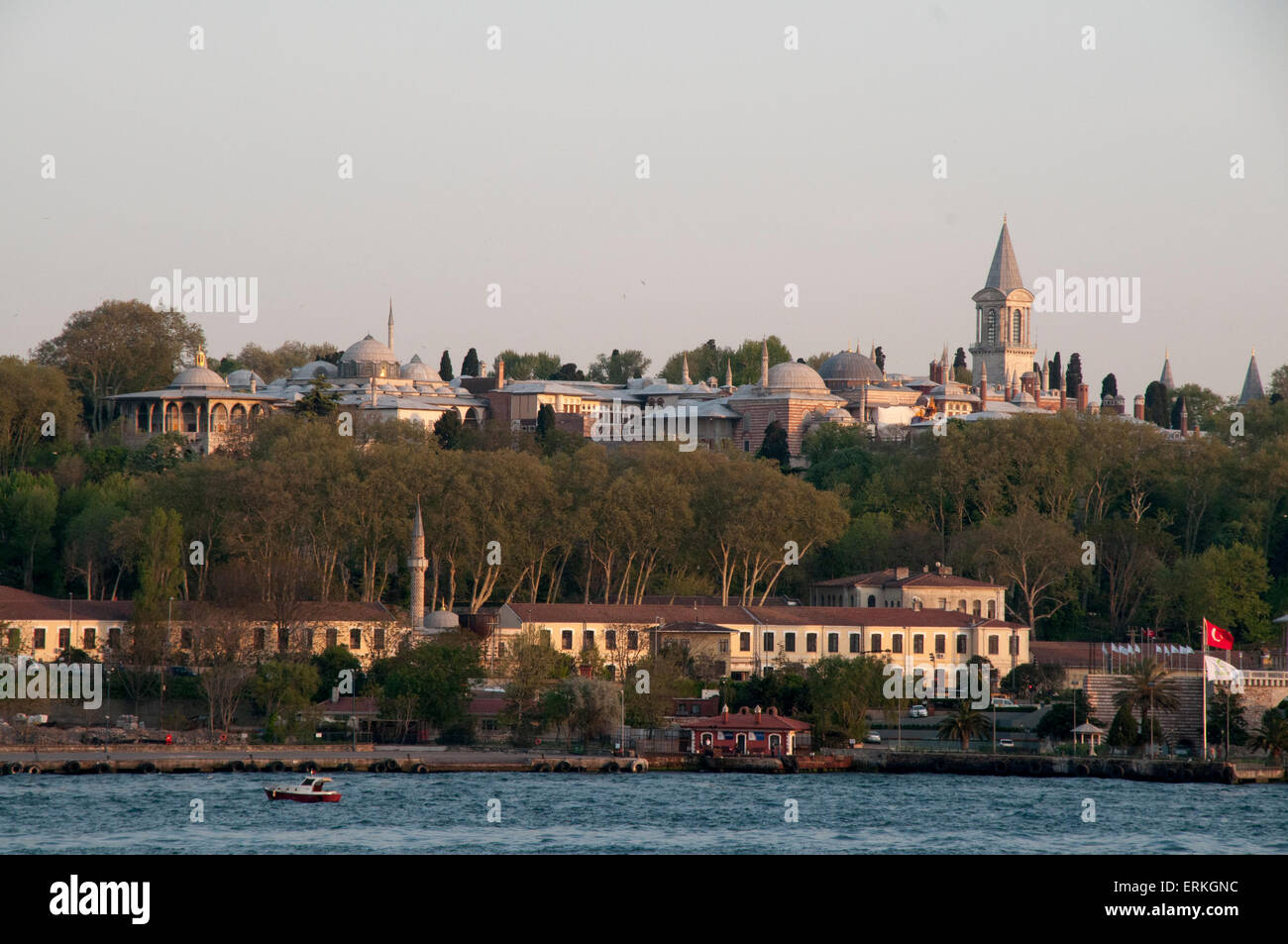 Built from 1459 the Topkapi Palace in Istanbul was for nearly 400 years the residence of the Ottoman sultans. Stock Photohttps://www.alamy.com/image-license-details/?v=1https://www.alamy.com/stock-photo-built-from-1459-the-topkapi-palace-in-istanbul-was-for-nearly-400-83408792.html
Built from 1459 the Topkapi Palace in Istanbul was for nearly 400 years the residence of the Ottoman sultans. Stock Photohttps://www.alamy.com/image-license-details/?v=1https://www.alamy.com/stock-photo-built-from-1459-the-topkapi-palace-in-istanbul-was-for-nearly-400-83408792.htmlRMERKGNC–Built from 1459 the Topkapi Palace in Istanbul was for nearly 400 years the residence of the Ottoman sultans.
 Staircase with valuable chandelier in the Dolmabahce Palace in Istanbul, the summer residence of the Ottoman sultans on the Bosporus in Istanbul. Undated photo. Stock Photohttps://www.alamy.com/image-license-details/?v=1https://www.alamy.com/staircase-with-valuable-chandelier-in-the-dolmabahce-palace-in-istanbul-the-summer-residence-of-the-ottoman-sultans-on-the-bosporus-in-istanbul-undated-photo-image345684112.html
Staircase with valuable chandelier in the Dolmabahce Palace in Istanbul, the summer residence of the Ottoman sultans on the Bosporus in Istanbul. Undated photo. Stock Photohttps://www.alamy.com/image-license-details/?v=1https://www.alamy.com/staircase-with-valuable-chandelier-in-the-dolmabahce-palace-in-istanbul-the-summer-residence-of-the-ottoman-sultans-on-the-bosporus-in-istanbul-undated-photo-image345684112.htmlRM2B2B7H4–Staircase with valuable chandelier in the Dolmabahce Palace in Istanbul, the summer residence of the Ottoman sultans on the Bosporus in Istanbul. Undated photo.
 Footed Dish with Foliate Rim in Imitation of Chinese Porcelain. Dimensions: H. 4 7/16in. (11.3 cm) Diam. 14 1/4 in. (36.2 cm). Date: ca. 1570-80. Many Ottoman sultans were avid collectors of Chinese porcelains, and the importation of these wares had a profound effect on regional ceramic production. The floral scrolls, foliate rim, and palette of this Iznik bowl reproduce those of a fifteenth-century Chinese prototype. The unusual addition of a raised foot on this piece, however, appears to be an Ottoman invention. Museum: Metropolitan Museum of Art, New York, USA. Stock Photohttps://www.alamy.com/image-license-details/?v=1https://www.alamy.com/footed-dish-with-foliate-rim-in-imitation-of-chinese-porcelain-dimensions-h-4-716in-113-cm-diam-14-14-in-362-cm-date-ca-1570-80-many-ottoman-sultans-were-avid-collectors-of-chinese-porcelains-and-the-importation-of-these-wares-had-a-profound-effect-on-regional-ceramic-production-the-floral-scrolls-foliate-rim-and-palette-of-this-iznik-bowl-reproduce-those-of-a-fifteenth-century-chinese-prototype-the-unusual-addition-of-a-raised-foot-on-this-piece-however-appears-to-be-an-ottoman-invention-museum-metropolitan-museum-of-art-new-york-usa-image212863611.html
Footed Dish with Foliate Rim in Imitation of Chinese Porcelain. Dimensions: H. 4 7/16in. (11.3 cm) Diam. 14 1/4 in. (36.2 cm). Date: ca. 1570-80. Many Ottoman sultans were avid collectors of Chinese porcelains, and the importation of these wares had a profound effect on regional ceramic production. The floral scrolls, foliate rim, and palette of this Iznik bowl reproduce those of a fifteenth-century Chinese prototype. The unusual addition of a raised foot on this piece, however, appears to be an Ottoman invention. Museum: Metropolitan Museum of Art, New York, USA. Stock Photohttps://www.alamy.com/image-license-details/?v=1https://www.alamy.com/footed-dish-with-foliate-rim-in-imitation-of-chinese-porcelain-dimensions-h-4-716in-113-cm-diam-14-14-in-362-cm-date-ca-1570-80-many-ottoman-sultans-were-avid-collectors-of-chinese-porcelains-and-the-importation-of-these-wares-had-a-profound-effect-on-regional-ceramic-production-the-floral-scrolls-foliate-rim-and-palette-of-this-iznik-bowl-reproduce-those-of-a-fifteenth-century-chinese-prototype-the-unusual-addition-of-a-raised-foot-on-this-piece-however-appears-to-be-an-ottoman-invention-museum-metropolitan-museum-of-art-new-york-usa-image212863611.htmlRMPA8NKR–Footed Dish with Foliate Rim in Imitation of Chinese Porcelain. Dimensions: H. 4 7/16in. (11.3 cm) Diam. 14 1/4 in. (36.2 cm). Date: ca. 1570-80. Many Ottoman sultans were avid collectors of Chinese porcelains, and the importation of these wares had a profound effect on regional ceramic production. The floral scrolls, foliate rim, and palette of this Iznik bowl reproduce those of a fifteenth-century Chinese prototype. The unusual addition of a raised foot on this piece, however, appears to be an Ottoman invention. Museum: Metropolitan Museum of Art, New York, USA.
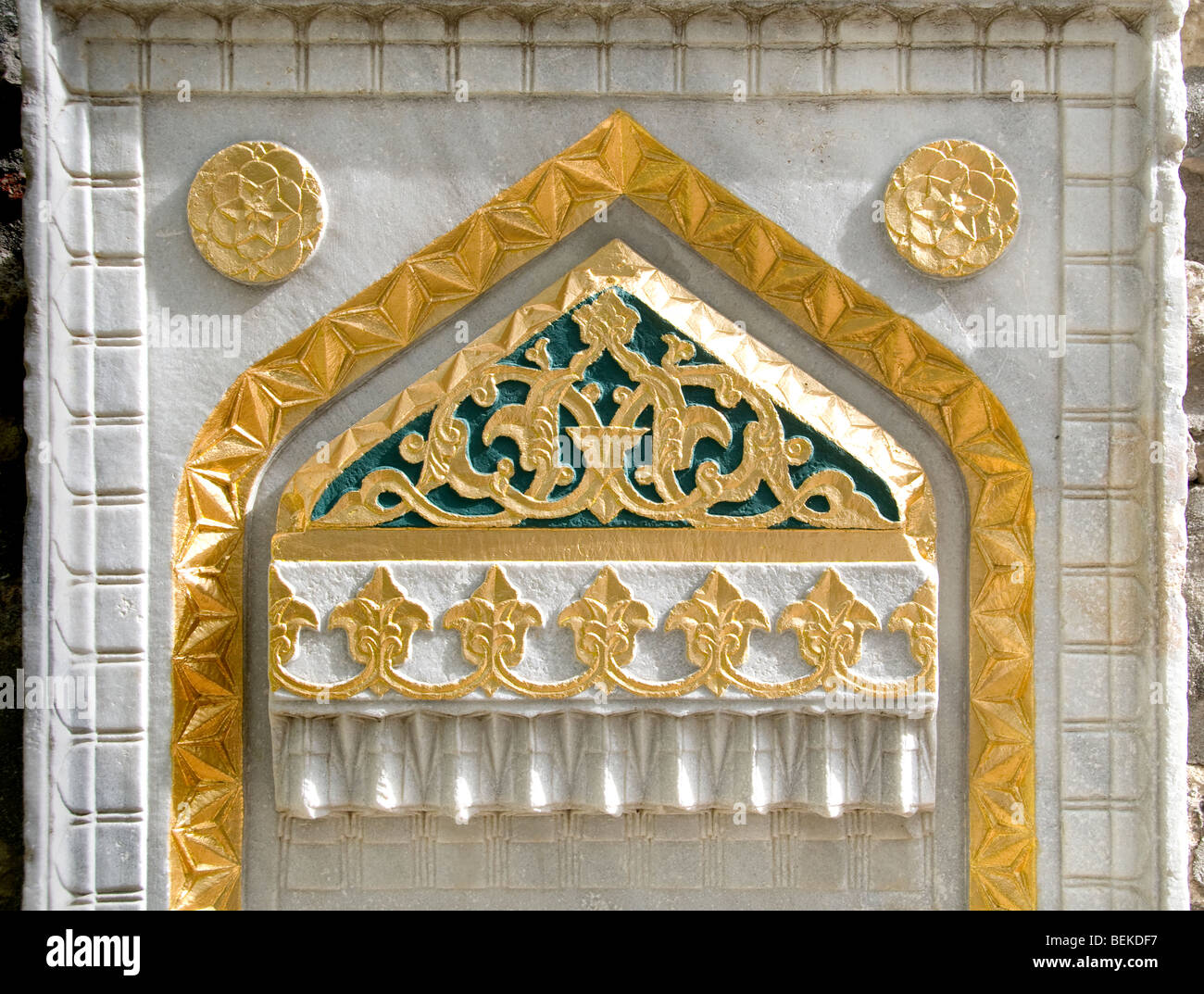 Topkapi Palace Museum Istanbul Turkey Ottoman Sultans Stock Photohttps://www.alamy.com/image-license-details/?v=1https://www.alamy.com/stock-photo-topkapi-palace-museum-istanbul-turkey-ottoman-sultans-26243259.html
Topkapi Palace Museum Istanbul Turkey Ottoman Sultans Stock Photohttps://www.alamy.com/image-license-details/?v=1https://www.alamy.com/stock-photo-topkapi-palace-museum-istanbul-turkey-ottoman-sultans-26243259.htmlRMBEKDF7–Topkapi Palace Museum Istanbul Turkey Ottoman Sultans
 A gilded marble ablution fountain in Topkapı Palace Museum, or the Seraglio, which in the 15th century, served as the main residence and administrative headquarters of the Ottoman sultans located in Istanbul.Turkey Stock Photohttps://www.alamy.com/image-license-details/?v=1https://www.alamy.com/stock-photo-a-gilded-marble-ablution-fountain-in-topkap-palace-museum-or-the-seraglio-52866060.html
A gilded marble ablution fountain in Topkapı Palace Museum, or the Seraglio, which in the 15th century, served as the main residence and administrative headquarters of the Ottoman sultans located in Istanbul.Turkey Stock Photohttps://www.alamy.com/image-license-details/?v=1https://www.alamy.com/stock-photo-a-gilded-marble-ablution-fountain-in-topkap-palace-museum-or-the-seraglio-52866060.htmlRMD2075G–A gilded marble ablution fountain in Topkapı Palace Museum, or the Seraglio, which in the 15th century, served as the main residence and administrative headquarters of the Ottoman sultans located in Istanbul.Turkey
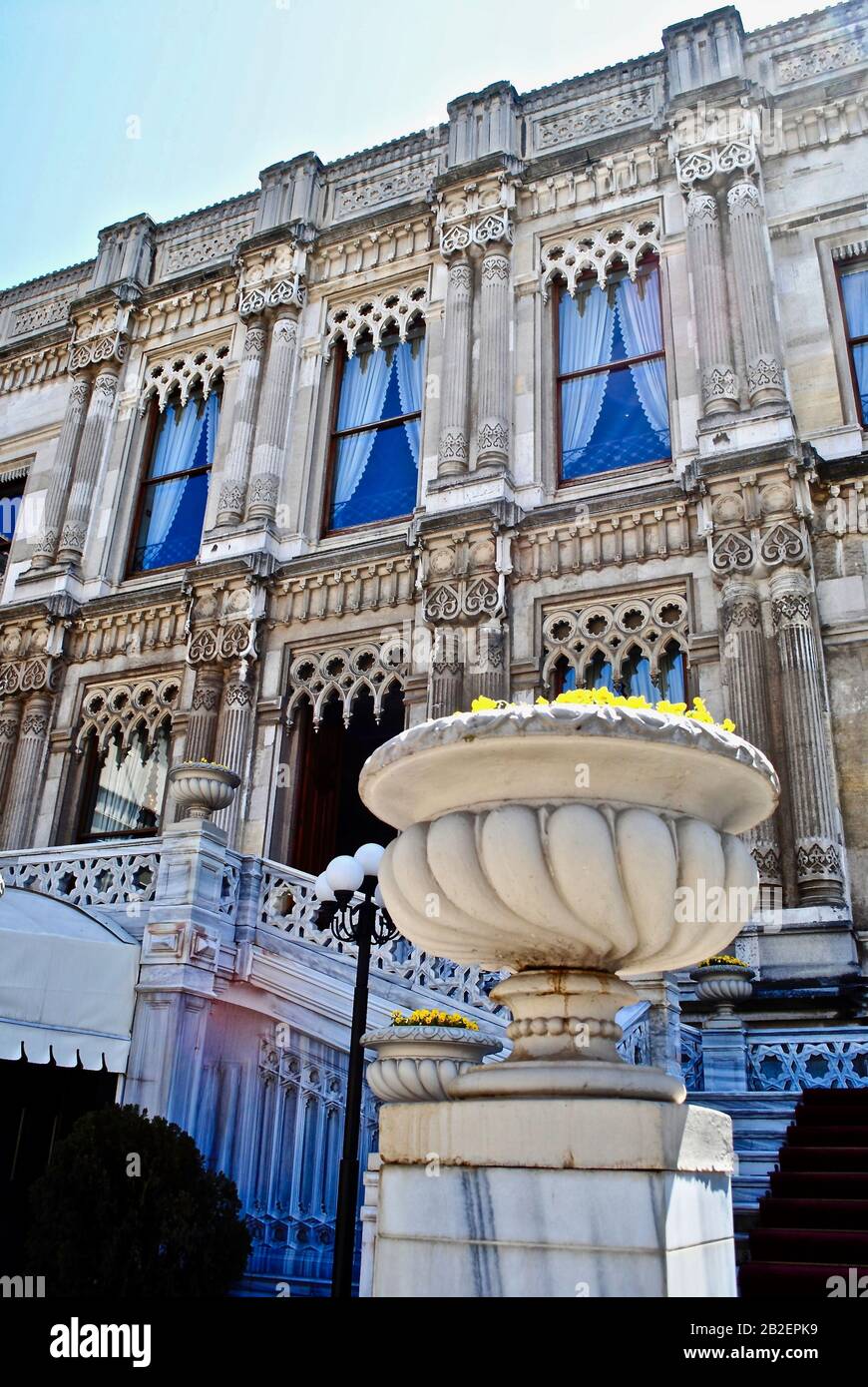 ISTANBUL, TURKEY - Ciragan Palace was once the palace of Ottoman sultans and is now a luxury hotel. Ornate exterior entrance with staircase Stock Photohttps://www.alamy.com/image-license-details/?v=1https://www.alamy.com/istanbul-turkey-ciragan-palace-was-once-the-palace-of-ottoman-sultans-and-is-now-a-luxury-hotel-ornate-exterior-entrance-with-staircase-image345761789.html
ISTANBUL, TURKEY - Ciragan Palace was once the palace of Ottoman sultans and is now a luxury hotel. Ornate exterior entrance with staircase Stock Photohttps://www.alamy.com/image-license-details/?v=1https://www.alamy.com/istanbul-turkey-ciragan-palace-was-once-the-palace-of-ottoman-sultans-and-is-now-a-luxury-hotel-ornate-exterior-entrance-with-staircase-image345761789.htmlRF2B2EPK9–ISTANBUL, TURKEY - Ciragan Palace was once the palace of Ottoman sultans and is now a luxury hotel. Ornate exterior entrance with staircase
 Beautiful examples of the Ottoman Calligraphy art on wooden door Stock Photohttps://www.alamy.com/image-license-details/?v=1https://www.alamy.com/beautiful-examples-of-the-ottoman-calligraphy-art-on-wooden-door-image482916065.html
Beautiful examples of the Ottoman Calligraphy art on wooden door Stock Photohttps://www.alamy.com/image-license-details/?v=1https://www.alamy.com/beautiful-examples-of-the-ottoman-calligraphy-art-on-wooden-door-image482916065.htmlRF2K1JMA9–Beautiful examples of the Ottoman Calligraphy art on wooden door
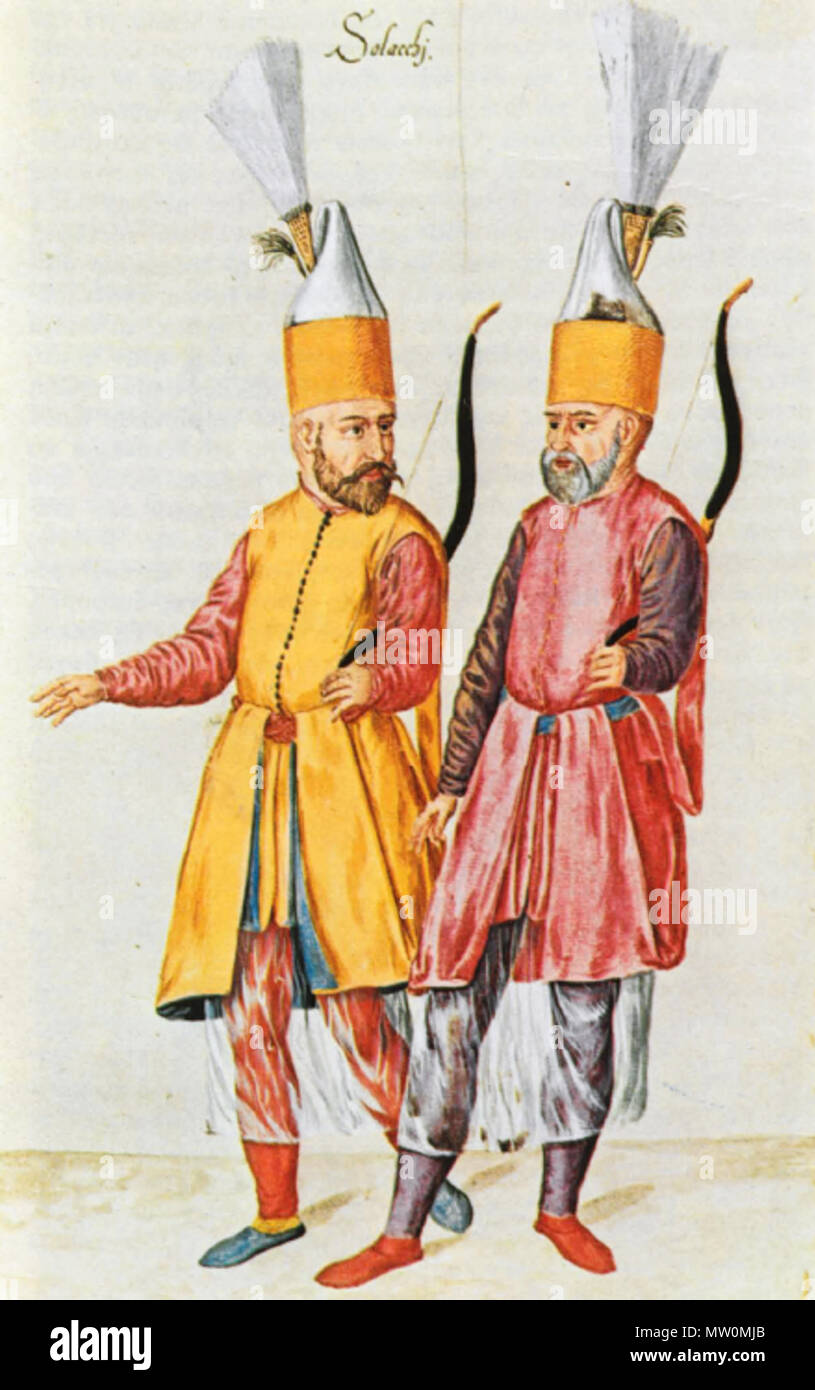 . English: Two members of the select Solaks guard (Janissary archers) of the Ottoman Sultans . 15 June 2011. Unknown, early 16th-century artist 566 Solaks Stock Photohttps://www.alamy.com/image-license-details/?v=1https://www.alamy.com/english-two-members-of-the-select-solaks-guard-janissary-archers-of-the-ottoman-sultans-15-june-2011-unknown-early-16th-century-artist-566-solaks-image187486275.html
. English: Two members of the select Solaks guard (Janissary archers) of the Ottoman Sultans . 15 June 2011. Unknown, early 16th-century artist 566 Solaks Stock Photohttps://www.alamy.com/image-license-details/?v=1https://www.alamy.com/english-two-members-of-the-select-solaks-guard-janissary-archers-of-the-ottoman-sultans-15-june-2011-unknown-early-16th-century-artist-566-solaks-image187486275.htmlRMMW0MJB–. English: Two members of the select Solaks guard (Janissary archers) of the Ottoman Sultans . 15 June 2011. Unknown, early 16th-century artist 566 Solaks
 Ottoman Sultans turbeh (tombs) in St. Sophia, Istanbul Turkey Stock Photohttps://www.alamy.com/image-license-details/?v=1https://www.alamy.com/stock-photo-ottoman-sultans-turbeh-tombs-in-st-sophia-istanbul-turkey-27754437.html
Ottoman Sultans turbeh (tombs) in St. Sophia, Istanbul Turkey Stock Photohttps://www.alamy.com/image-license-details/?v=1https://www.alamy.com/stock-photo-ottoman-sultans-turbeh-tombs-in-st-sophia-istanbul-turkey-27754437.htmlRFBH491W–Ottoman Sultans turbeh (tombs) in St. Sophia, Istanbul Turkey
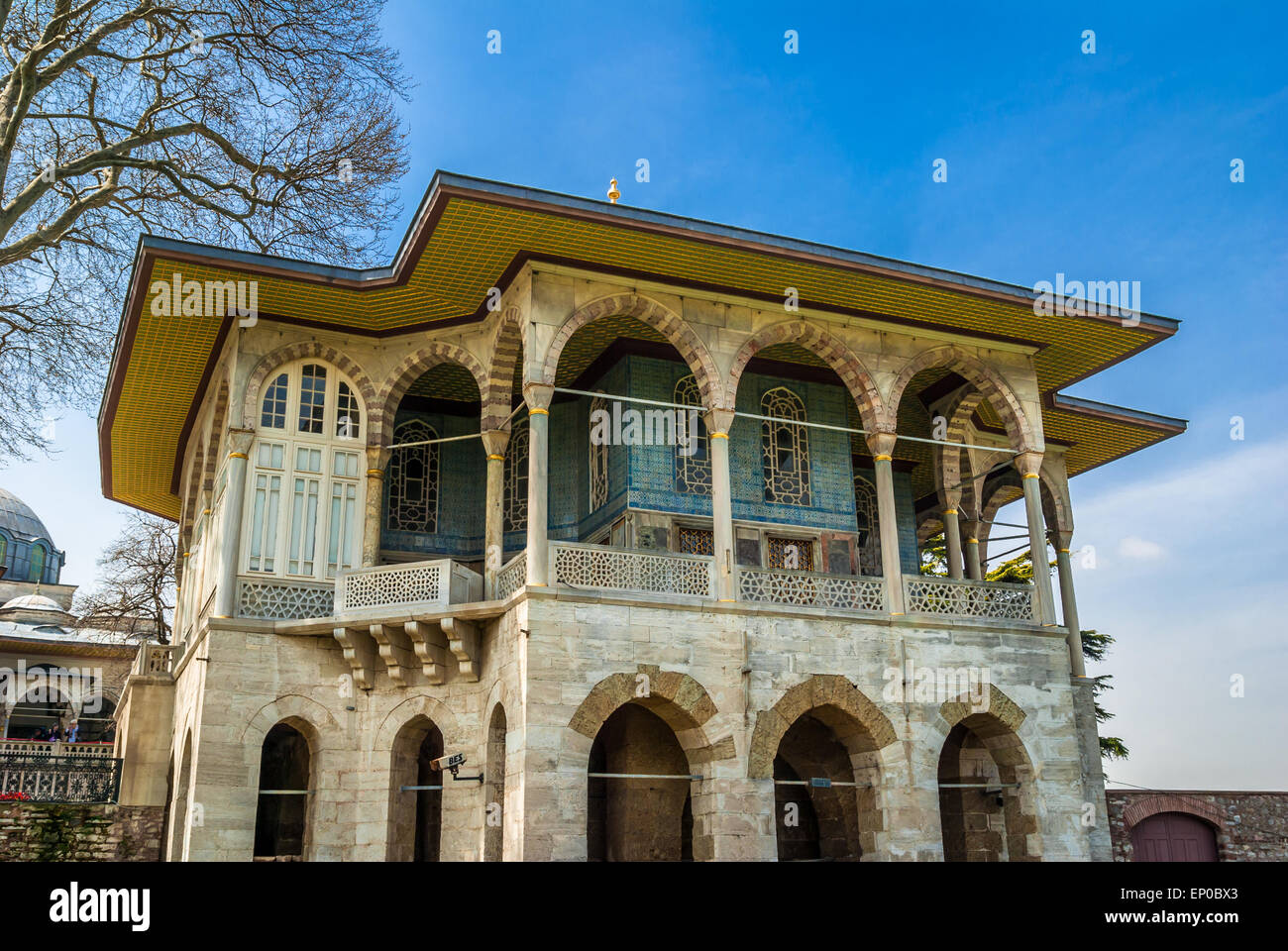 Topkapi Palace, Istanbul, Turkey Topkapi Palace was the primary residence of the Ottoman sultans for approximately 400 years Stock Photohttps://www.alamy.com/image-license-details/?v=1https://www.alamy.com/stock-photo-topkapi-palace-istanbul-turkey-topkapi-palace-was-the-primary-residence-82373259.html
Topkapi Palace, Istanbul, Turkey Topkapi Palace was the primary residence of the Ottoman sultans for approximately 400 years Stock Photohttps://www.alamy.com/image-license-details/?v=1https://www.alamy.com/stock-photo-topkapi-palace-istanbul-turkey-topkapi-palace-was-the-primary-residence-82373259.htmlRFEP0BX3–Topkapi Palace, Istanbul, Turkey Topkapi Palace was the primary residence of the Ottoman sultans for approximately 400 years
 Istanbul, Turkey. 27th Sep, 2021. A visitor views exhibits at the Beykoz Crystal and Glass Museum in Istanbul, Turkey, on Sept. 27, 2021. A magnificent dining table embellished with unique examples of fine glass art from several European manufacturers, reflecting the power of the Ottoman sultans, is on display at the museum. Credit: Osman Orsal/Xinhua/Alamy Live News Stock Photohttps://www.alamy.com/image-license-details/?v=1https://www.alamy.com/istanbul-turkey-27th-sep-2021-a-visitor-views-exhibits-at-the-beykoz-crystal-and-glass-museum-in-istanbul-turkey-on-sept-27-2021-a-magnificent-dining-table-embellished-with-unique-examples-of-fine-glass-art-from-several-european-manufacturers-reflecting-the-power-of-the-ottoman-sultans-is-on-display-at-the-museum-credit-osman-orsalxinhuaalamy-live-news-image444459028.html
Istanbul, Turkey. 27th Sep, 2021. A visitor views exhibits at the Beykoz Crystal and Glass Museum in Istanbul, Turkey, on Sept. 27, 2021. A magnificent dining table embellished with unique examples of fine glass art from several European manufacturers, reflecting the power of the Ottoman sultans, is on display at the museum. Credit: Osman Orsal/Xinhua/Alamy Live News Stock Photohttps://www.alamy.com/image-license-details/?v=1https://www.alamy.com/istanbul-turkey-27th-sep-2021-a-visitor-views-exhibits-at-the-beykoz-crystal-and-glass-museum-in-istanbul-turkey-on-sept-27-2021-a-magnificent-dining-table-embellished-with-unique-examples-of-fine-glass-art-from-several-european-manufacturers-reflecting-the-power-of-the-ottoman-sultans-is-on-display-at-the-museum-credit-osman-orsalxinhuaalamy-live-news-image444459028.htmlRM2GR2T0M–Istanbul, Turkey. 27th Sep, 2021. A visitor views exhibits at the Beykoz Crystal and Glass Museum in Istanbul, Turkey, on Sept. 27, 2021. A magnificent dining table embellished with unique examples of fine glass art from several European manufacturers, reflecting the power of the Ottoman sultans, is on display at the museum. Credit: Osman Orsal/Xinhua/Alamy Live News
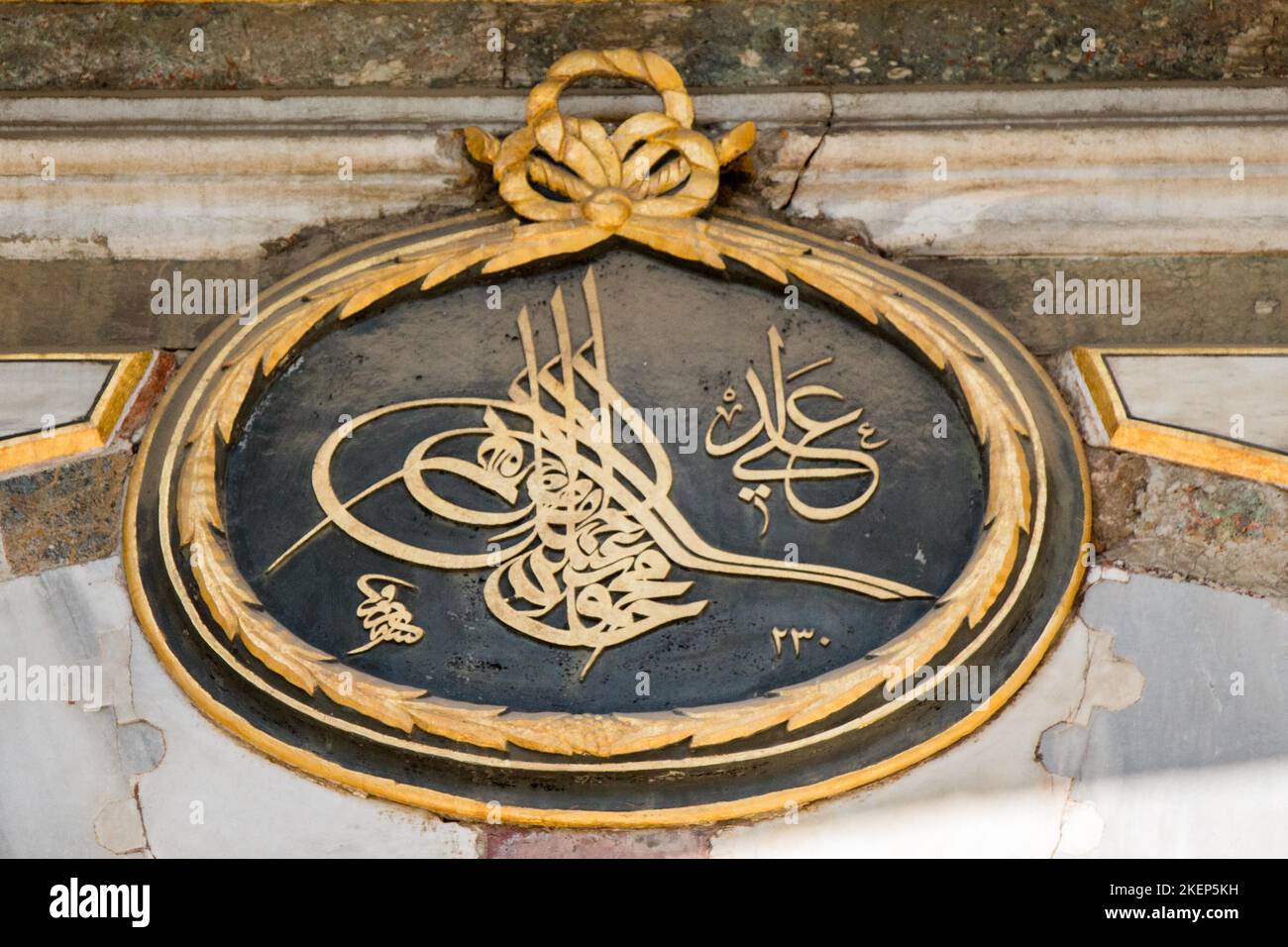 Artwork of traditional Ottoman Sultans Tugra Stock Photohttps://www.alamy.com/image-license-details/?v=1https://www.alamy.com/artwork-of-traditional-ottoman-sultans-tugra-image490982901.html
Artwork of traditional Ottoman Sultans Tugra Stock Photohttps://www.alamy.com/image-license-details/?v=1https://www.alamy.com/artwork-of-traditional-ottoman-sultans-tugra-image490982901.htmlRF2KEP5KH–Artwork of traditional Ottoman Sultans Tugra
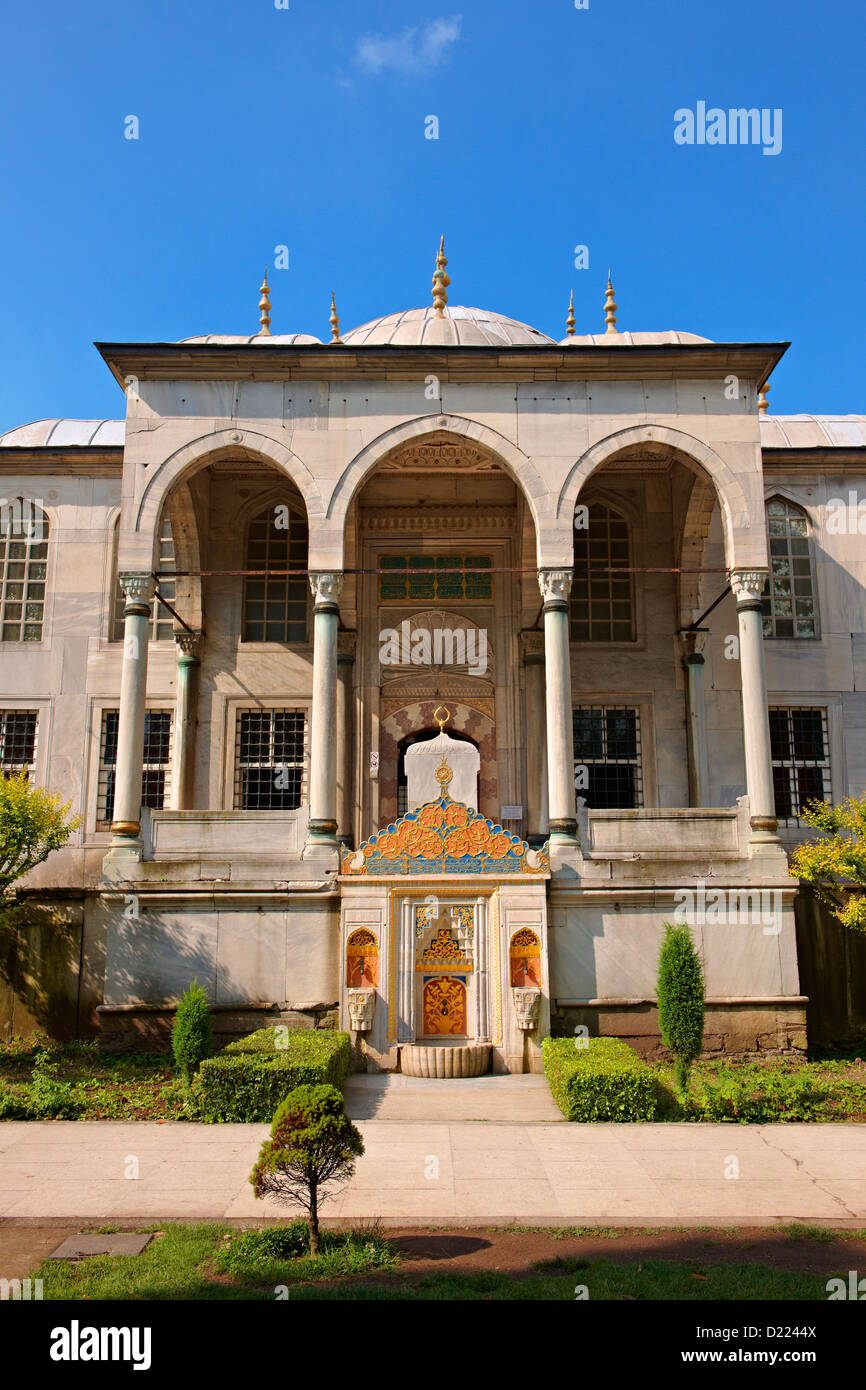 Enderûn Library Library of Sultan Ahmed III , Topkapi Palace Istanbul, Turkey Stock Photohttps://www.alamy.com/image-license-details/?v=1https://www.alamy.com/stock-photo-endern-library-library-of-sultan-ahmed-iii-topkapi-palace-istanbul-52907594.html
Enderûn Library Library of Sultan Ahmed III , Topkapi Palace Istanbul, Turkey Stock Photohttps://www.alamy.com/image-license-details/?v=1https://www.alamy.com/stock-photo-endern-library-library-of-sultan-ahmed-iii-topkapi-palace-istanbul-52907594.htmlRFD2244X–Enderûn Library Library of Sultan Ahmed III , Topkapi Palace Istanbul, Turkey
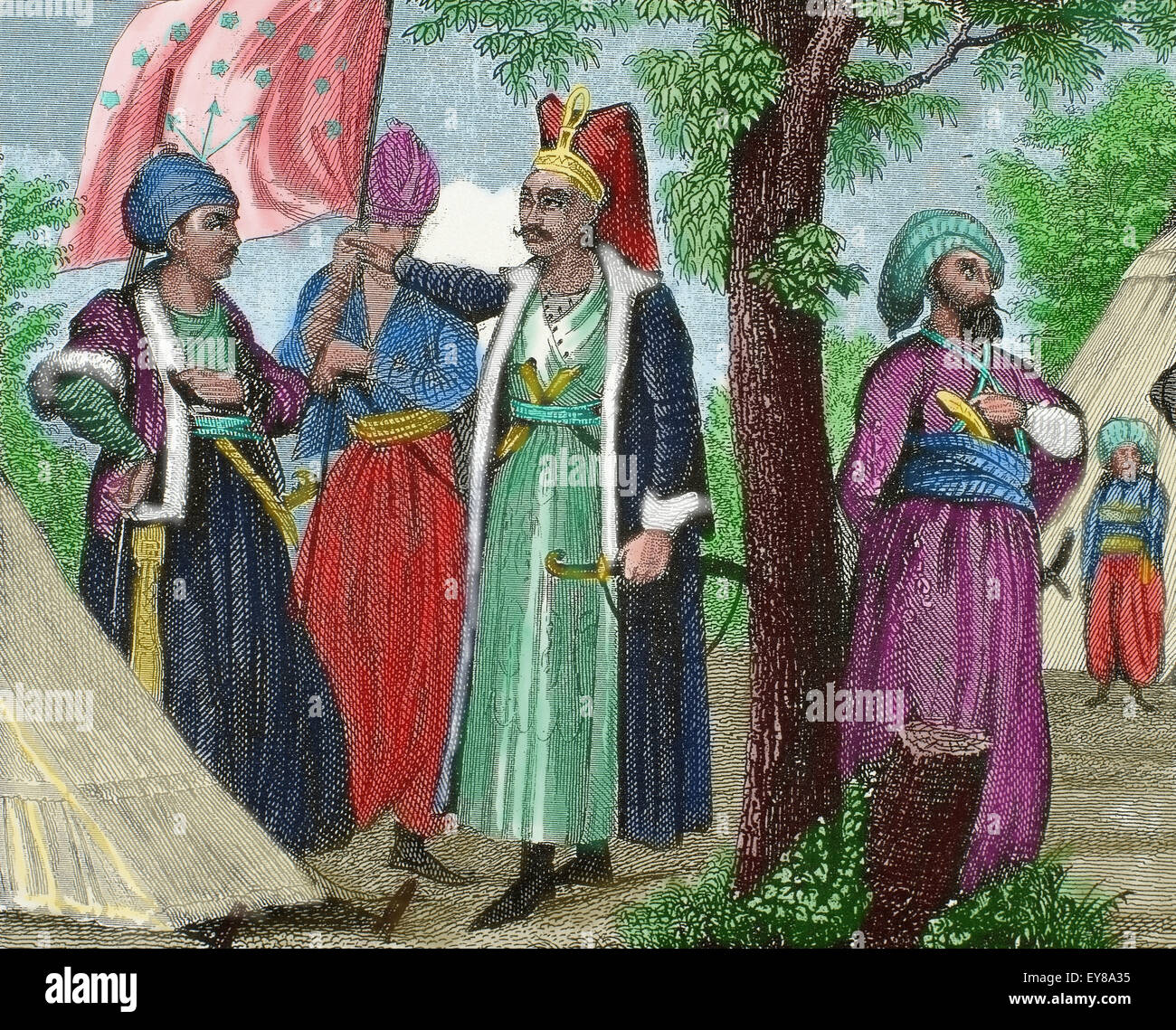 Janissaries. Elite infantry units that formed the Ottoman Sultan's household troops and bodyguards. Engraving. 19th century. Colored. Stock Photohttps://www.alamy.com/image-license-details/?v=1https://www.alamy.com/stock-photo-janissaries-elite-infantry-units-that-formed-the-ottoman-sultans-household-85620729.html
Janissaries. Elite infantry units that formed the Ottoman Sultan's household troops and bodyguards. Engraving. 19th century. Colored. Stock Photohttps://www.alamy.com/image-license-details/?v=1https://www.alamy.com/stock-photo-janissaries-elite-infantry-units-that-formed-the-ottoman-sultans-household-85620729.htmlRMEY8A35–Janissaries. Elite infantry units that formed the Ottoman Sultan's household troops and bodyguards. Engraving. 19th century. Colored.
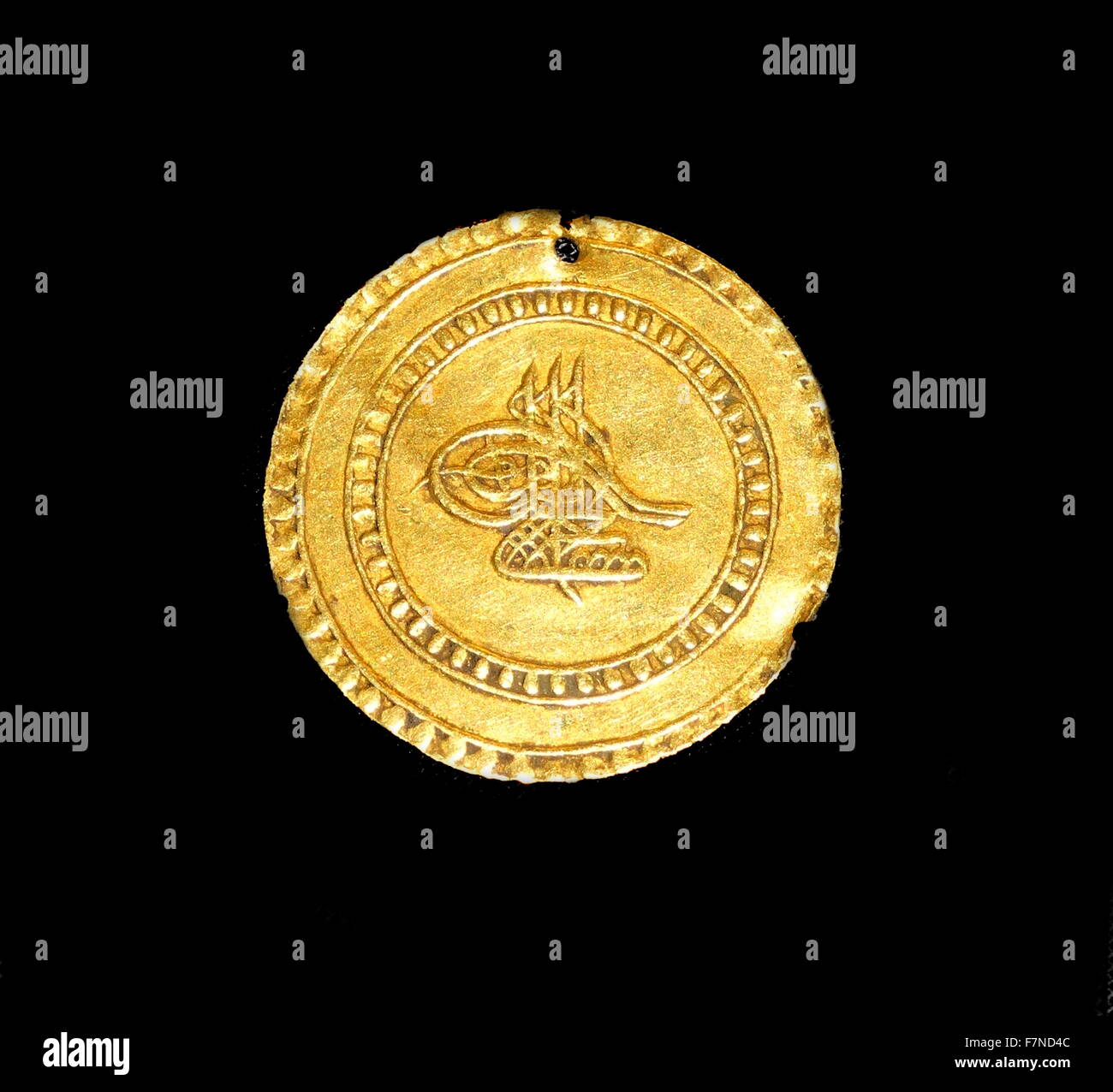 Gold Ottoman coin, Constantinople (Istanbul, Turkey), 1757. Ottoman Sultans used an elaborate signature, called the Tugra, to represent themselves on their coins. The Tugra was used as the imperial signature of the Sultan Stock Photohttps://www.alamy.com/image-license-details/?v=1https://www.alamy.com/stock-photo-gold-ottoman-coin-constantinople-istanbul-turkey-1757-ottoman-sultans-90825740.html
Gold Ottoman coin, Constantinople (Istanbul, Turkey), 1757. Ottoman Sultans used an elaborate signature, called the Tugra, to represent themselves on their coins. The Tugra was used as the imperial signature of the Sultan Stock Photohttps://www.alamy.com/image-license-details/?v=1https://www.alamy.com/stock-photo-gold-ottoman-coin-constantinople-istanbul-turkey-1757-ottoman-sultans-90825740.htmlRMF7ND4C–Gold Ottoman coin, Constantinople (Istanbul, Turkey), 1757. Ottoman Sultans used an elaborate signature, called the Tugra, to represent themselves on their coins. The Tugra was used as the imperial signature of the Sultan
 Ottoman sultan's boat waiting in front of the castle walls Stock Photohttps://www.alamy.com/image-license-details/?v=1https://www.alamy.com/ottoman-sultans-boat-waiting-in-front-of-the-castle-walls-image434223974.html
Ottoman sultan's boat waiting in front of the castle walls Stock Photohttps://www.alamy.com/image-license-details/?v=1https://www.alamy.com/ottoman-sultans-boat-waiting-in-front-of-the-castle-walls-image434223974.htmlRF2G6CH32–Ottoman sultan's boat waiting in front of the castle walls
 ISTANBUL, Turkey / Türkiye — The tomb of Sultan Selim II (reign 1566-1574) in which the Sultan, his wife Nurbana Sultan, along with other family members, including sons and daughters, are buried. It was the first tomb constructed in the Hagia Sophia cemetery. Designed by Architect Sinan in 1577, it features and octagonal plan with two domes and is decorated with Iznik tiles and calligraphy inscriptions. The cemetery of Hagia Sophia, next to the main building, contains five tombs belonging to Ottoman Sultans and their family members. Stock Photohttps://www.alamy.com/image-license-details/?v=1https://www.alamy.com/stock-photo-istanbul-turkey-trkiye-the-tomb-of-sultan-selim-ii-reign-1566-1574-78523722.html
ISTANBUL, Turkey / Türkiye — The tomb of Sultan Selim II (reign 1566-1574) in which the Sultan, his wife Nurbana Sultan, along with other family members, including sons and daughters, are buried. It was the first tomb constructed in the Hagia Sophia cemetery. Designed by Architect Sinan in 1577, it features and octagonal plan with two domes and is decorated with Iznik tiles and calligraphy inscriptions. The cemetery of Hagia Sophia, next to the main building, contains five tombs belonging to Ottoman Sultans and their family members. Stock Photohttps://www.alamy.com/image-license-details/?v=1https://www.alamy.com/stock-photo-istanbul-turkey-trkiye-the-tomb-of-sultan-selim-ii-reign-1566-1574-78523722.htmlRMEFN1PJ–ISTANBUL, Turkey / Türkiye — The tomb of Sultan Selim II (reign 1566-1574) in which the Sultan, his wife Nurbana Sultan, along with other family members, including sons and daughters, are buried. It was the first tomb constructed in the Hagia Sophia cemetery. Designed by Architect Sinan in 1577, it features and octagonal plan with two domes and is decorated with Iznik tiles and calligraphy inscriptions. The cemetery of Hagia Sophia, next to the main building, contains five tombs belonging to Ottoman Sultans and their family members.
 The Topkapi Palace is a large palace in Istanbul, Turkey Stock Photohttps://www.alamy.com/image-license-details/?v=1https://www.alamy.com/stock-photo-the-topkapi-palace-is-a-large-palace-in-istanbul-turkey-56239870.html
The Topkapi Palace is a large palace in Istanbul, Turkey Stock Photohttps://www.alamy.com/image-license-details/?v=1https://www.alamy.com/stock-photo-the-topkapi-palace-is-a-large-palace-in-istanbul-turkey-56239870.htmlRFD7DXEP–The Topkapi Palace is a large palace in Istanbul, Turkey
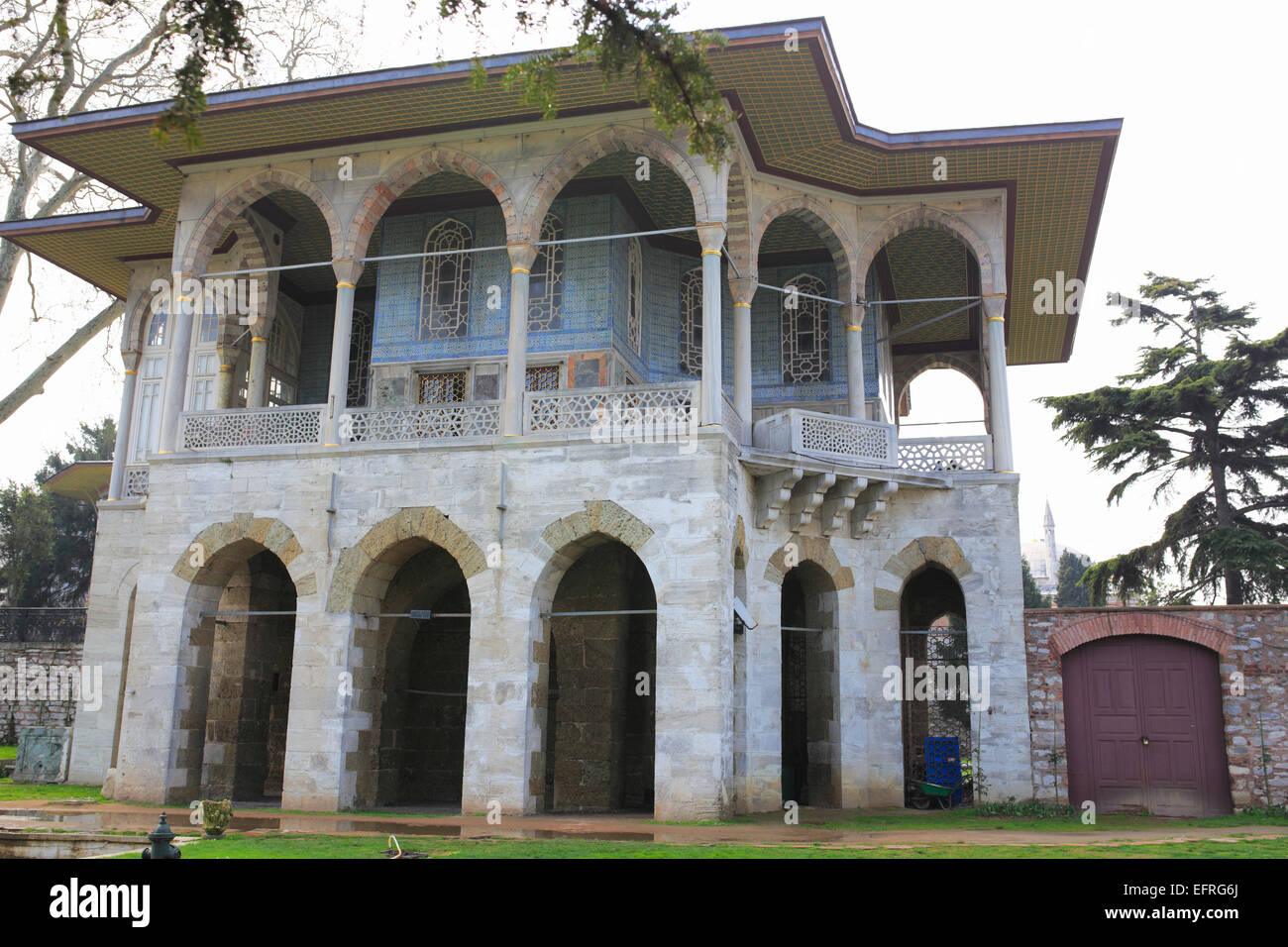 Revan Kiosk, Topkapi Palace, Ottoman sultans palace, Istanbul, Turkey Stock Photohttps://www.alamy.com/image-license-details/?v=1https://www.alamy.com/stock-photo-revan-kiosk-topkapi-palace-ottoman-sultans-palace-istanbul-turkey-78578938.html
Revan Kiosk, Topkapi Palace, Ottoman sultans palace, Istanbul, Turkey Stock Photohttps://www.alamy.com/image-license-details/?v=1https://www.alamy.com/stock-photo-revan-kiosk-topkapi-palace-ottoman-sultans-palace-istanbul-turkey-78578938.htmlRMEFRG6J–Revan Kiosk, Topkapi Palace, Ottoman sultans palace, Istanbul, Turkey
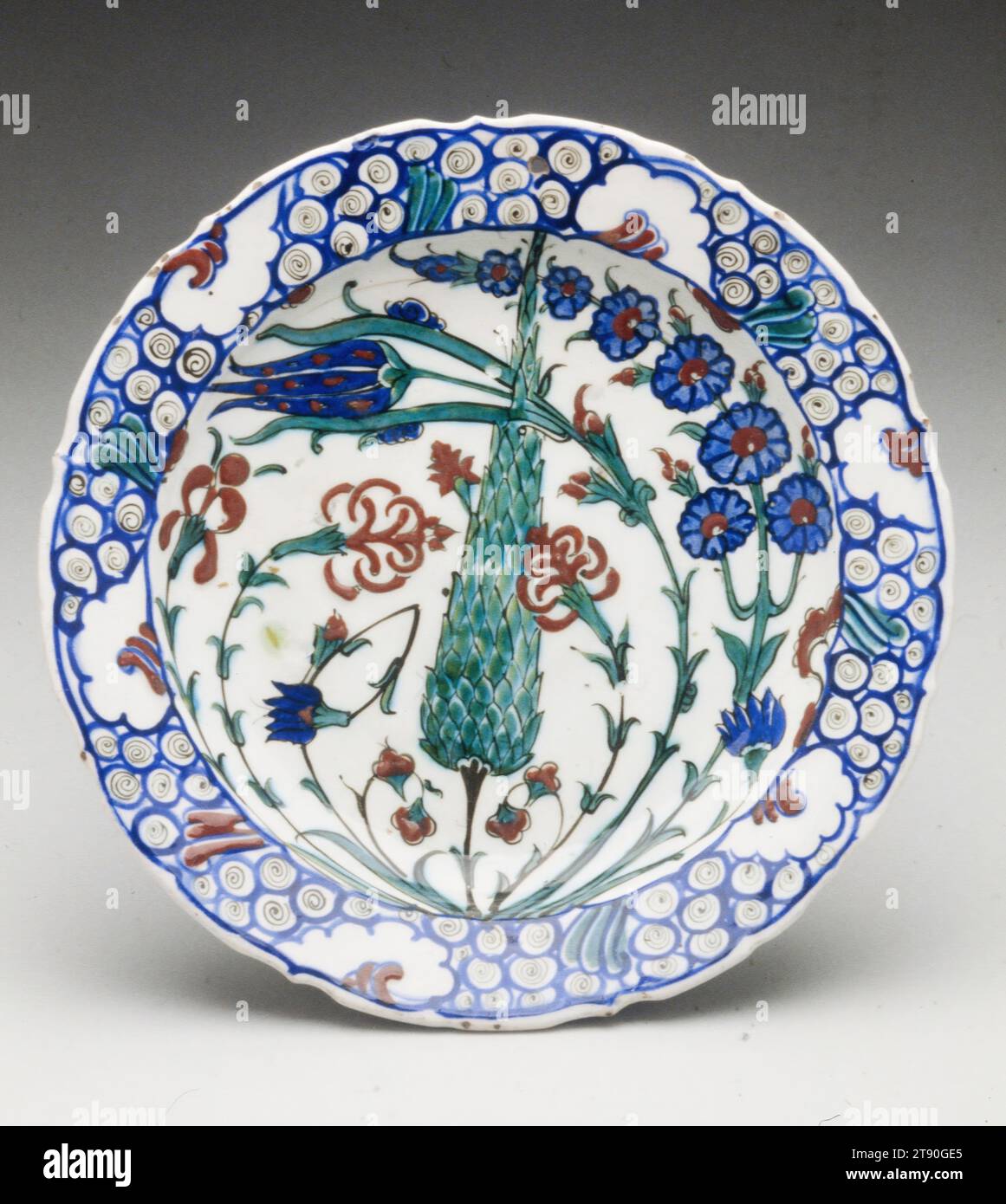 Plate, 16th century, 11 3/8 in. (28.89 cm), Iznik ware Slip-coated earthenware with blue, red and green pigments under a clear glaze,, Turkey, 16th century, This brilliant plate exemplifies the Ottomans' successful attempt at polychromy, in which a clear white body (tin-glazed earthenware) forms the ground for bright blue, green, and red underglaze motifs. The foliate rim is decorated in a stylized wave pattern ultimately based on a Chinese prototype. Because Ottoman sultans amassed large collections of Chinese ceramics, imported wares naturally influenced local production. Stock Photohttps://www.alamy.com/image-license-details/?v=1https://www.alamy.com/plate-16th-century-11-38-in-2889-cm-iznik-ware-slip-coated-earthenware-with-blue-red-and-green-pigments-under-a-clear-glaze-turkey-16th-century-this-brilliant-plate-exemplifies-the-ottomans-successful-attempt-at-polychromy-in-which-a-clear-white-body-tin-glazed-earthenware-forms-the-ground-for-bright-blue-green-and-red-underglaze-motifs-the-foliate-rim-is-decorated-in-a-stylized-wave-pattern-ultimately-based-on-a-chinese-prototype-because-ottoman-sultans-amassed-large-collections-of-chinese-ceramics-imported-wares-naturally-influenced-local-production-image573486989.html
Plate, 16th century, 11 3/8 in. (28.89 cm), Iznik ware Slip-coated earthenware with blue, red and green pigments under a clear glaze,, Turkey, 16th century, This brilliant plate exemplifies the Ottomans' successful attempt at polychromy, in which a clear white body (tin-glazed earthenware) forms the ground for bright blue, green, and red underglaze motifs. The foliate rim is decorated in a stylized wave pattern ultimately based on a Chinese prototype. Because Ottoman sultans amassed large collections of Chinese ceramics, imported wares naturally influenced local production. Stock Photohttps://www.alamy.com/image-license-details/?v=1https://www.alamy.com/plate-16th-century-11-38-in-2889-cm-iznik-ware-slip-coated-earthenware-with-blue-red-and-green-pigments-under-a-clear-glaze-turkey-16th-century-this-brilliant-plate-exemplifies-the-ottomans-successful-attempt-at-polychromy-in-which-a-clear-white-body-tin-glazed-earthenware-forms-the-ground-for-bright-blue-green-and-red-underglaze-motifs-the-foliate-rim-is-decorated-in-a-stylized-wave-pattern-ultimately-based-on-a-chinese-prototype-because-ottoman-sultans-amassed-large-collections-of-chinese-ceramics-imported-wares-naturally-influenced-local-production-image573486989.htmlRM2T90GE5–Plate, 16th century, 11 3/8 in. (28.89 cm), Iznik ware Slip-coated earthenware with blue, red and green pigments under a clear glaze,, Turkey, 16th century, This brilliant plate exemplifies the Ottomans' successful attempt at polychromy, in which a clear white body (tin-glazed earthenware) forms the ground for bright blue, green, and red underglaze motifs. The foliate rim is decorated in a stylized wave pattern ultimately based on a Chinese prototype. Because Ottoman sultans amassed large collections of Chinese ceramics, imported wares naturally influenced local production.
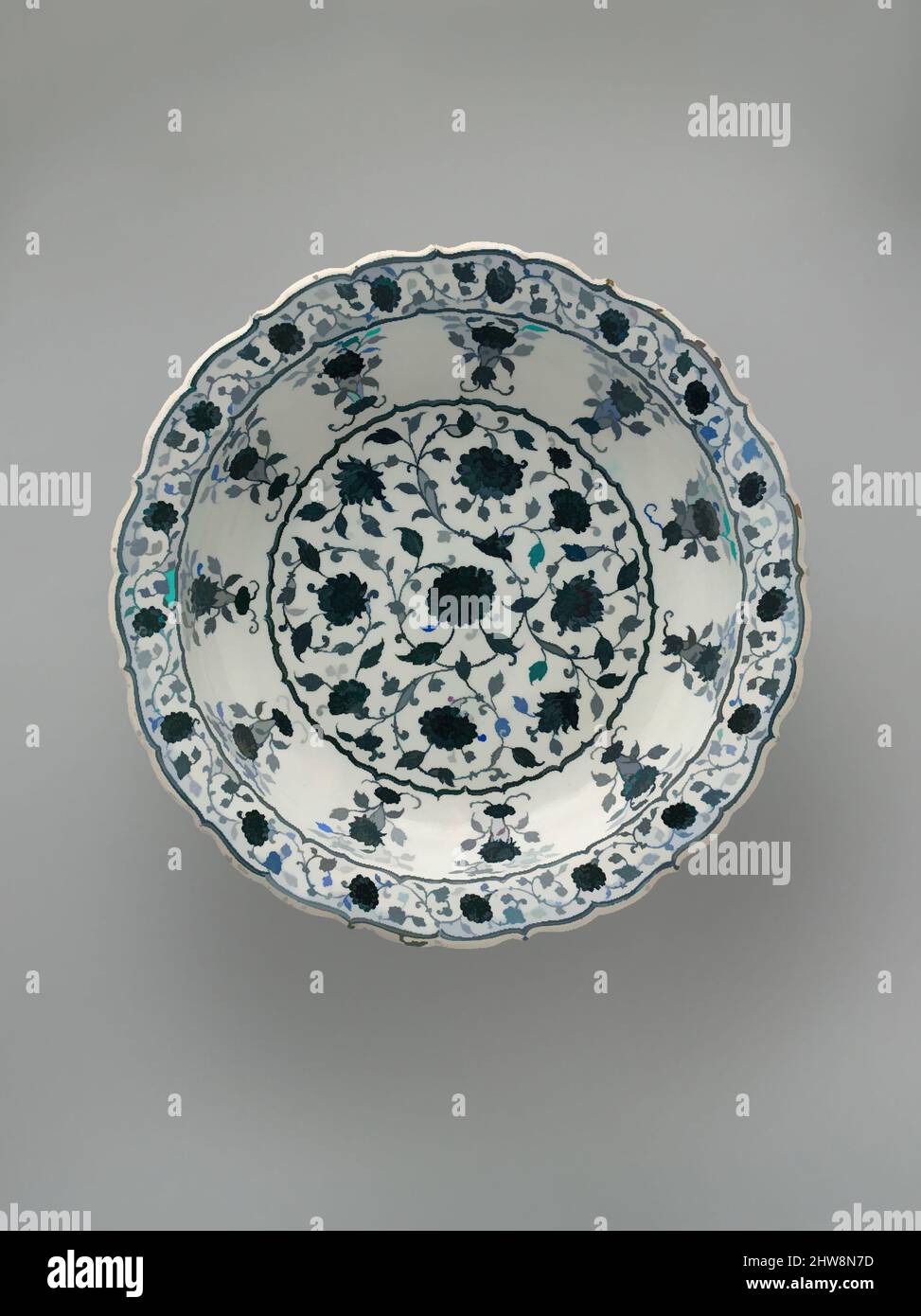 Art inspired by Footed Dish with Foliate Rim in Imitation of Chinese Porcelain, ca. 1570–80, Made in Turkey, Iznik, Stonepaste; polychrome painted in blue under a transparent glaze, H. 4 7/16in. (11.3 cm), Ceramics, Many Ottoman sultans were avid collectors of Chinese porcelains, and, Classic works modernized by Artotop with a splash of modernity. Shapes, color and value, eye-catching visual impact on art. Emotions through freedom of artworks in a contemporary way. A timeless message pursuing a wildly creative new direction. Artists turning to the digital medium and creating the Artotop NFT Stock Photohttps://www.alamy.com/image-license-details/?v=1https://www.alamy.com/art-inspired-by-footed-dish-with-foliate-rim-in-imitation-of-chinese-porcelain-ca-157080-made-in-turkey-iznik-stonepaste-polychrome-painted-in-blue-under-a-transparent-glaze-h-4-716in-113-cm-ceramics-many-ottoman-sultans-were-avid-collectors-of-chinese-porcelains-and-classic-works-modernized-by-artotop-with-a-splash-of-modernity-shapes-color-and-value-eye-catching-visual-impact-on-art-emotions-through-freedom-of-artworks-in-a-contemporary-way-a-timeless-message-pursuing-a-wildly-creative-new-direction-artists-turning-to-the-digital-medium-and-creating-the-artotop-nft-image463028257.html
Art inspired by Footed Dish with Foliate Rim in Imitation of Chinese Porcelain, ca. 1570–80, Made in Turkey, Iznik, Stonepaste; polychrome painted in blue under a transparent glaze, H. 4 7/16in. (11.3 cm), Ceramics, Many Ottoman sultans were avid collectors of Chinese porcelains, and, Classic works modernized by Artotop with a splash of modernity. Shapes, color and value, eye-catching visual impact on art. Emotions through freedom of artworks in a contemporary way. A timeless message pursuing a wildly creative new direction. Artists turning to the digital medium and creating the Artotop NFT Stock Photohttps://www.alamy.com/image-license-details/?v=1https://www.alamy.com/art-inspired-by-footed-dish-with-foliate-rim-in-imitation-of-chinese-porcelain-ca-157080-made-in-turkey-iznik-stonepaste-polychrome-painted-in-blue-under-a-transparent-glaze-h-4-716in-113-cm-ceramics-many-ottoman-sultans-were-avid-collectors-of-chinese-porcelains-and-classic-works-modernized-by-artotop-with-a-splash-of-modernity-shapes-color-and-value-eye-catching-visual-impact-on-art-emotions-through-freedom-of-artworks-in-a-contemporary-way-a-timeless-message-pursuing-a-wildly-creative-new-direction-artists-turning-to-the-digital-medium-and-creating-the-artotop-nft-image463028257.htmlRF2HW8N7D–Art inspired by Footed Dish with Foliate Rim in Imitation of Chinese Porcelain, ca. 1570–80, Made in Turkey, Iznik, Stonepaste; polychrome painted in blue under a transparent glaze, H. 4 7/16in. (11.3 cm), Ceramics, Many Ottoman sultans were avid collectors of Chinese porcelains, and, Classic works modernized by Artotop with a splash of modernity. Shapes, color and value, eye-catching visual impact on art. Emotions through freedom of artworks in a contemporary way. A timeless message pursuing a wildly creative new direction. Artists turning to the digital medium and creating the Artotop NFT
 Janissaries. Elite infantry units that formed the Ottoman Sultan's household troops and bodyguards. Engraving. 19th century. Stock Photohttps://www.alamy.com/image-license-details/?v=1https://www.alamy.com/janissaries-elite-infantry-units-that-formed-the-ottoman-sultans-household-troops-and-bodyguards-engraving-19th-century-image220226276.html
Janissaries. Elite infantry units that formed the Ottoman Sultan's household troops and bodyguards. Engraving. 19th century. Stock Photohttps://www.alamy.com/image-license-details/?v=1https://www.alamy.com/janissaries-elite-infantry-units-that-formed-the-ottoman-sultans-household-troops-and-bodyguards-engraving-19th-century-image220226276.htmlRMPP84T4–Janissaries. Elite infantry units that formed the Ottoman Sultan's household troops and bodyguards. Engraving. 19th century.
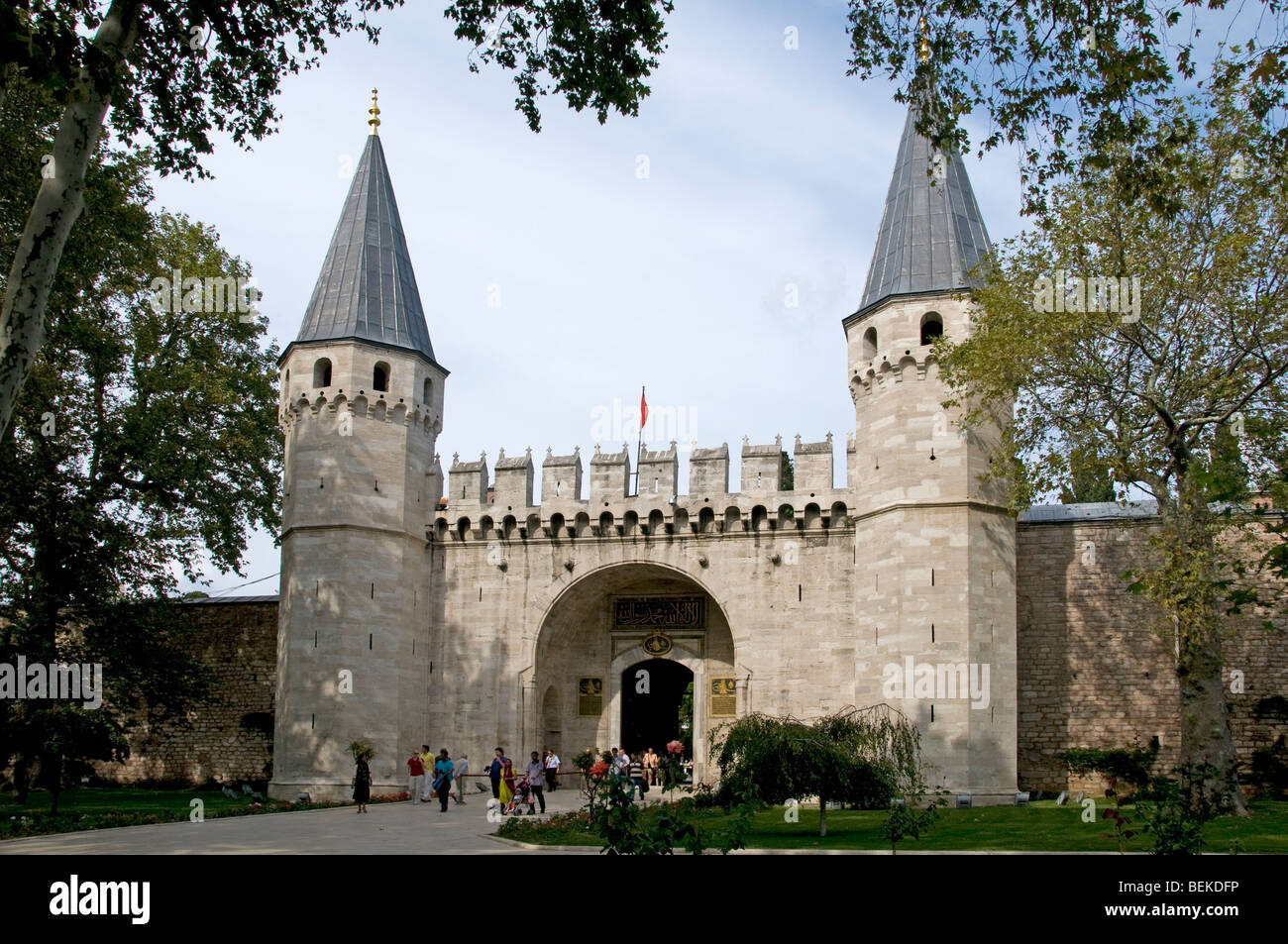 Topkapi Palace Museum Istanbul Turkey Ottoman Sultans Stock Photohttps://www.alamy.com/image-license-details/?v=1https://www.alamy.com/stock-photo-topkapi-palace-museum-istanbul-turkey-ottoman-sultans-26243274.html
Topkapi Palace Museum Istanbul Turkey Ottoman Sultans Stock Photohttps://www.alamy.com/image-license-details/?v=1https://www.alamy.com/stock-photo-topkapi-palace-museum-istanbul-turkey-ottoman-sultans-26243274.htmlRMBEKDFP–Topkapi Palace Museum Istanbul Turkey Ottoman Sultans
 The courtyard of Topkapi Palace, the primary residence of the Ottoman sultans for 400 years. Istanbul, Turkey Stock Photohttps://www.alamy.com/image-license-details/?v=1https://www.alamy.com/the-courtyard-of-topkapi-palace-the-primary-residence-of-the-ottoman-sultans-for-400-years-istanbul-turkey-image378583723.html
The courtyard of Topkapi Palace, the primary residence of the Ottoman sultans for 400 years. Istanbul, Turkey Stock Photohttps://www.alamy.com/image-license-details/?v=1https://www.alamy.com/the-courtyard-of-topkapi-palace-the-primary-residence-of-the-ottoman-sultans-for-400-years-istanbul-turkey-image378583723.htmlRF2CYWYB7–The courtyard of Topkapi Palace, the primary residence of the Ottoman sultans for 400 years. Istanbul, Turkey
 ISTANBUL, TURKEY - Ciragan Palace was once the palace of Ottoman sultans and is now a luxury hotel. Ornate exterior entrance with staircase Stock Photohttps://www.alamy.com/image-license-details/?v=1https://www.alamy.com/istanbul-turkey-ciragan-palace-was-once-the-palace-of-ottoman-sultans-and-is-now-a-luxury-hotel-ornate-exterior-entrance-with-staircase-image345761744.html
ISTANBUL, TURKEY - Ciragan Palace was once the palace of Ottoman sultans and is now a luxury hotel. Ornate exterior entrance with staircase Stock Photohttps://www.alamy.com/image-license-details/?v=1https://www.alamy.com/istanbul-turkey-ciragan-palace-was-once-the-palace-of-ottoman-sultans-and-is-now-a-luxury-hotel-ornate-exterior-entrance-with-staircase-image345761744.htmlRF2B2EPHM–ISTANBUL, TURKEY - Ciragan Palace was once the palace of Ottoman sultans and is now a luxury hotel. Ornate exterior entrance with staircase
 An armed Gendarmerie officer stands guard in Topkapı Palace Museum, or the Seraglio, which in the 15th century, served as the main residence and administrative headquarters of the Ottoman sultans located in Istanbul.Turkey Stock Photohttps://www.alamy.com/image-license-details/?v=1https://www.alamy.com/stock-photo-an-armed-gendarmerie-officer-stands-guard-in-topkap-palace-museum-52884557.html
An armed Gendarmerie officer stands guard in Topkapı Palace Museum, or the Seraglio, which in the 15th century, served as the main residence and administrative headquarters of the Ottoman sultans located in Istanbul.Turkey Stock Photohttps://www.alamy.com/image-license-details/?v=1https://www.alamy.com/stock-photo-an-armed-gendarmerie-officer-stands-guard-in-topkap-palace-museum-52884557.htmlRMD212P5–An armed Gendarmerie officer stands guard in Topkapı Palace Museum, or the Seraglio, which in the 15th century, served as the main residence and administrative headquarters of the Ottoman sultans located in Istanbul.Turkey